If you were to ask me to sum up chasing the Baja 1000 with Canguro Racing, I would most likely squint my eyes in concentration, think deeply about the 48 hours I was awake, and shake my head because that intense blur of actions and emotions are impossible to put into so few words.
What I can do is start from the top and share the experience step by step. When the documentary mini series that I helped produce with Koyo Productions for Toyota Canada comes out in February you’ll get a better feel for what happened, but you’ll still be missing the dust in the eyes and fumes of race fuel in your nostrils.
So what is the Baja 1000? It’s the longest point-to-point race in the world. The course takes place on the Baja Peninsula of Mexico and serpentines from Ensenada to La Paz over approximately 1000 miles. A variety of vehicles can enter the race. You’ll see everything from Trophy Trucks worth half a million dollars down to Class 11, unmodified pre-1982 VW Beetles.
To say that I didn’t know what I was getting into would be a gross understatement. Sure, I had seen the documentary Dust To Glory, I had even watched a very small portion of the 2013 Baja 1000 pass by a campsite near Gonzaga Bay, but based on my recent experience I really had no idea what it was going to be like to be part of the race. All I knew was that I wanted to be involved, so I did my best to make that happen.
This all started with an invitation from my long-time internet friend Dave Connors. Dave drove his Land Cruiser from Vancouver to Argentina a few years before we did a similar trip. Through the magic of the social media he had heard about the trip Ash and I did (and you already know about if you’re reading this blog post). The details are a bit fuzzy, but I made an offhand comment on Instagram about chasing the Baja 1000 with Canguro Racing, he then allowed me an open invitation, and then I let that thought percolate in my head for a couple of years.
Fast forward to summer of 2017. A few things came together so that I could check this one big item off my bucket list: to be part of the Score International Baja 1000.
One: I had made a marketing contact at Toyota Canada the previous year on our drive across Canada and they had mentioned they were looking for authentic content to share.
Two: My talented friends Aaron and Lindsay from Koyo Productions had time available in November to work together on a project.
Three: That open invite from Dave to join the Canguro Racing team was burning a hole in my brain.
Aaron, Lindsay, and I approached Toyota Canada with an idea (to film the entire journey from Toronto to La Paz), they loved it, Canguro was on board, and we were off. Ash had school commitments at home, so I kissed her goodbye and boarded a plane with my two friends. We picked up a new Toyota Tacoma TRD Sport from the TC headquarters in Toronto and then drove across the US to meet up with the team in Salt Lake City, UT. Our truck would be Chase 8, the chase truck with the least experience and therefore the least amount of responsibility. Did I mention that I hadn’t actually met Dave, let alone any of the other team until this point?
A week before the race we finally met up with Canguro Racing. We couldn’t have asked for a better team to share this experience with. Seriously. They welcomed us with open arms, were generous with their time, and always had some Sour Patch Kids to share when we needed a sugar hit. Trent hooked us up with chase truck decals and Ryan set us up with a HAM radio for communication during the race. Copy that! We were now in business! Well, we still didn’t know what we were doing but at least we had some of the tools to do the job.
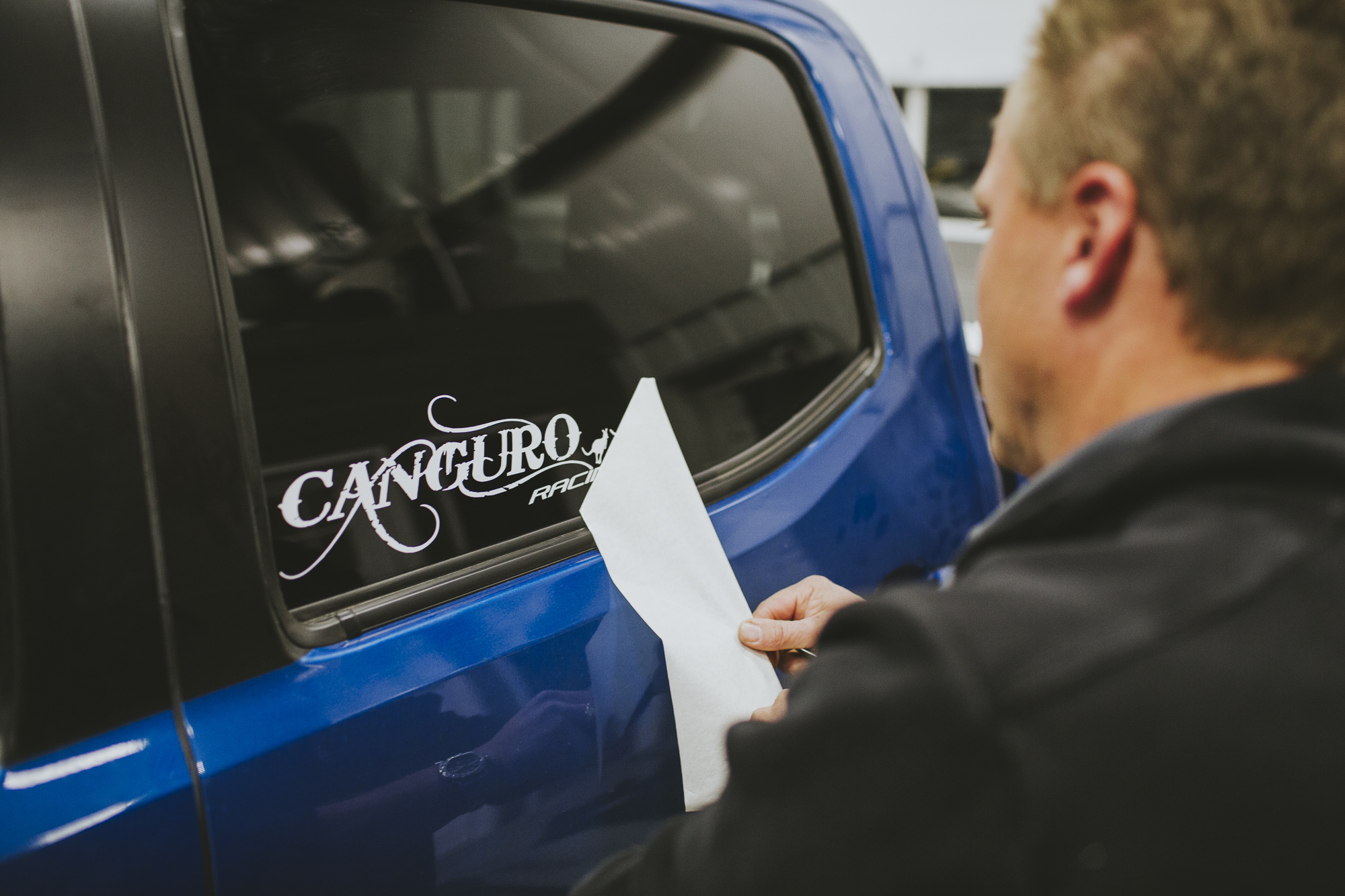

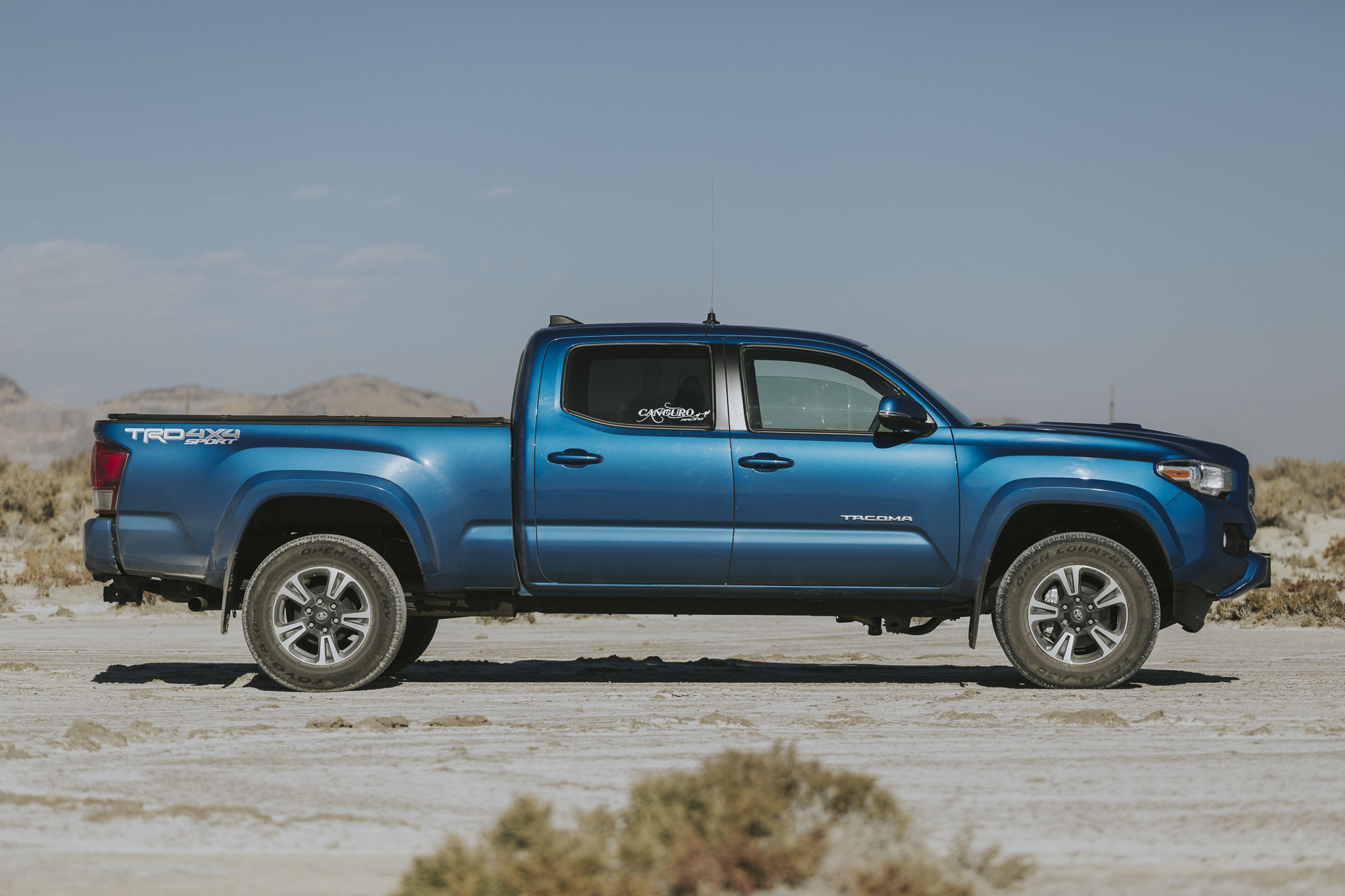

The second day at the shop was the first day that we were able to see Monica, the 2010 200 Series Toyota Land Cruiser. Damn, she looked good! There were a few things to finish up before race day so we stuck around the shop to help out where we could (cleaning roll cage tubing is helping), document the build, and meet a few more people from the team. A new King shock was installed in the rear, brand new 37″ BF Goodrich KR2s mounted, and the front bumper was reinstalled. These guys put in countless hours maintaining and tuning Monica so it was a privilege to be a part of the glory work just days before the race.
And then there was the unveiling of the new livery… a tribute to Ivan “Ironman” Stewart’s Toyota race trucks.
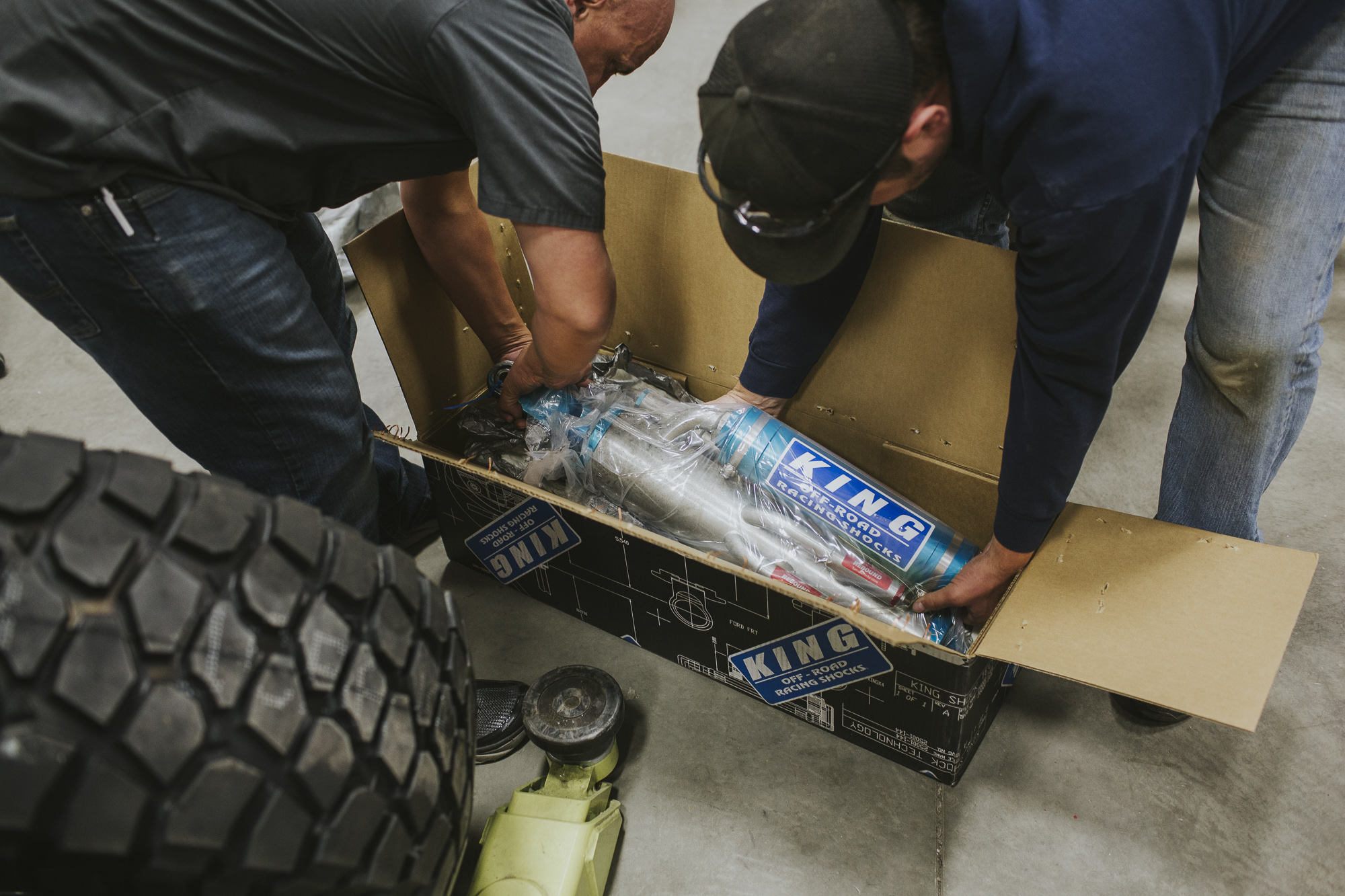
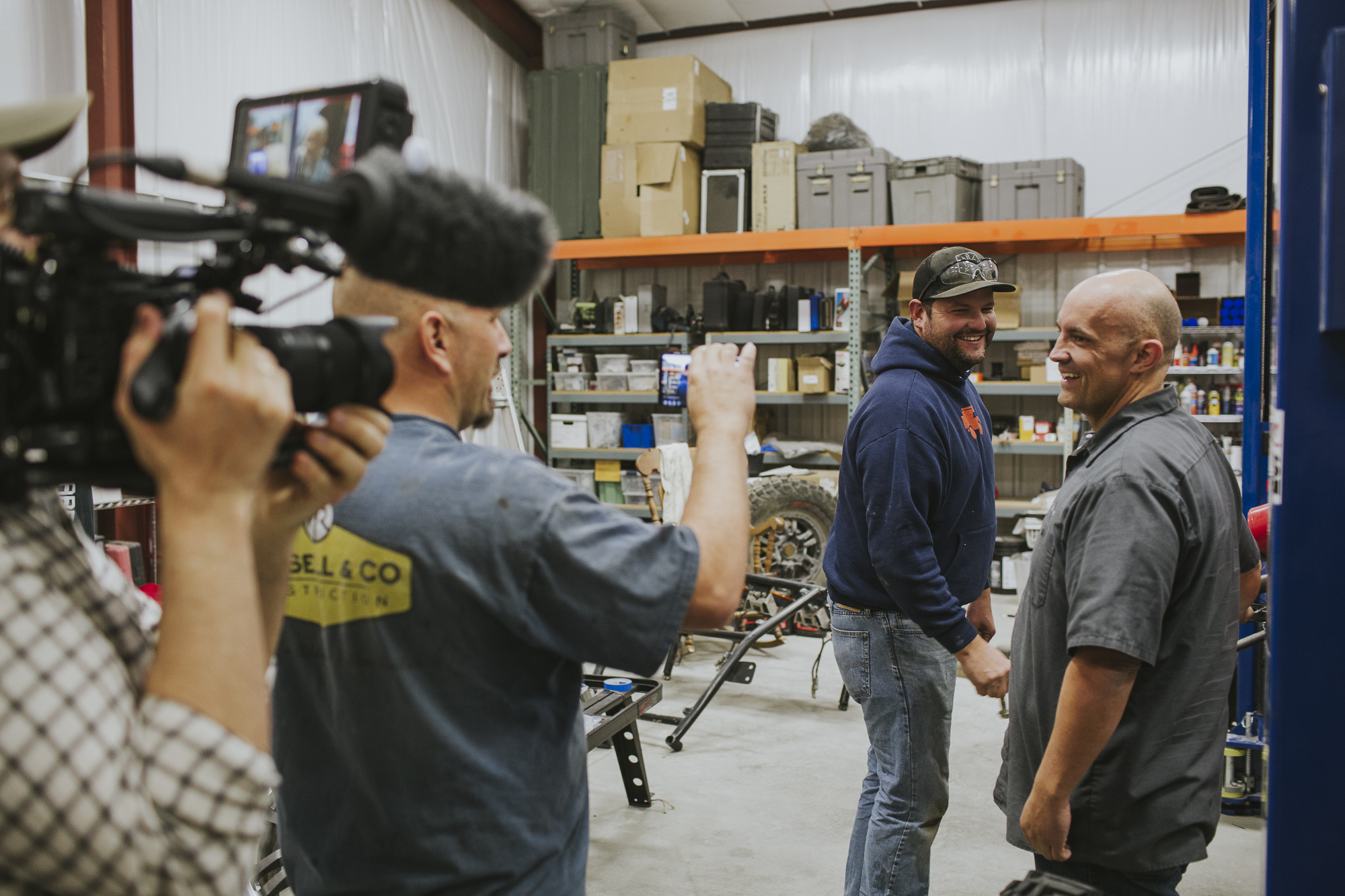
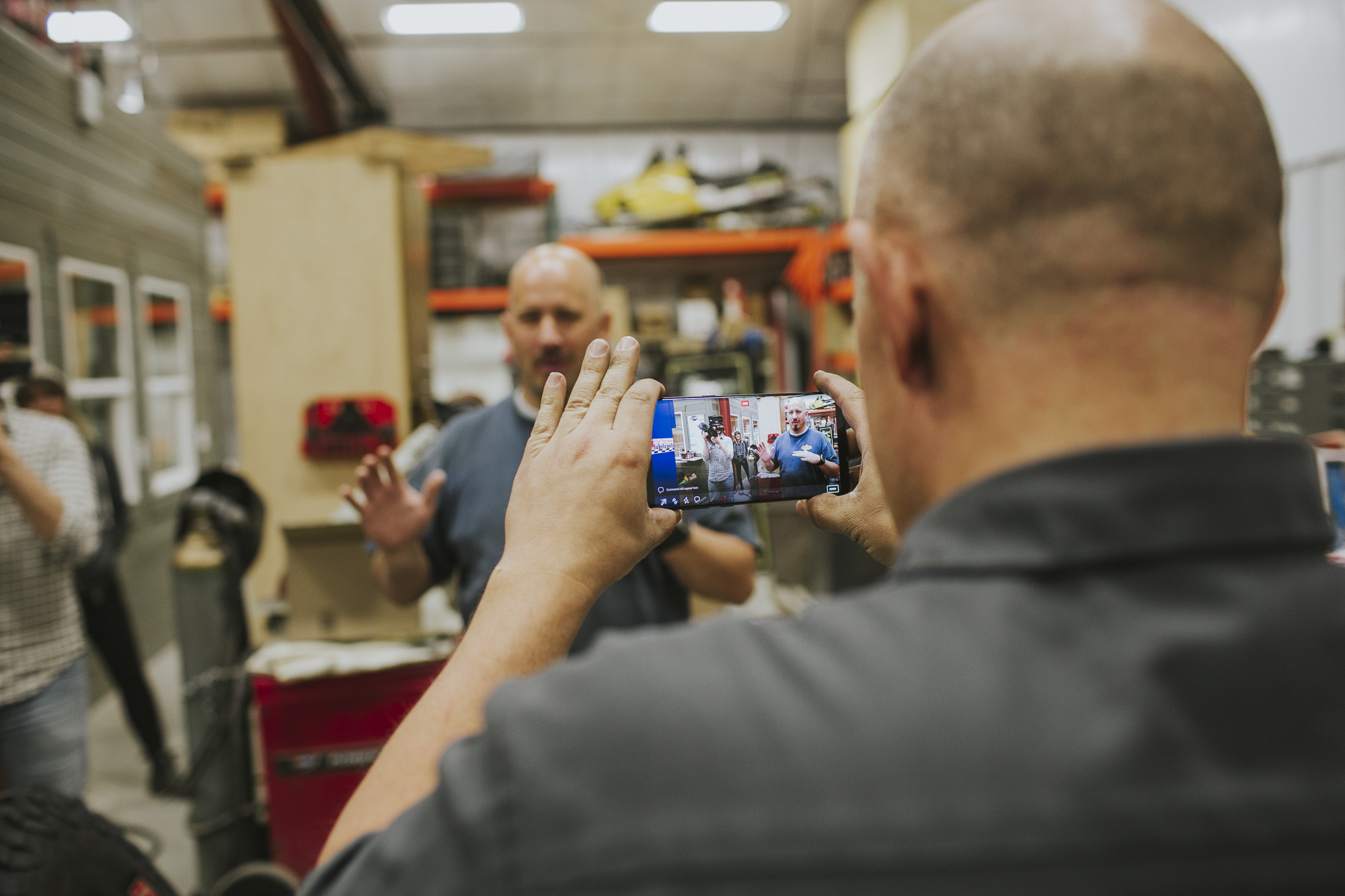
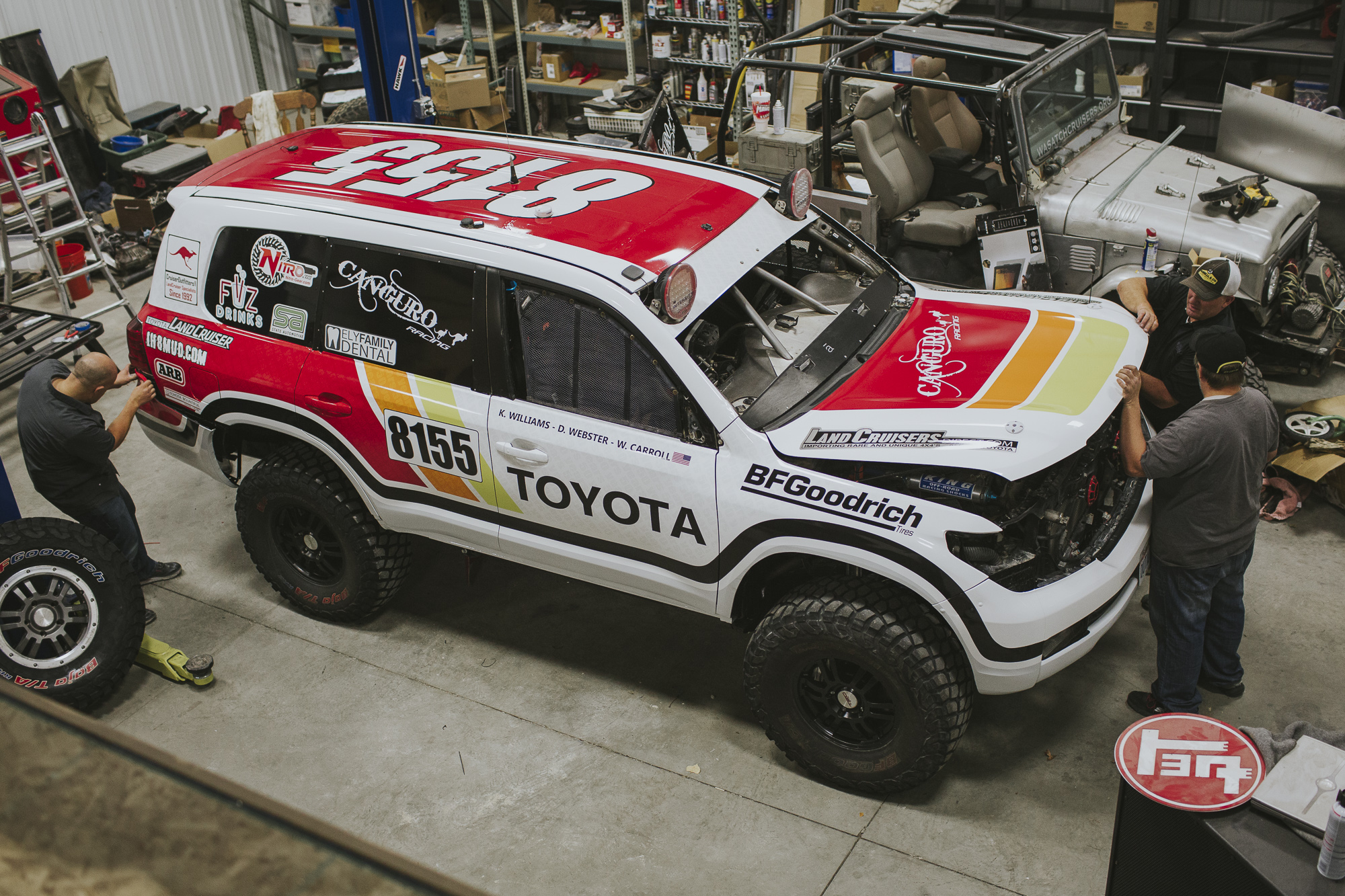
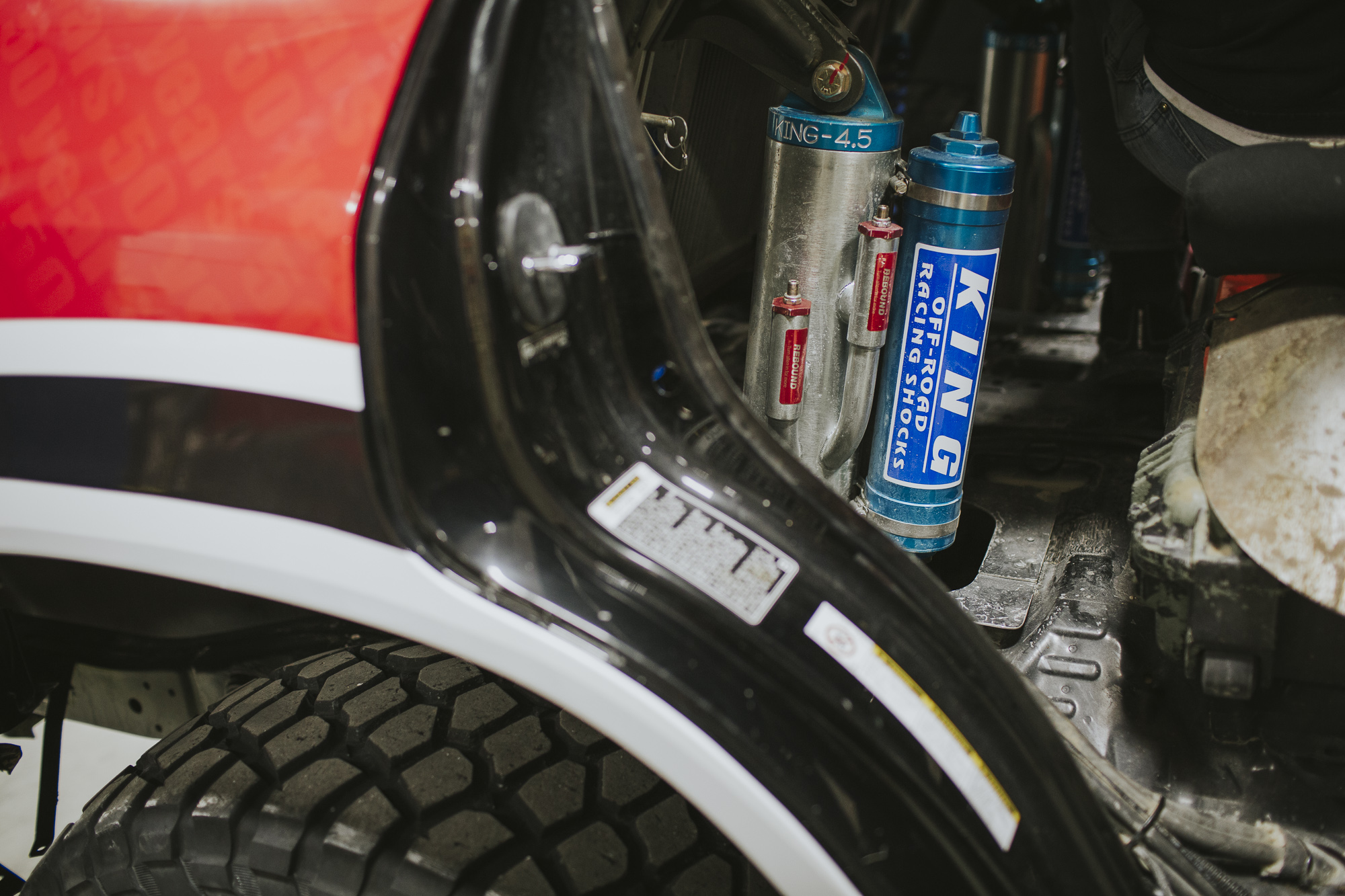
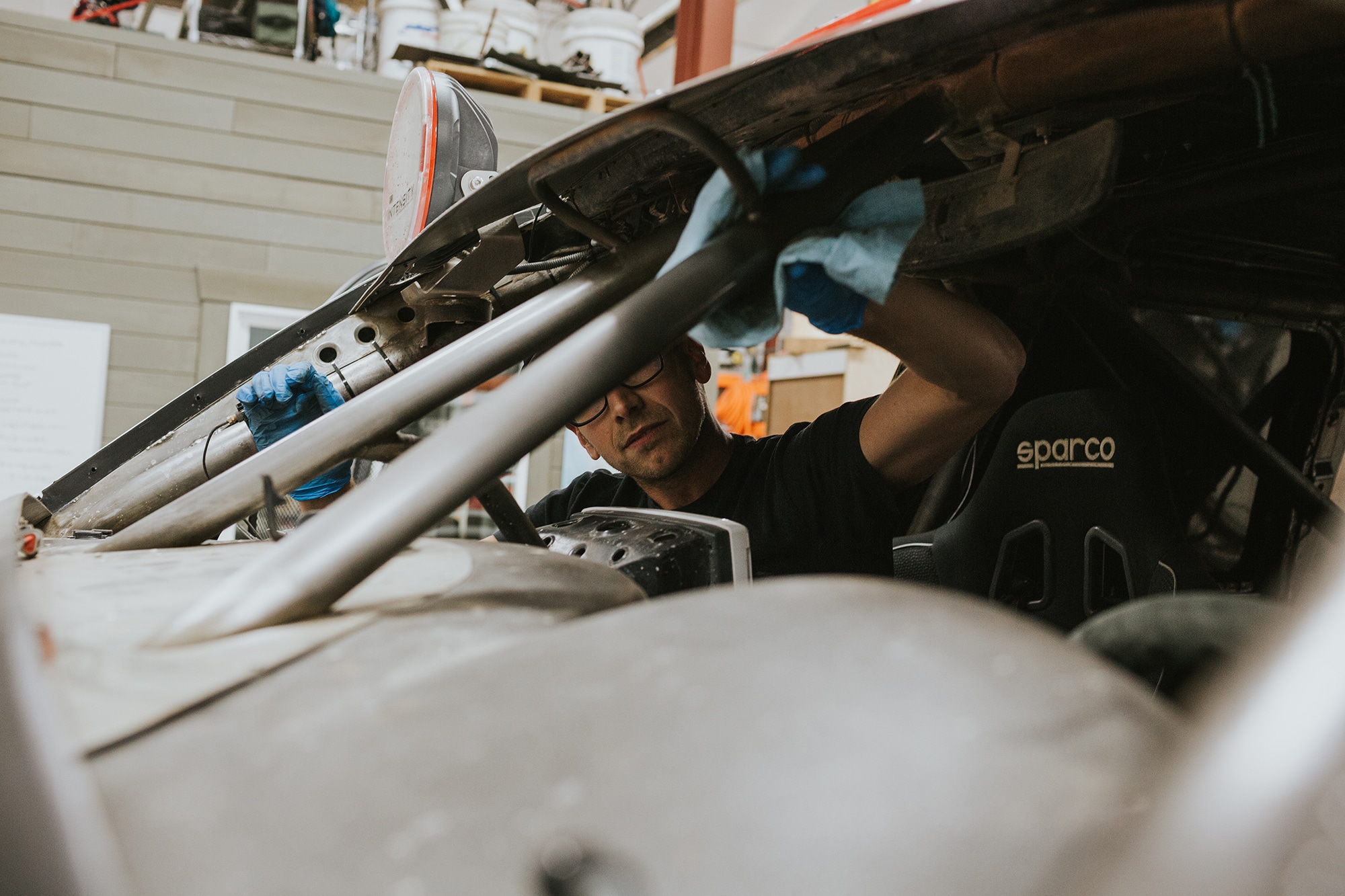


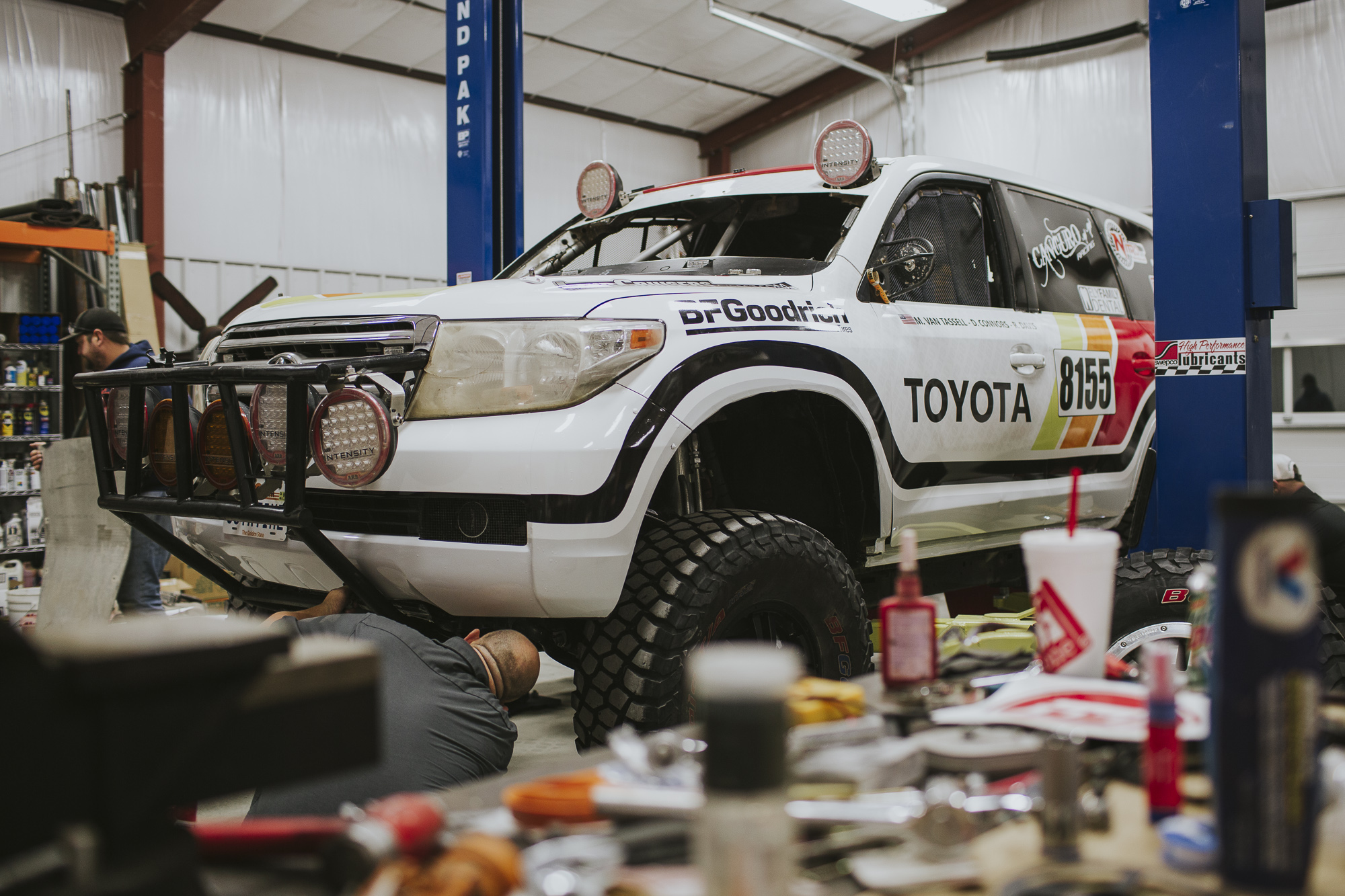




We said goodbye to Canguro for a few days and made tracks to Mexico. It had been four years since my trip to Baja with Ash so I was jonesing for some fish tacos in Ensenada. It is 100% worth the drive from Ontario to Fenix Tacos.
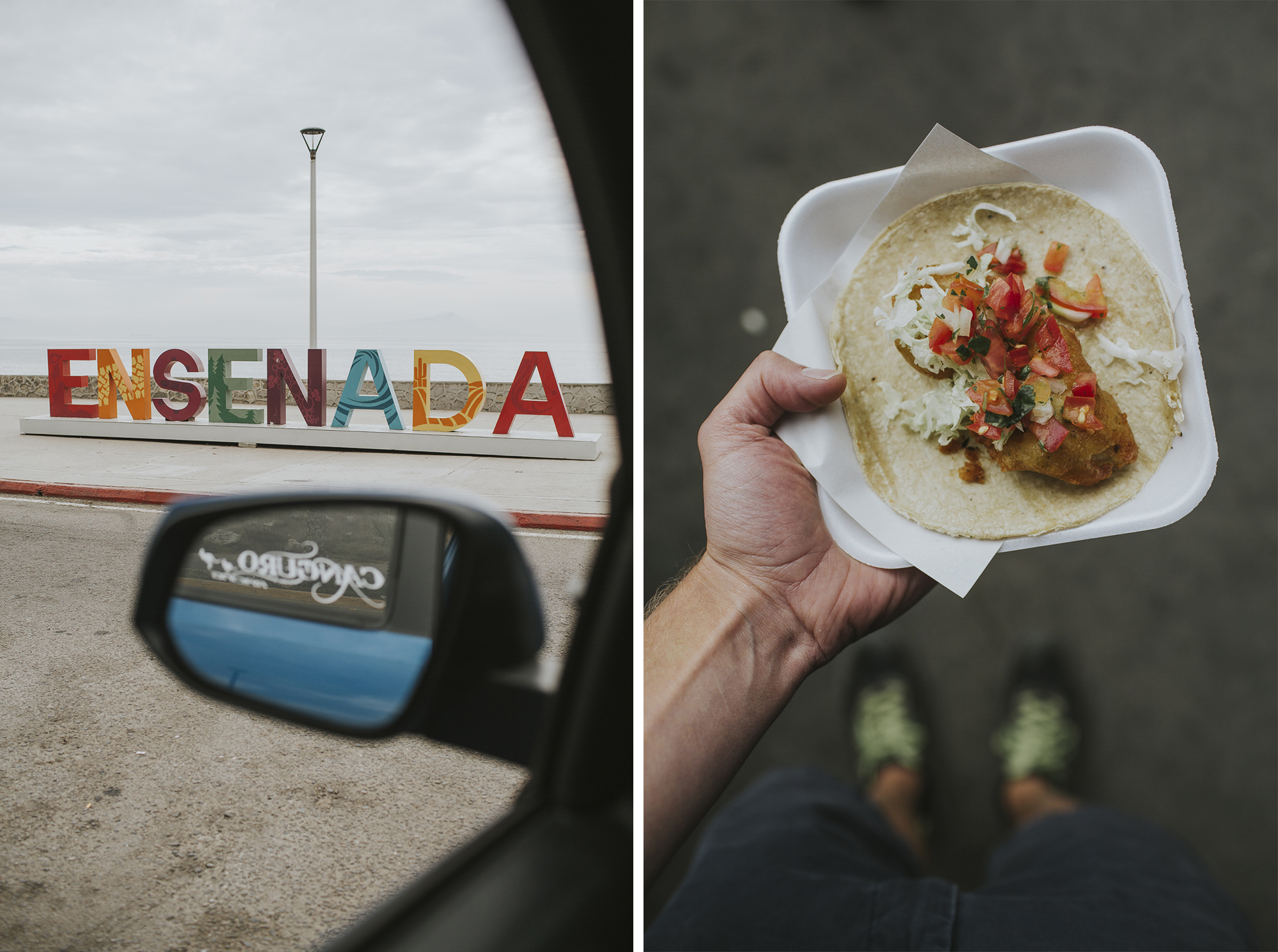

One of the things I had been looking forward to for years was to spend time in Ensenada for contingency. Think of this a very slow parade of high-powered high-dollar race vehicles throughout the city. It’s like your local car show, but with locals and tourists crammed into the streets shoulder to shoulder, music blaring every direction, mariachi bands, taco stands, and million dollar race cars stacked up in the streets like cordwood.
For a vehicle to race it has to be rolled through contingency (and then through tech inspection if it hasn’t been tech’d previously). That means that if you spend enough time in the streets, you’ll see every vehicle that will be racing. On day one (of two days) of contingency we stuck nice and close to Monica. It was fun to watch Mark in the truck handing out stickers to the locals, signing autographs, and generally soaking up the moment these guys had been waiting 364 days for.

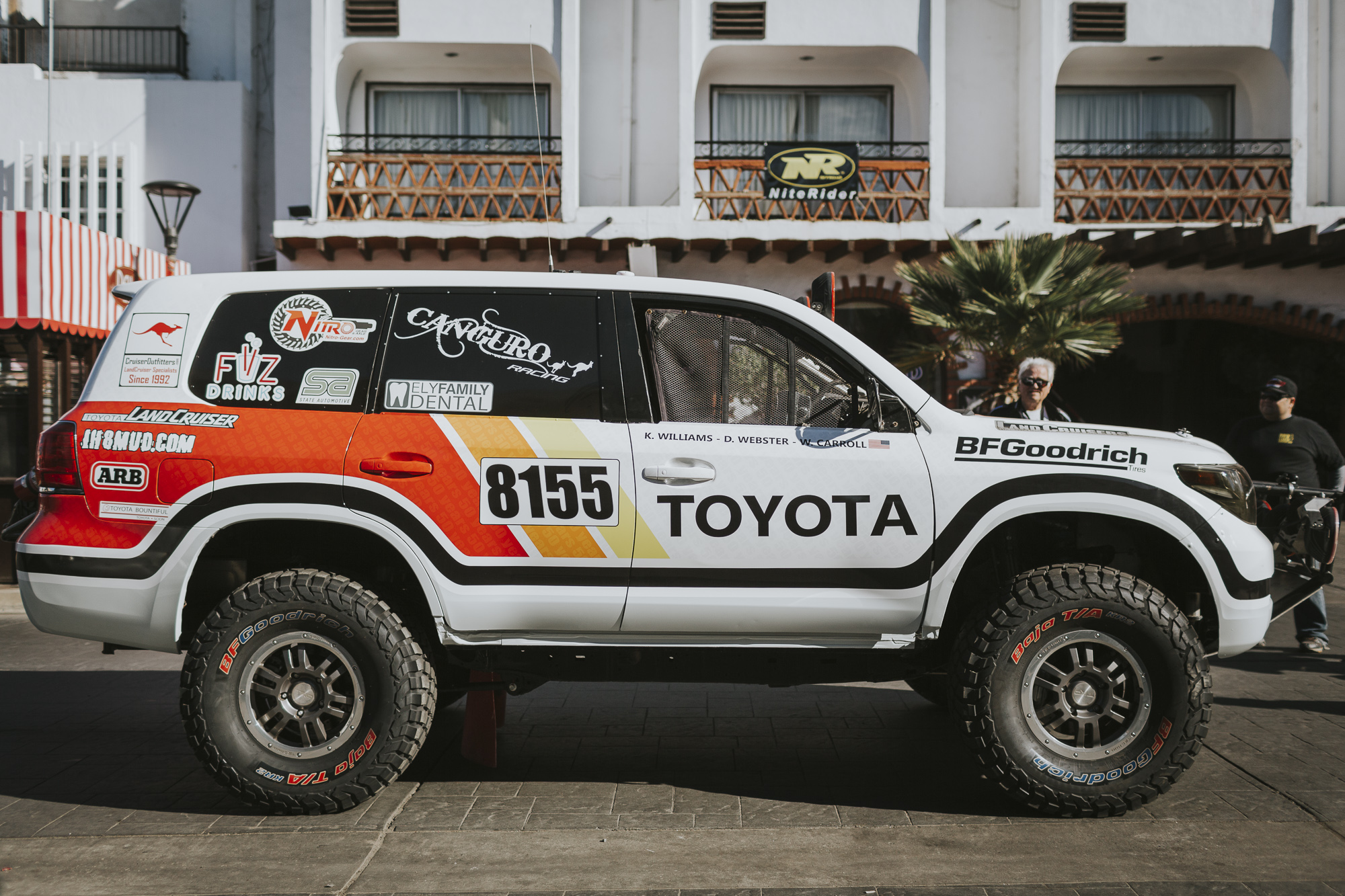
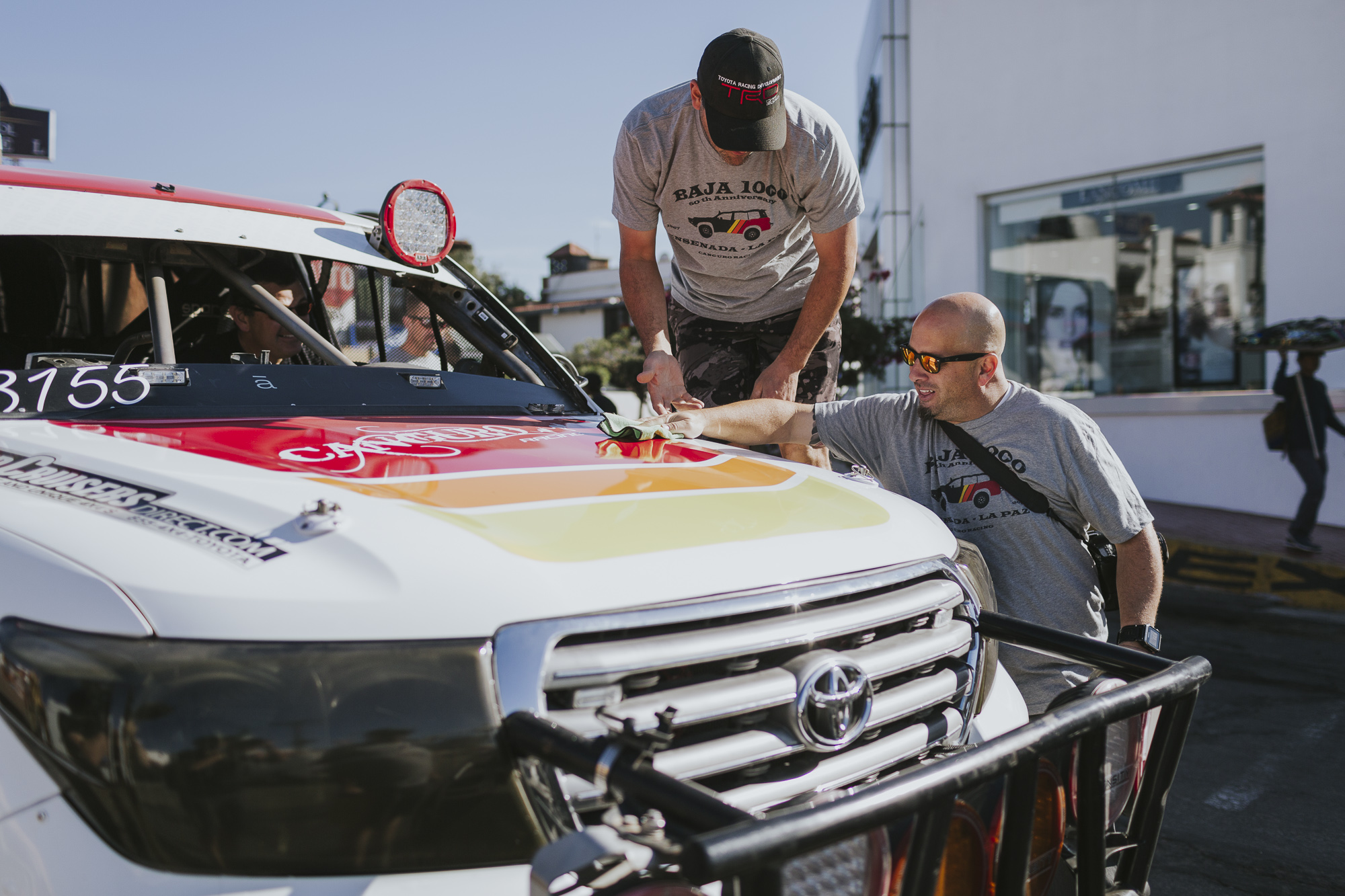
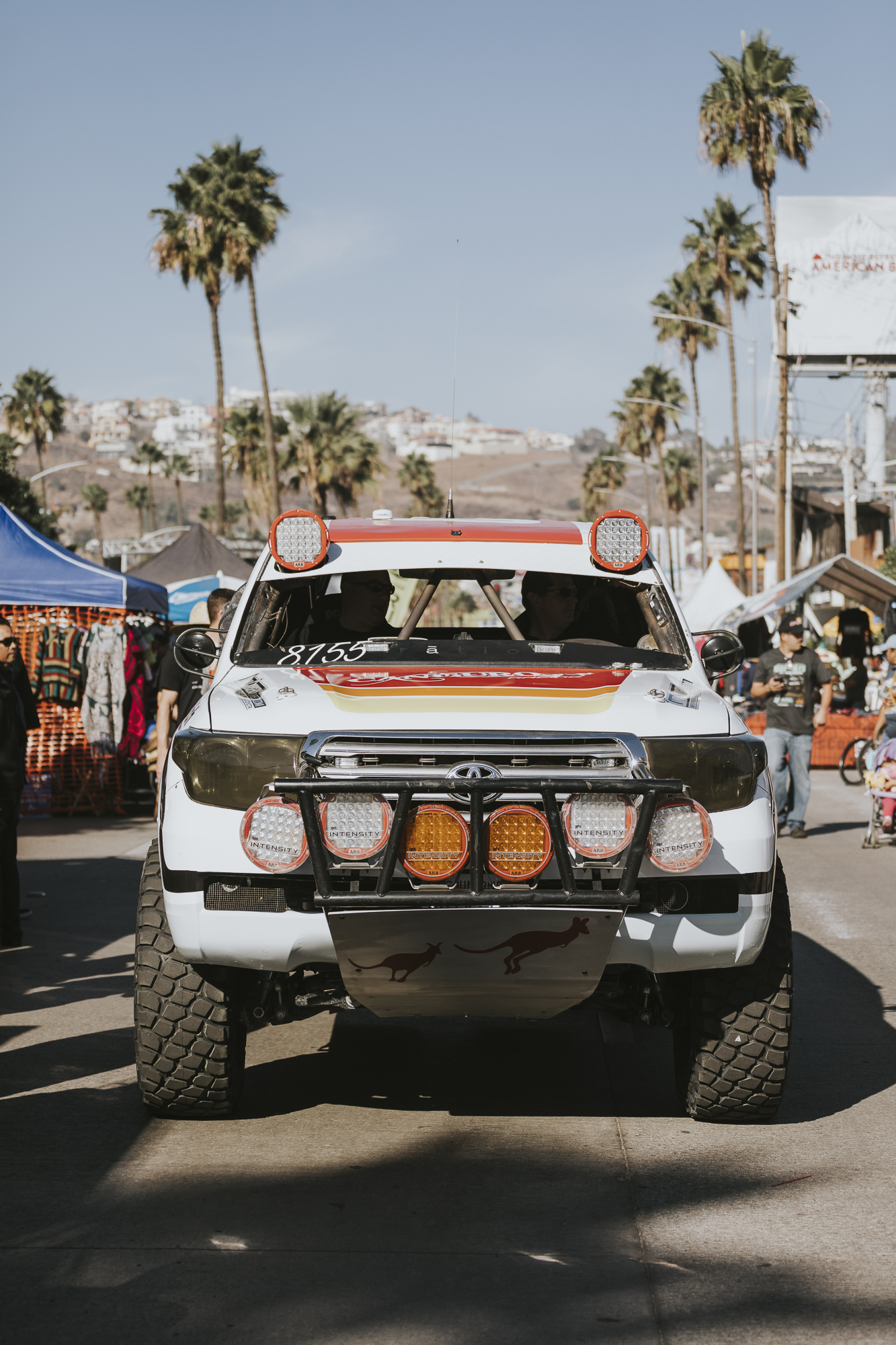

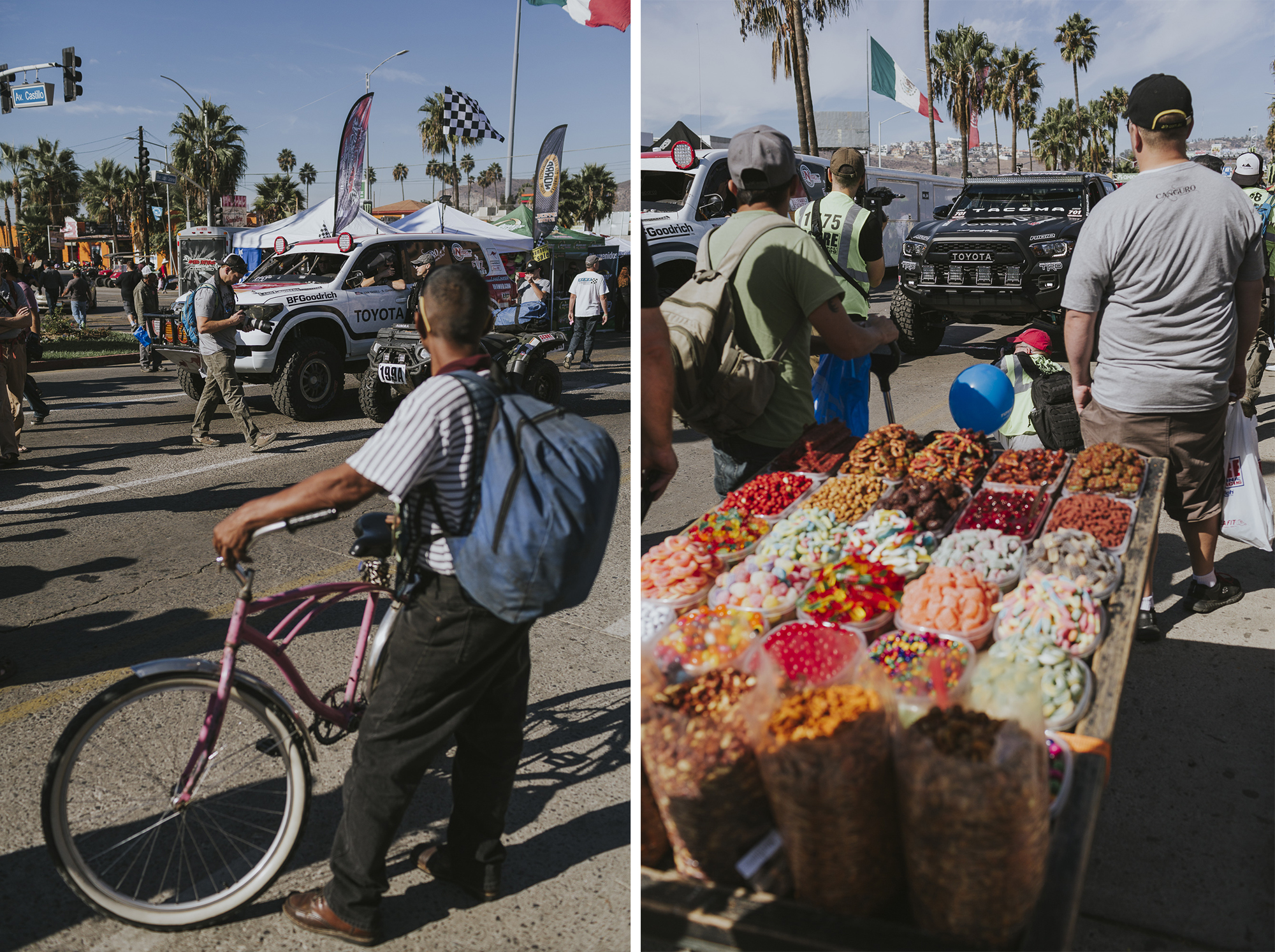
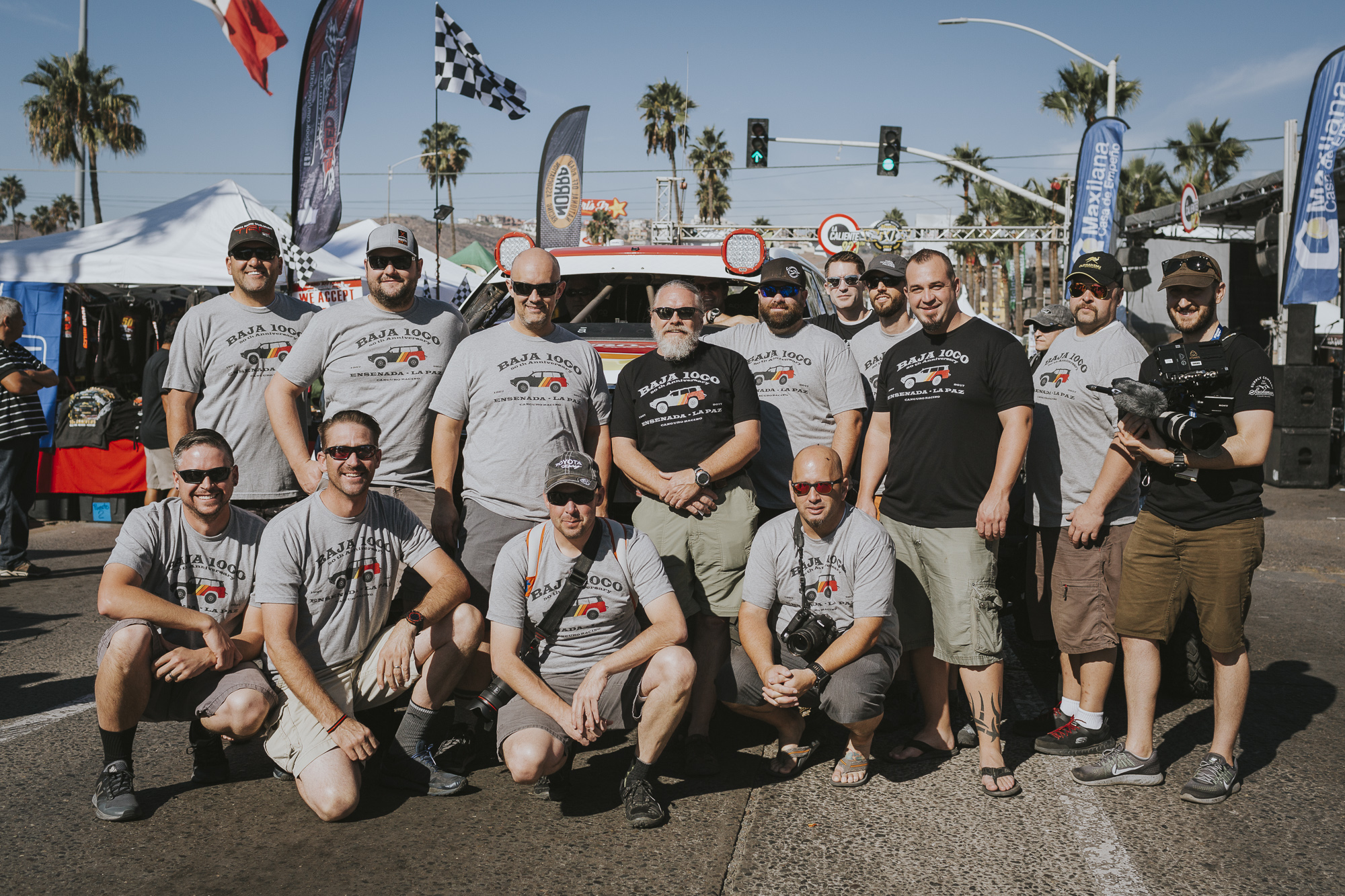
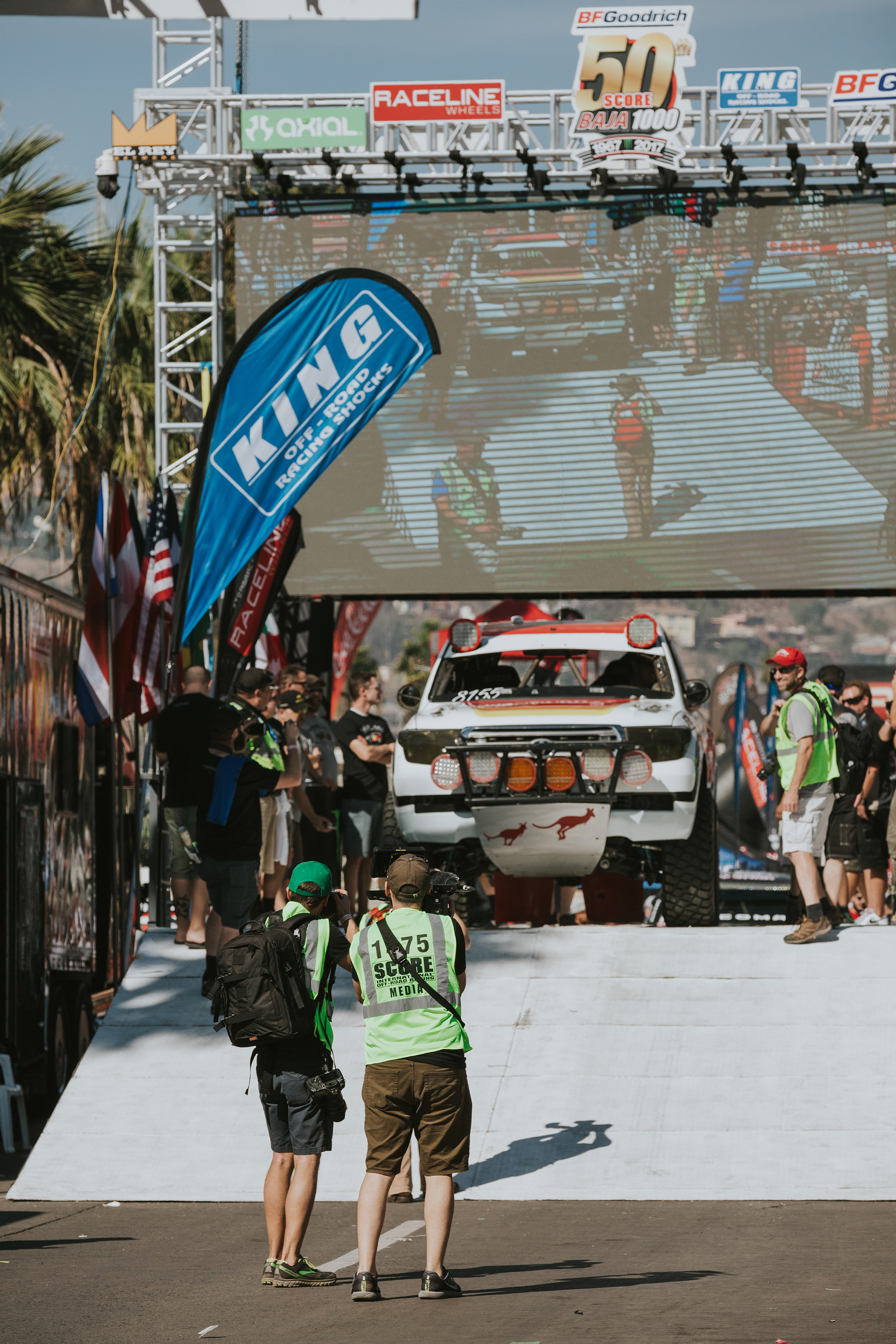
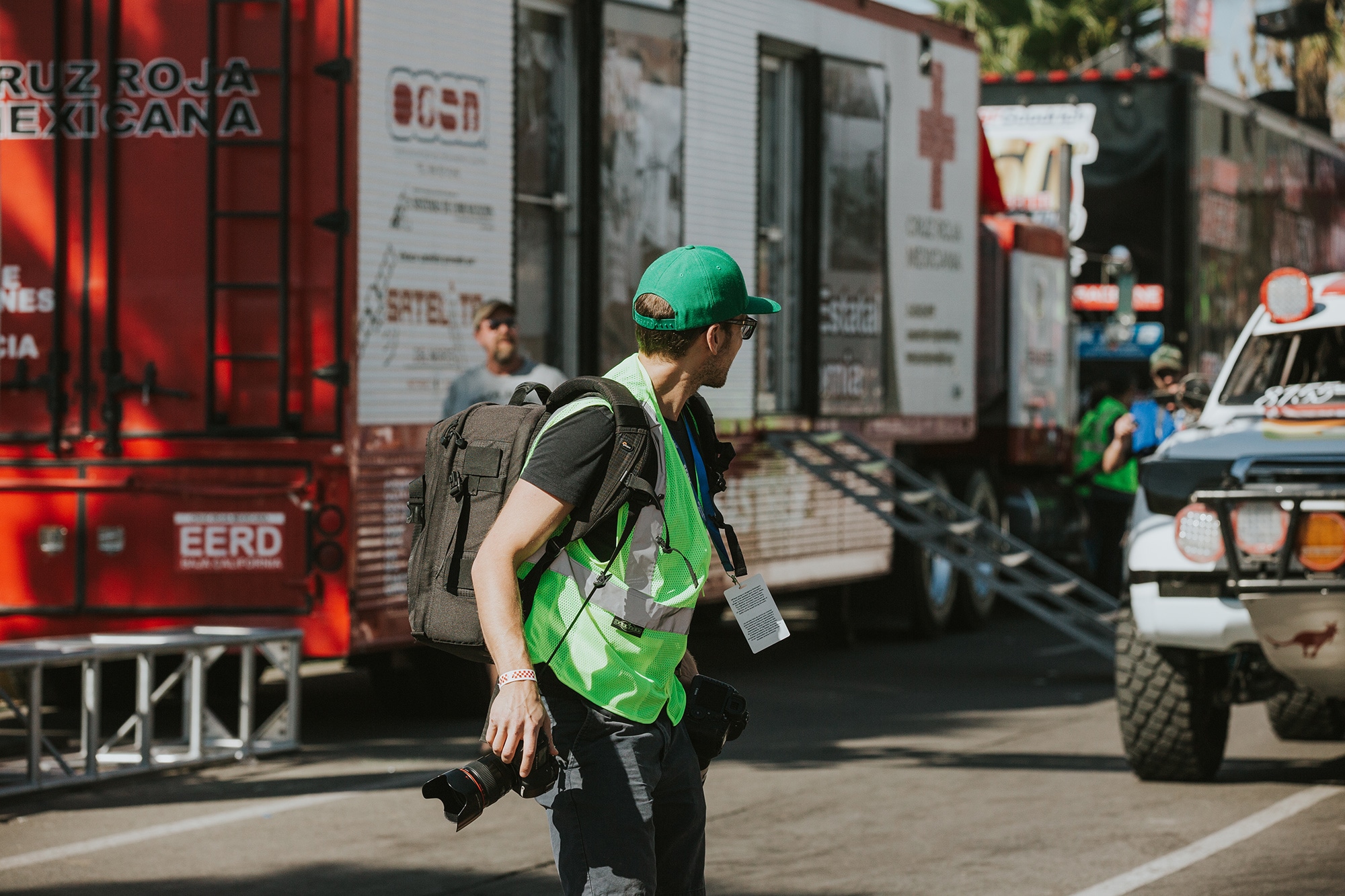
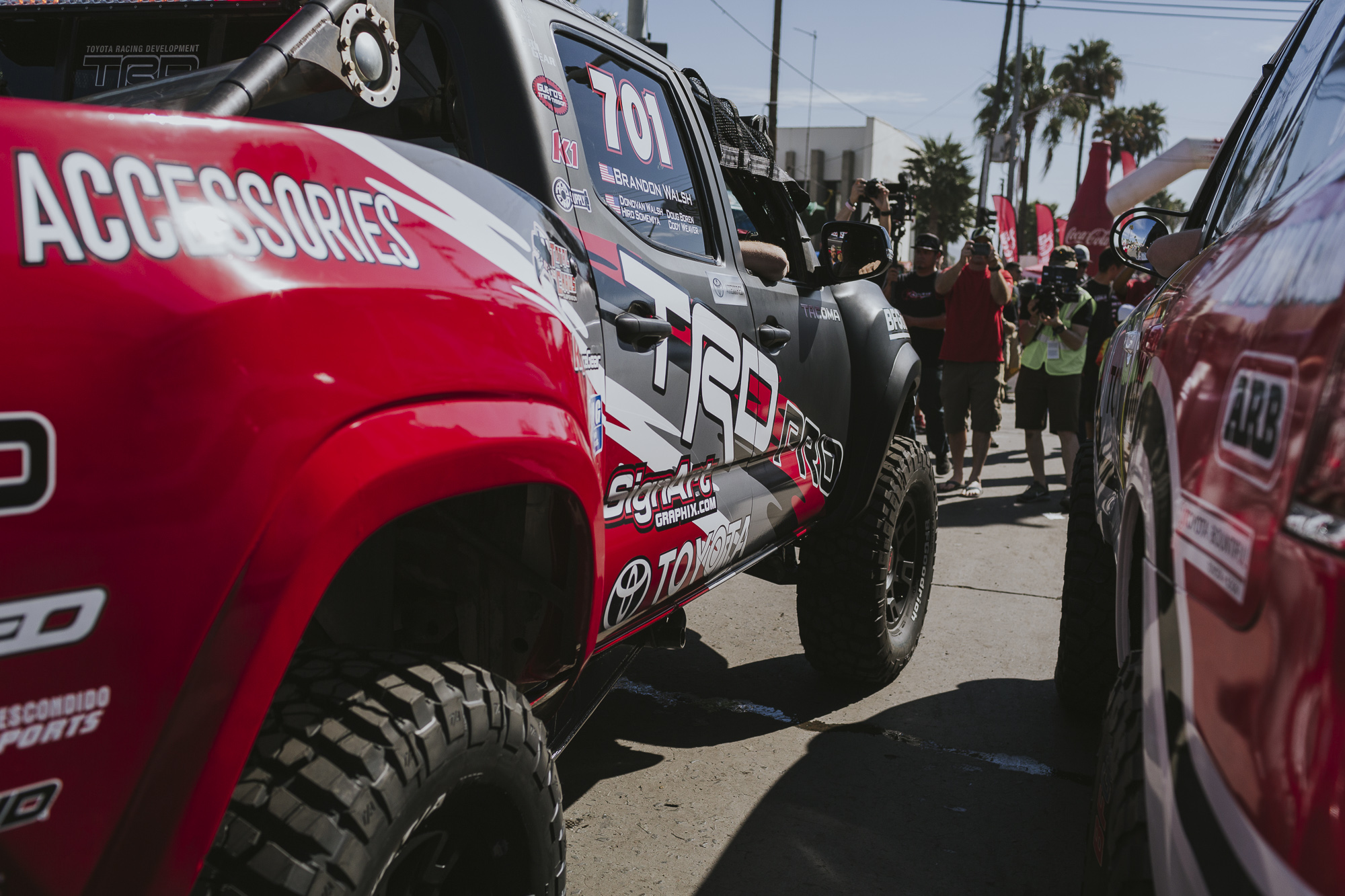
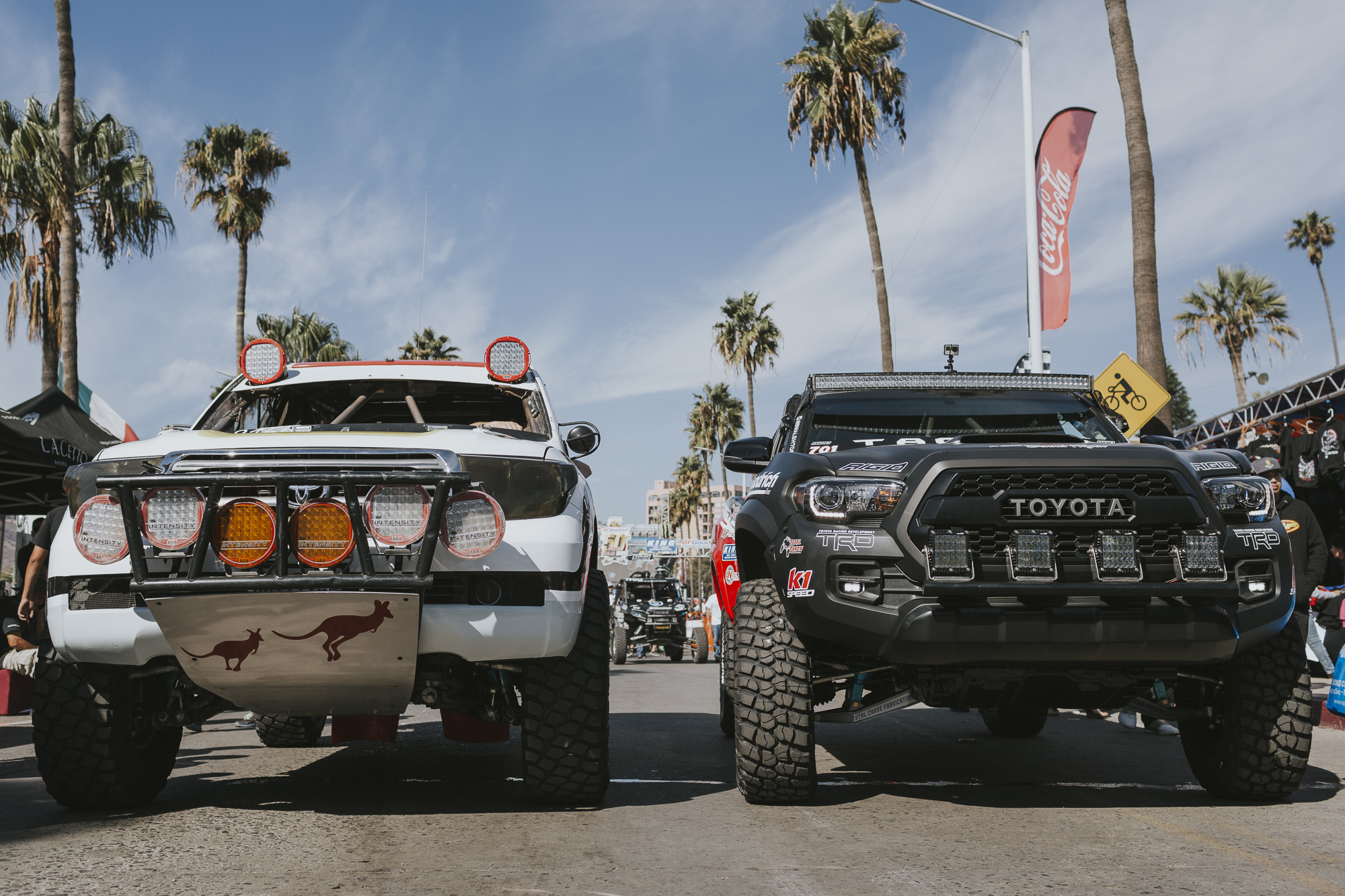

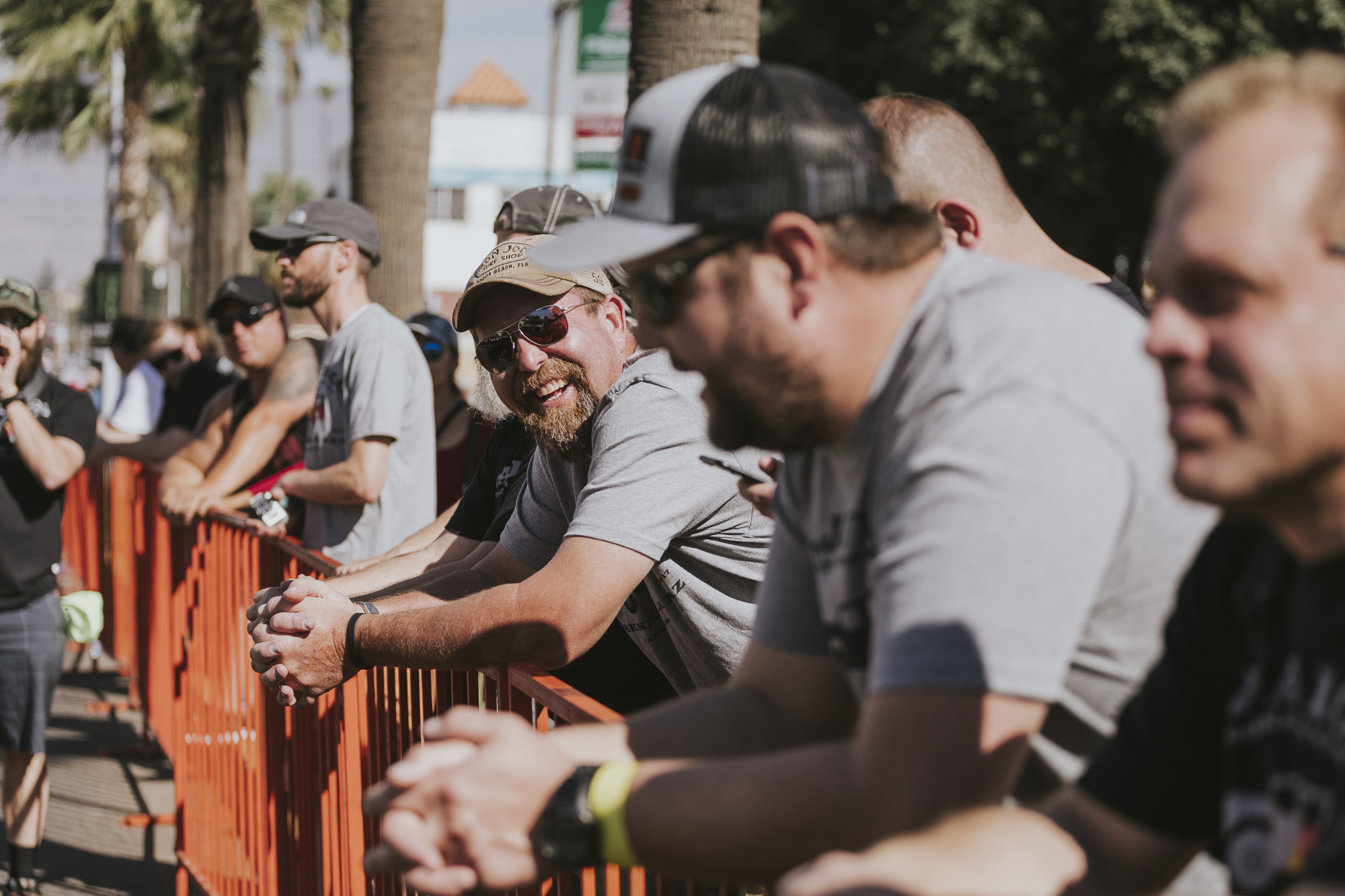
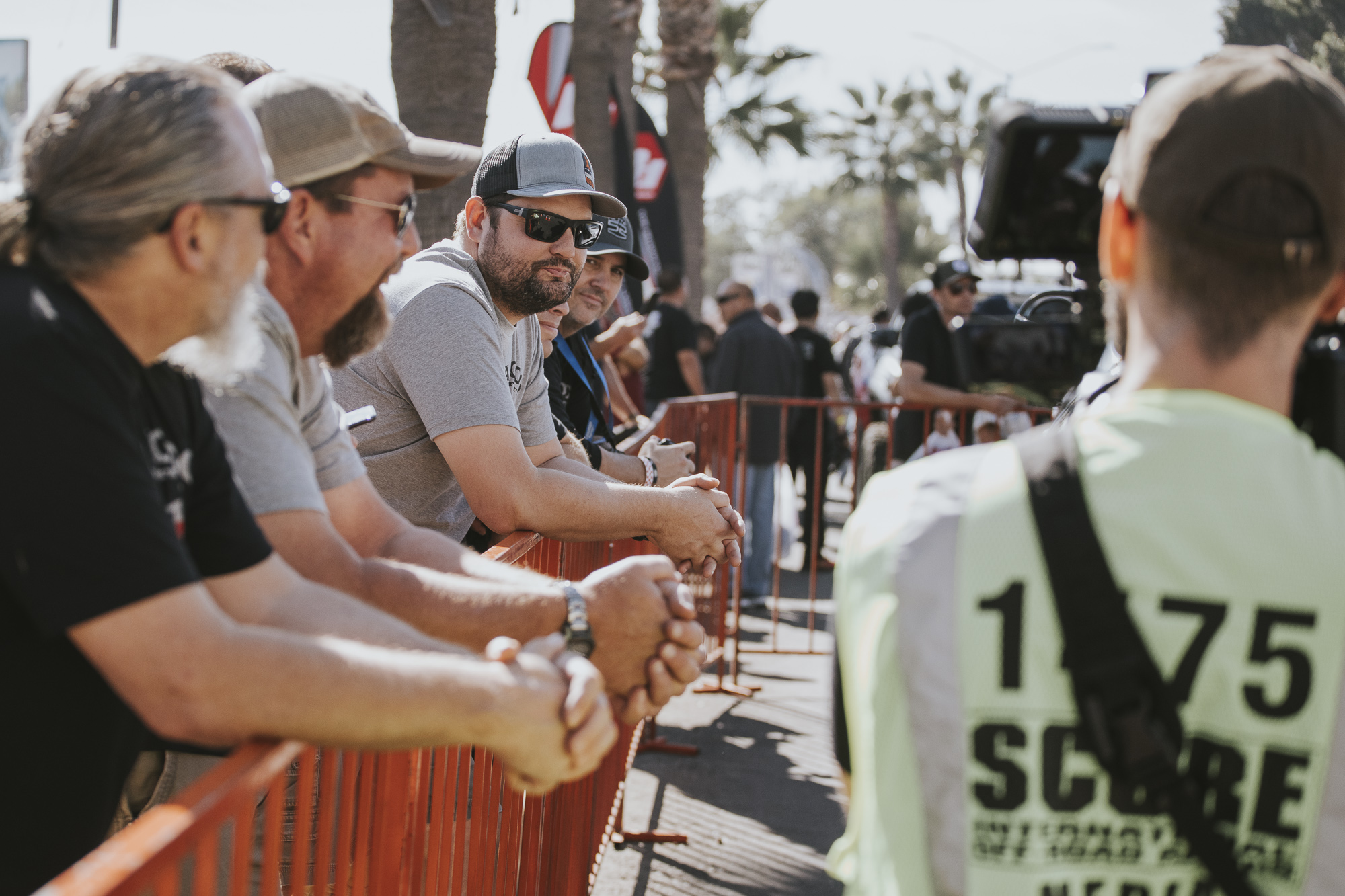
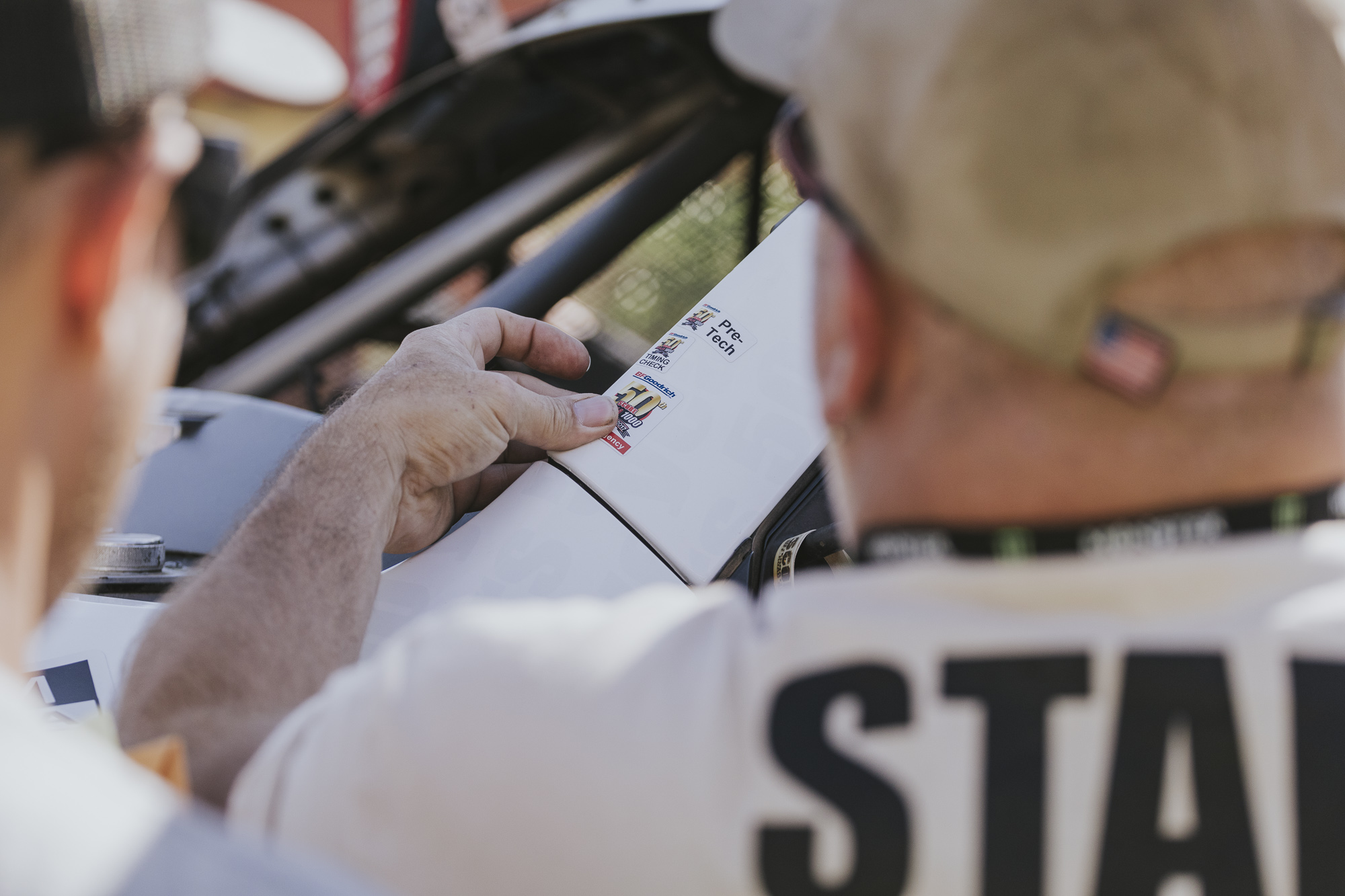
Mark was kind enough to take me for a bit of a rip through town in Monica. Now I need a race truck, thanks Mark.
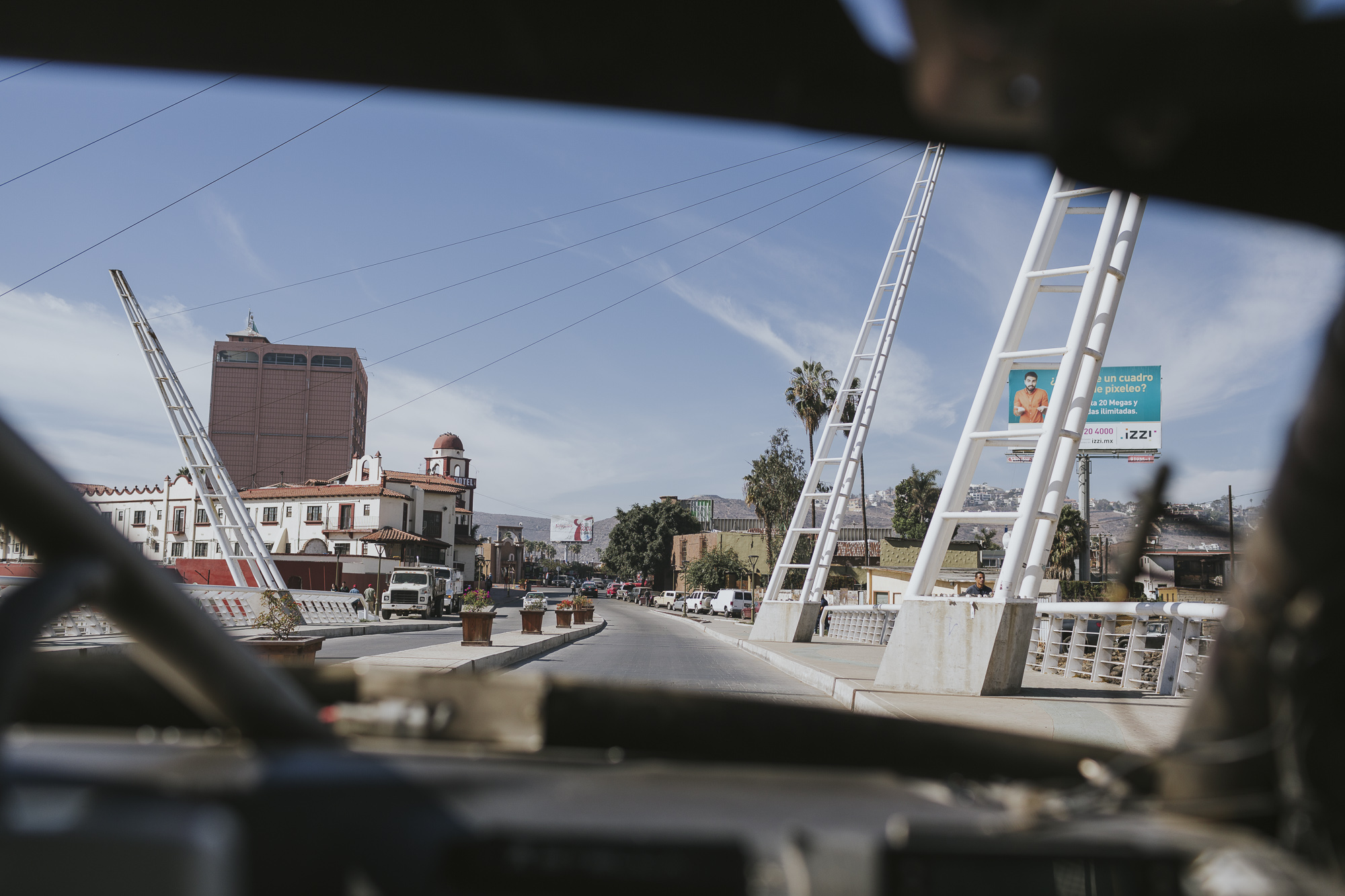
Apparently my first experience with a Baja 1000 race team wouldn’t have been complete without a visit from Ivan “Ironman” Stewart. Ridiculous. I was blown away by the generosity Ivan had with his time. He signed the hood of Monica, chatted with the team, and then proceeded to take photos with the locals for an hour afterwards.
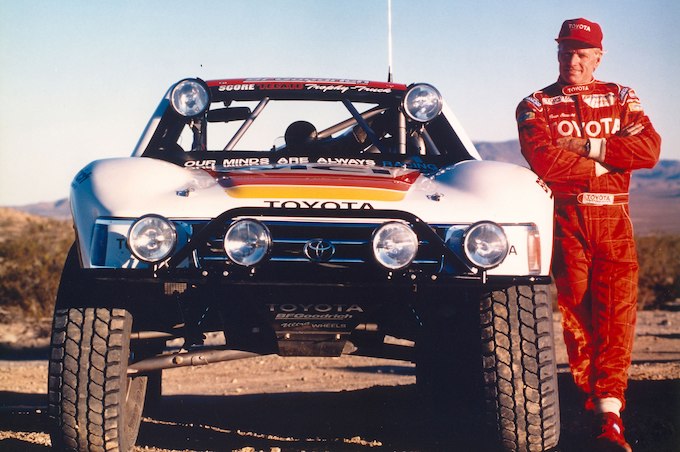
In 1973 Ivan Stewart was slated to co-drive for Bill Hrynko for the Ensenada 300 off-road race. When Hrynko fell off a ladder and broke his leg, Stewart was asked to drive the buggy. 28 year old Ivan Stewart took the wheel, drove the entire race solo, and won. In an unprecedented move, Stewart continued to drive solo. He was the first to finish the Baja 1000 solo (winning Mickey Thompson’s Valvoline Ironman Award) and then continued to dominate off-road racing with 17 Baja 500 wins, three Baja 1000 wins, and four SCORE championships.
Check out this 1998 film, Toyota – The Heart of Racing to learn a little more about Ivan Stewart and his involvement in off-road racing.
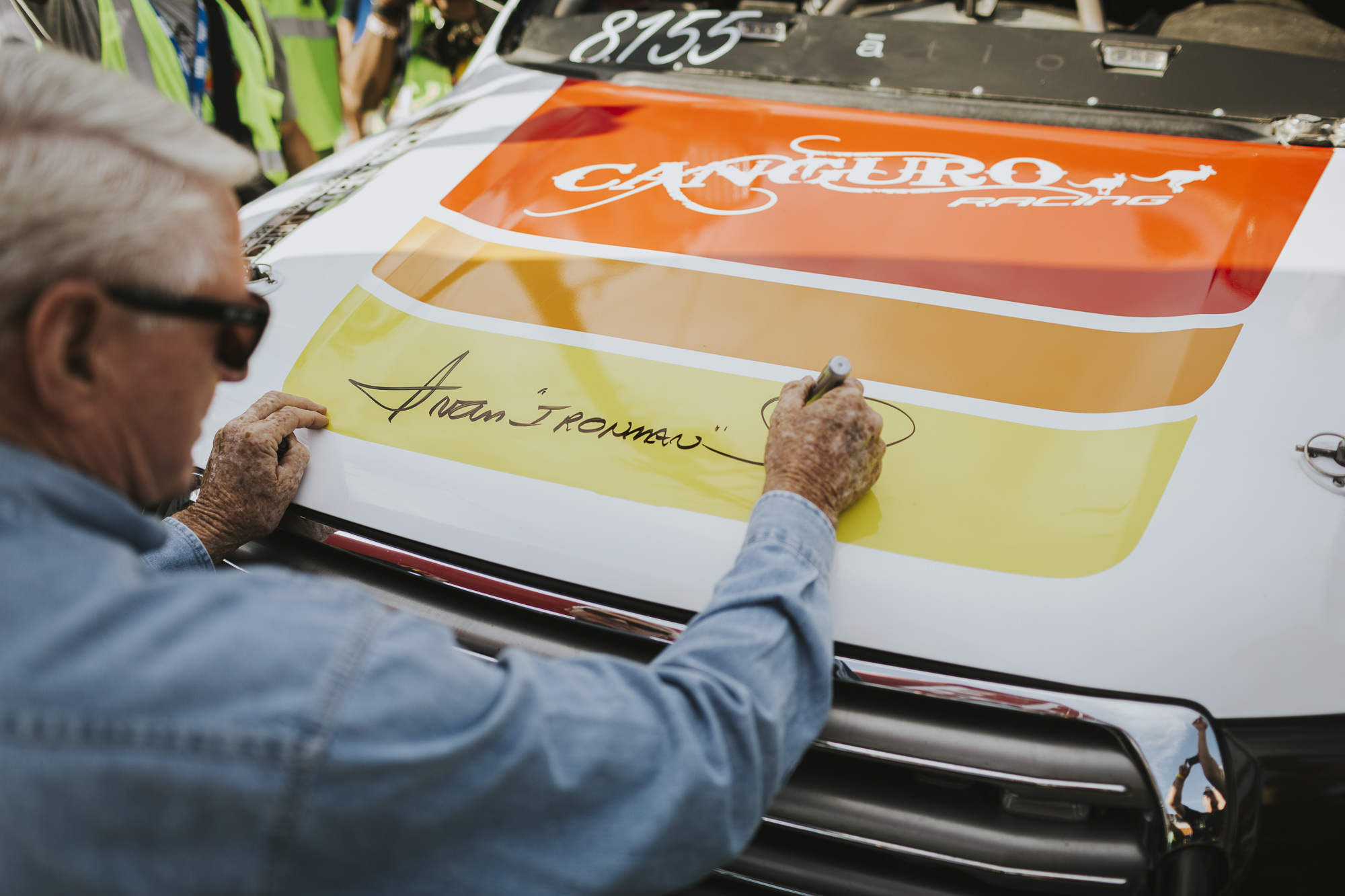
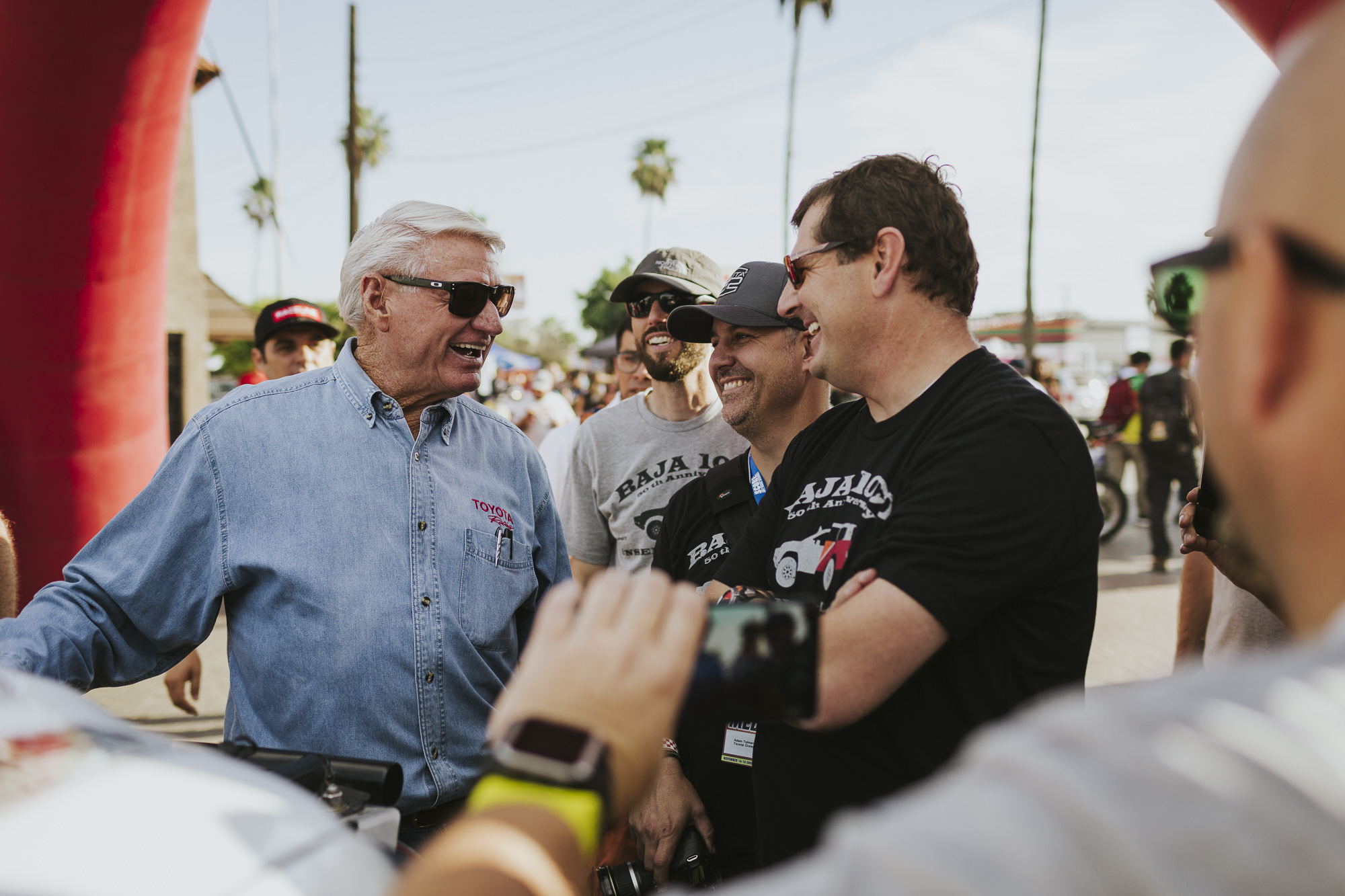
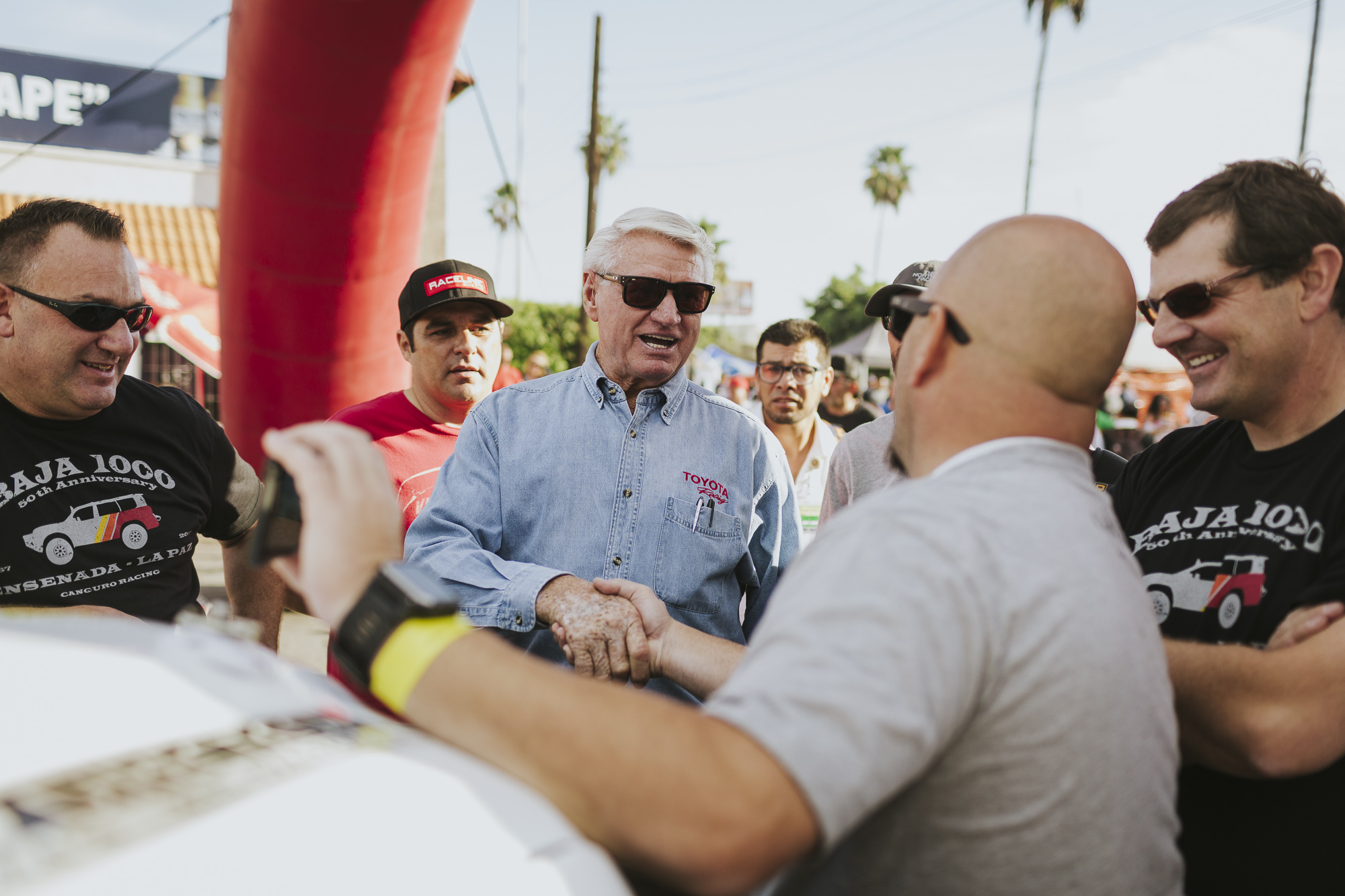
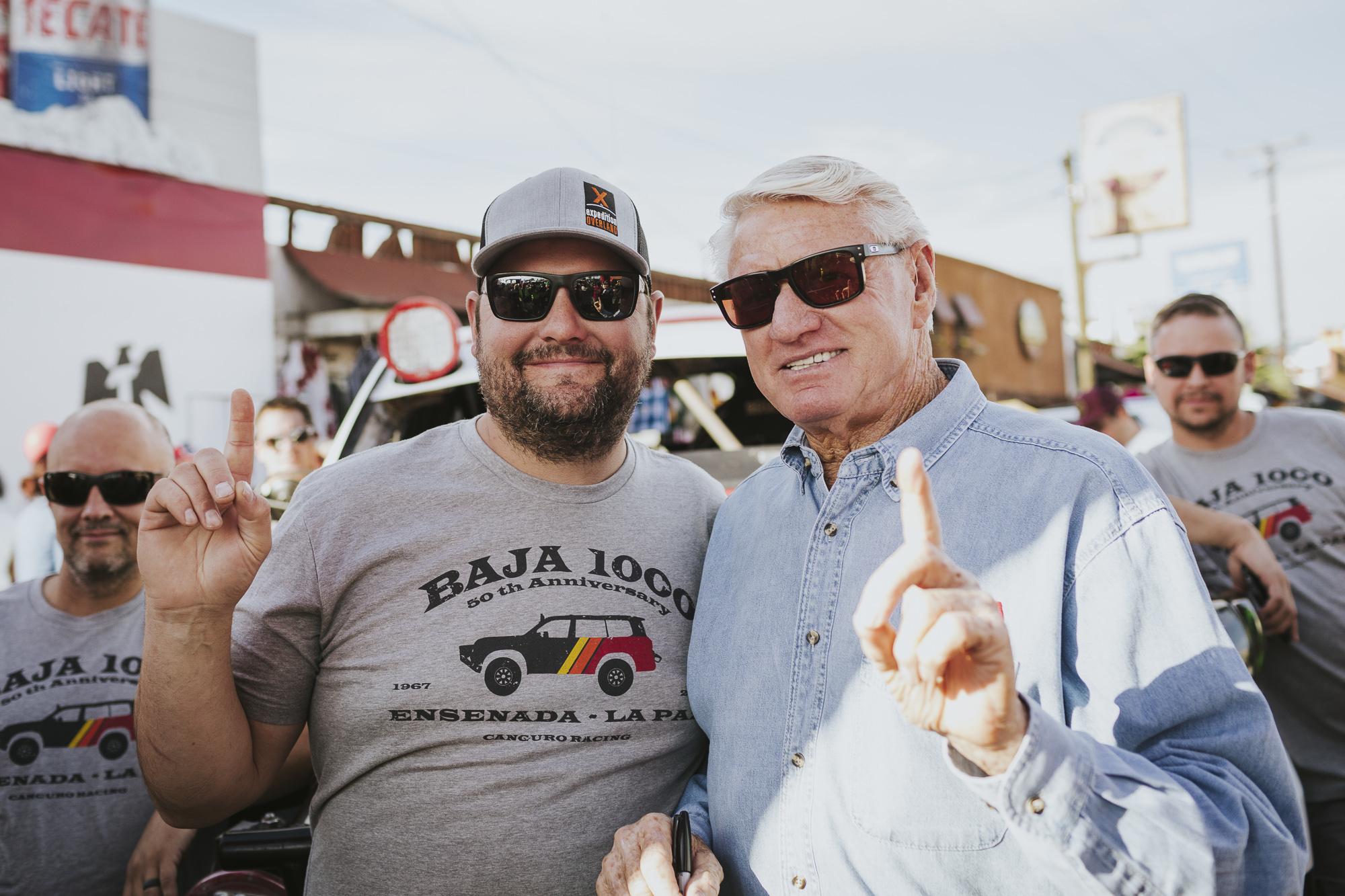
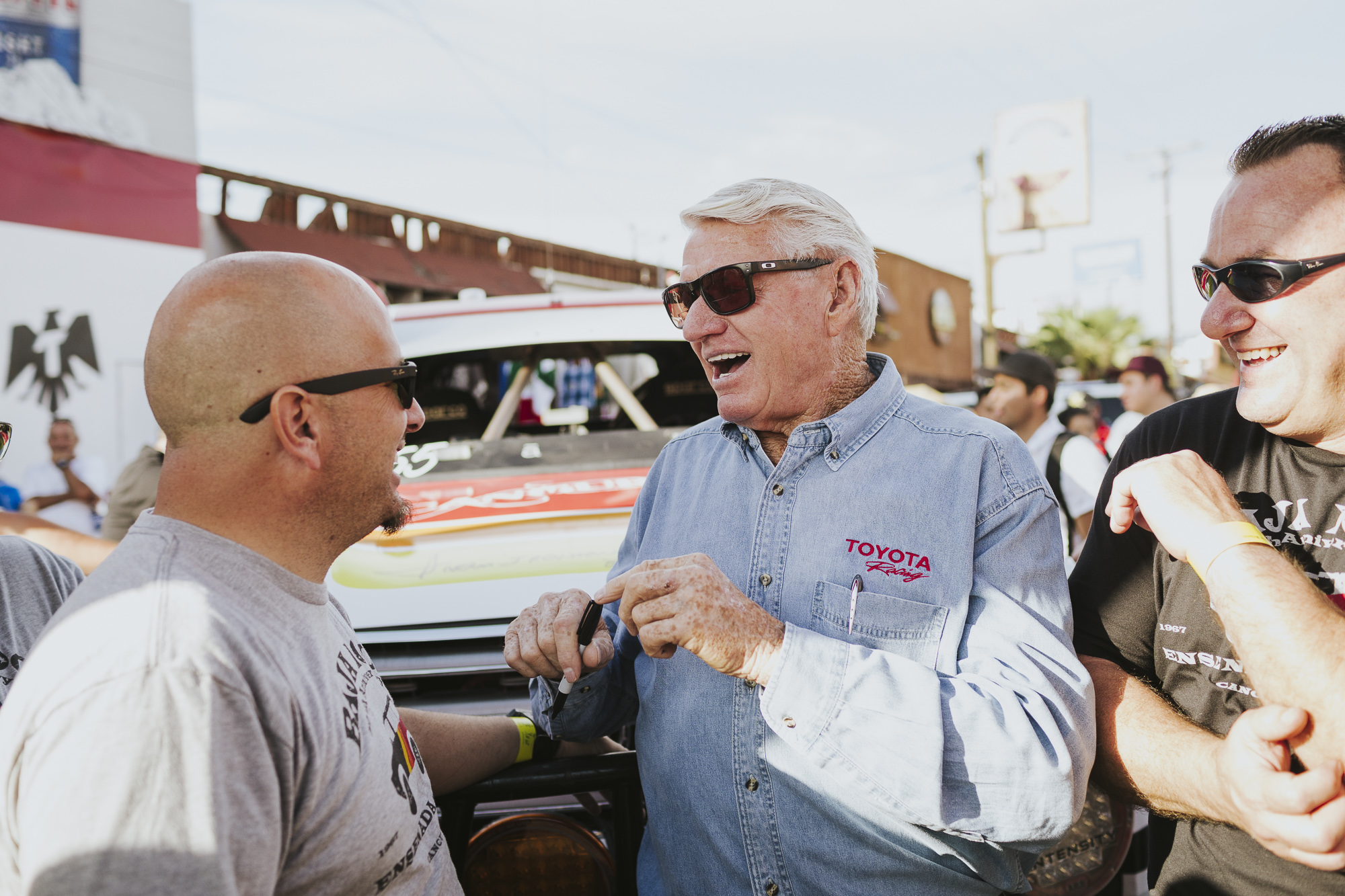
Day two of contingency meant that the streets of Ensenada were packed with people and race cars. The superstars of the race were in full force, Jessi Combs was in a Geiser Bros truck ready to attempt to ironwoman the event, trophy trucks cackled and spewed unburned hydrocarbons, and plenty of VW Bugs were on the streets surrounded by thousands of people. It’s an experience not to be missed.

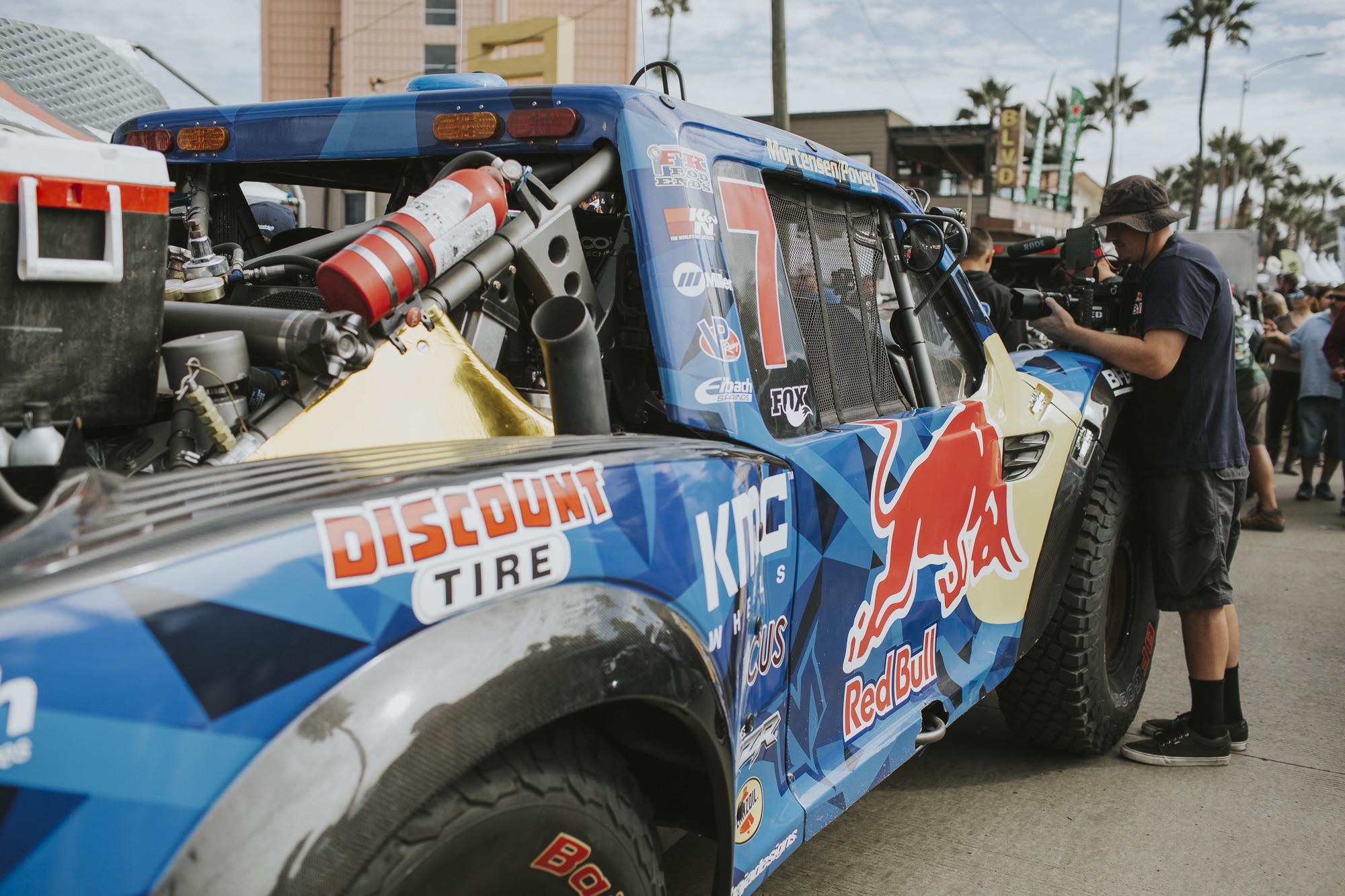
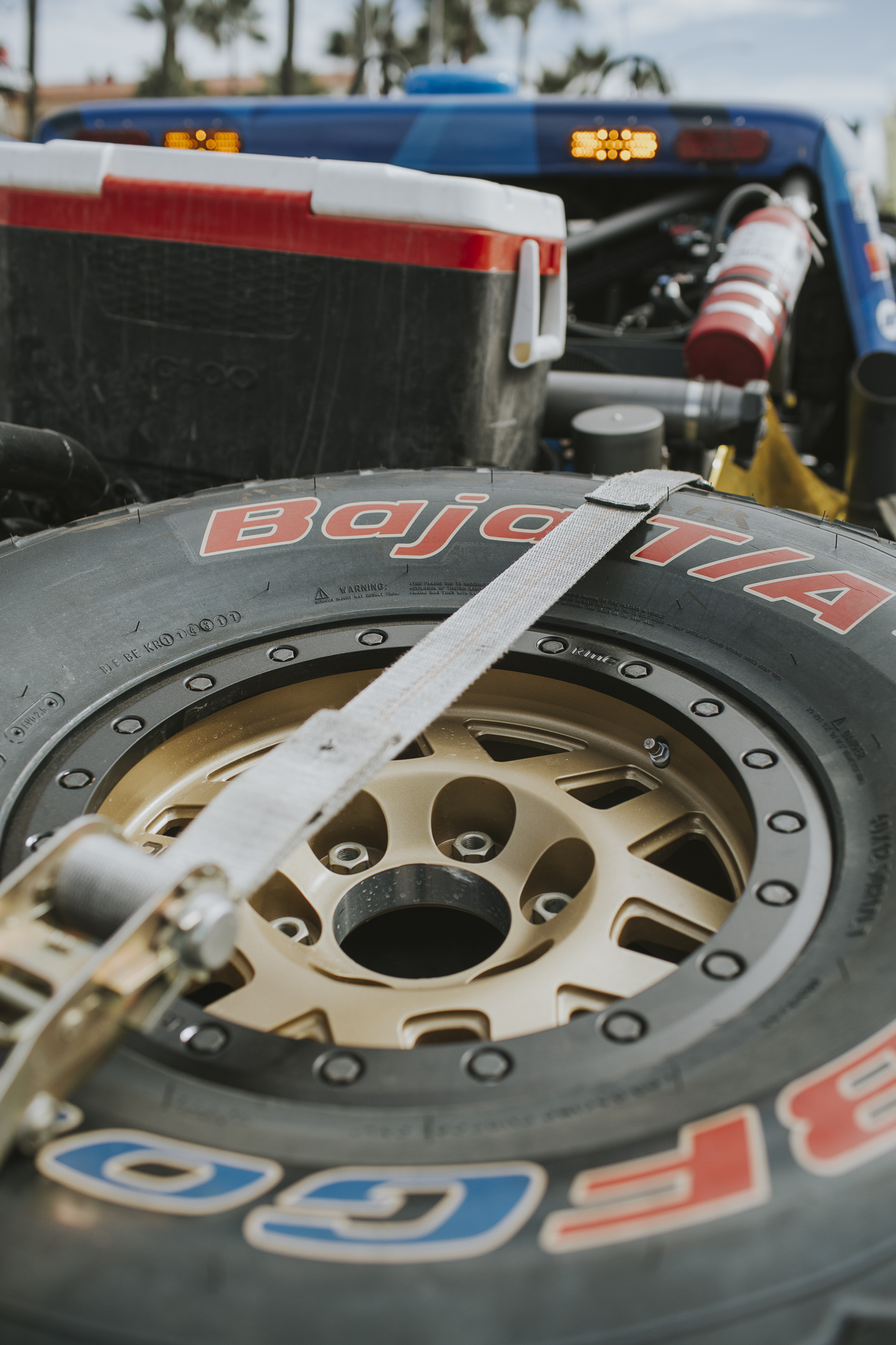
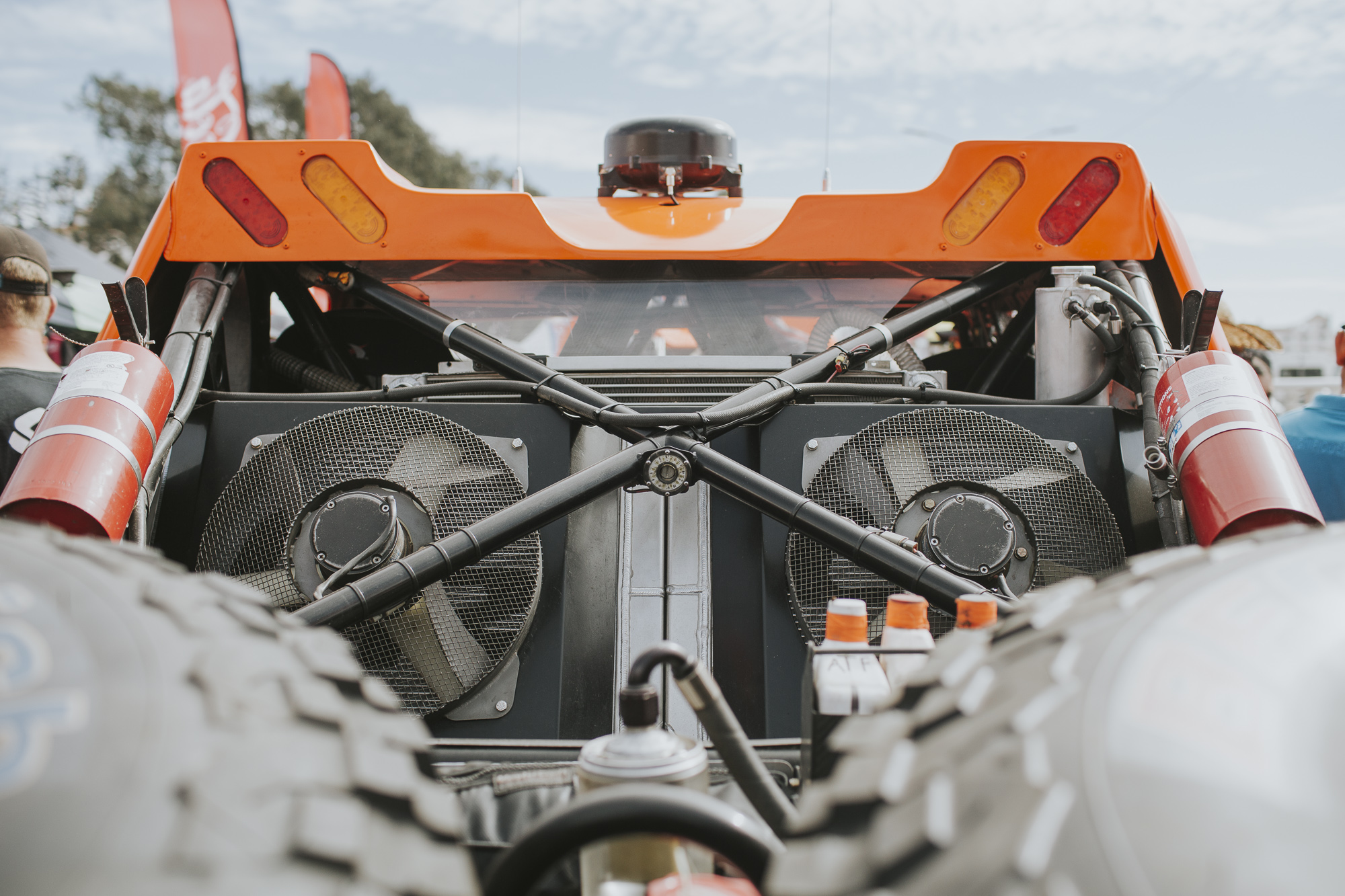
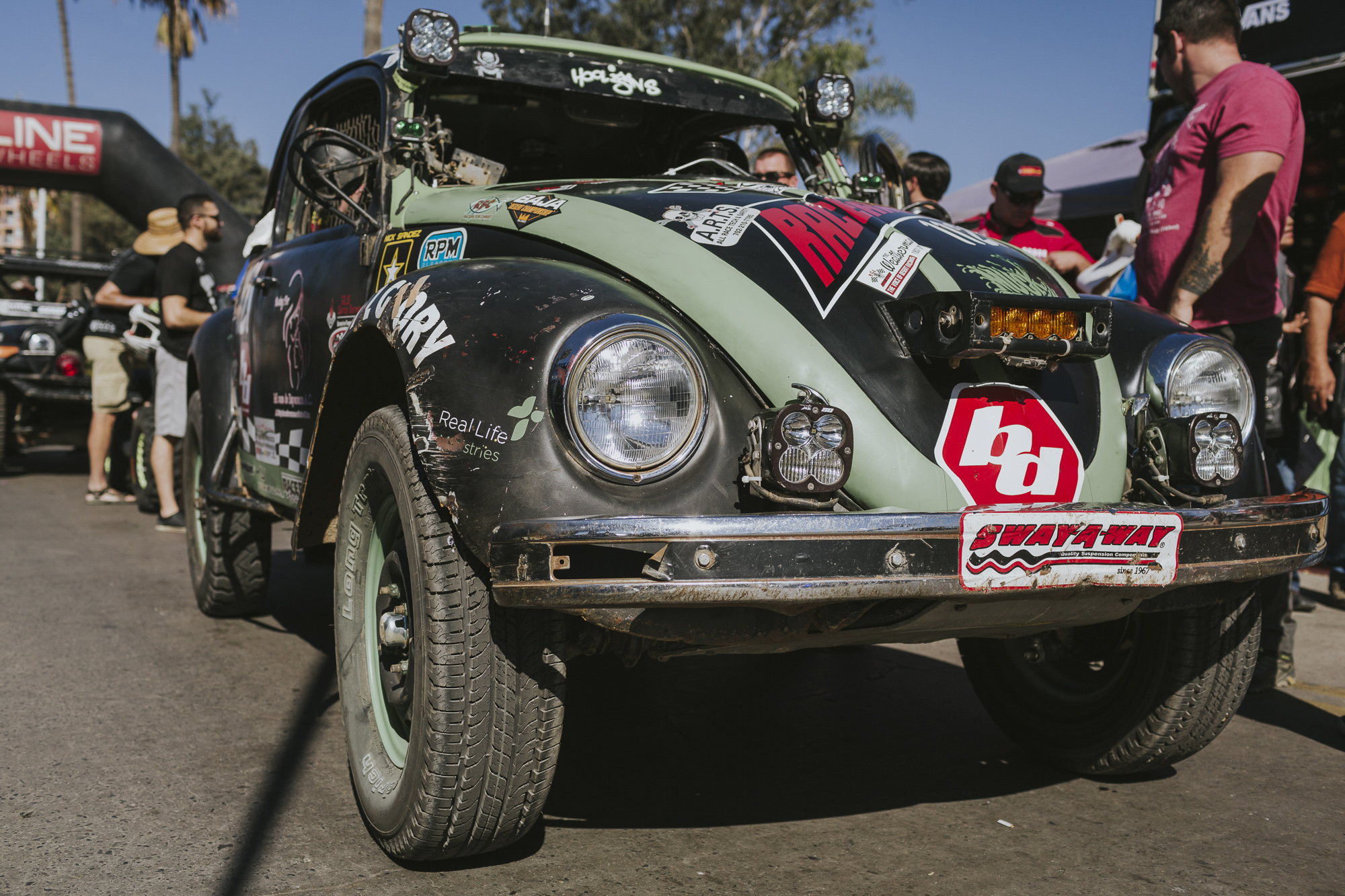

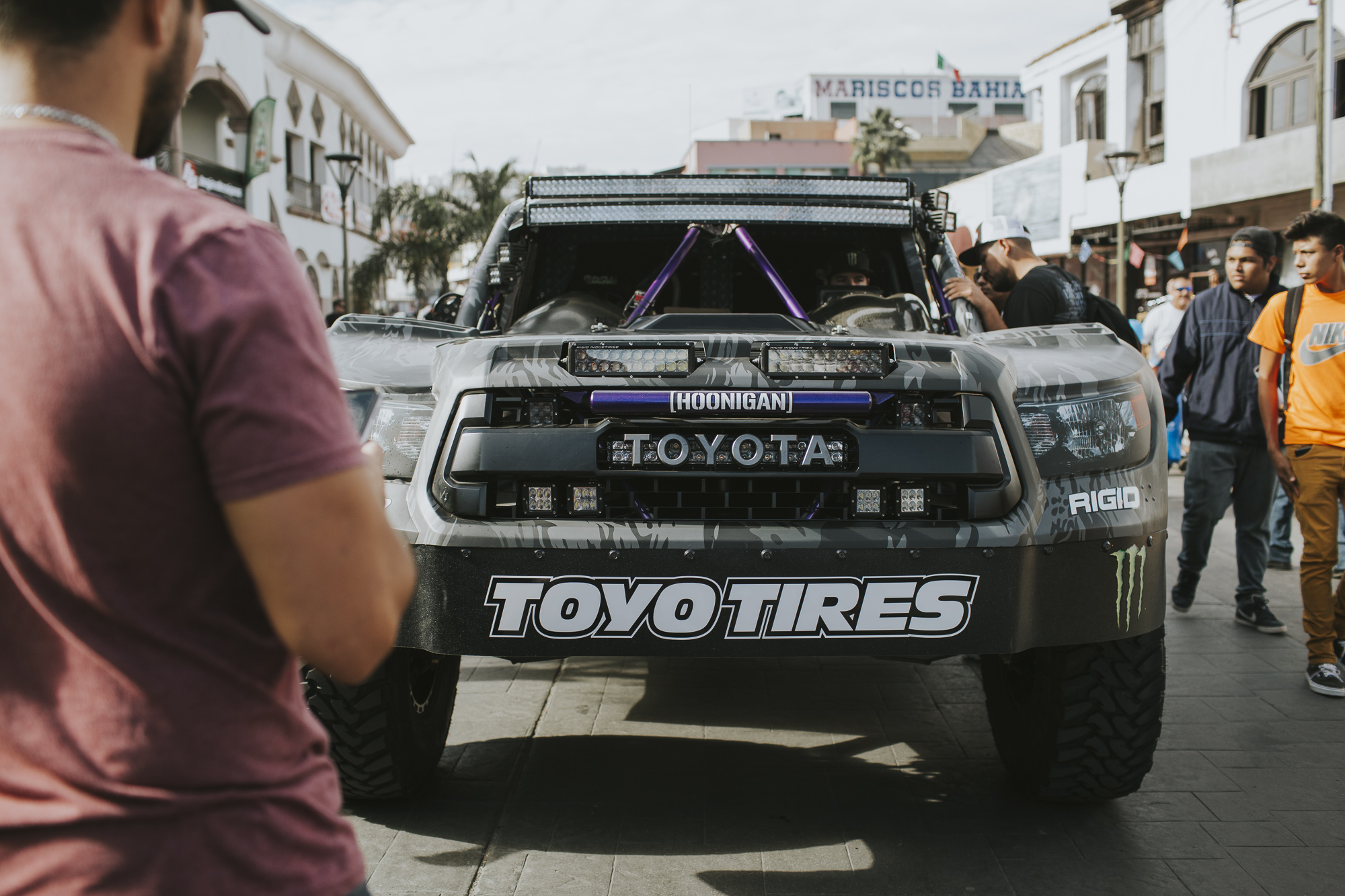

It’s incredible how through all of the planning that was involved in making this project happen I hadn’t really thought much about the race itself. There were plenty of things that needed to get checked off before we could even get to this point in Ensenada. Don’t get me wrong, I had looked at the race map, read the chase plan, spoke with the team, was involved in the team meeting, and discussed production plans, but I didn’t actually think deeply about what we would be doing for 48 hours straight. Well, 48 hours with an oh-so-necessary 45 minute nap sometime during the second night.
Until this point I had never stayed up late enough to watch the sun rise. By the end of the 2017 Baja 1000 I watched the sun come up not only once, but twice.
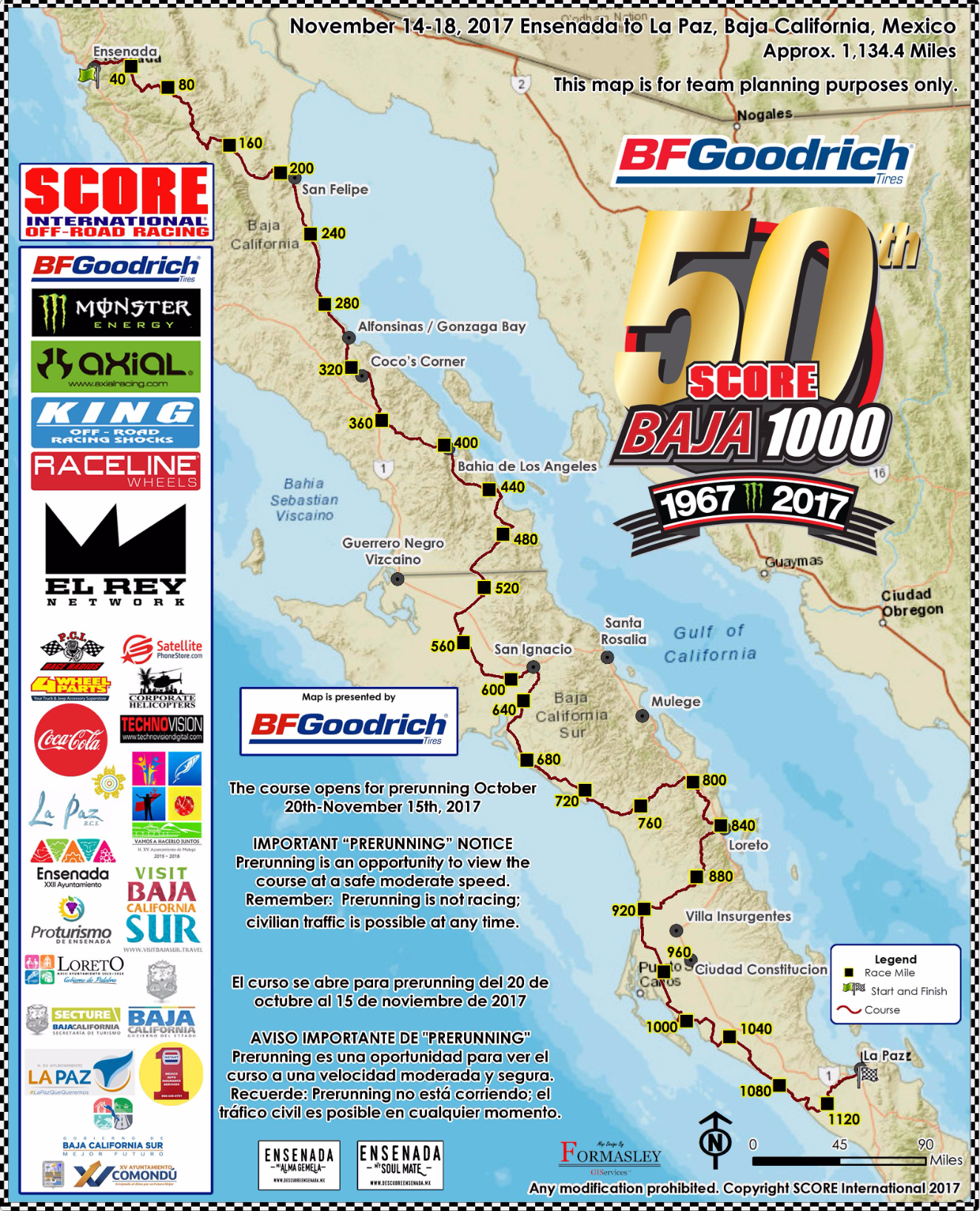
For the 2017 Baja 1000 race, there were eight chase trucks on the Canguro team. Logistically, it would have been difficult to split up this many trucks so Dave Connors set up the chase plan in a buddy system. We were partnered with the white Tundra of Chase 5: Paul May (from Equipt Expedition Outfitters), Adam Tolman, and Jeremy Averett. They’d be holding our hands through our first 1000 and we were thankful for their experience. Matt Russell and his three sons added to our convoy for the first 400 miles of the race.
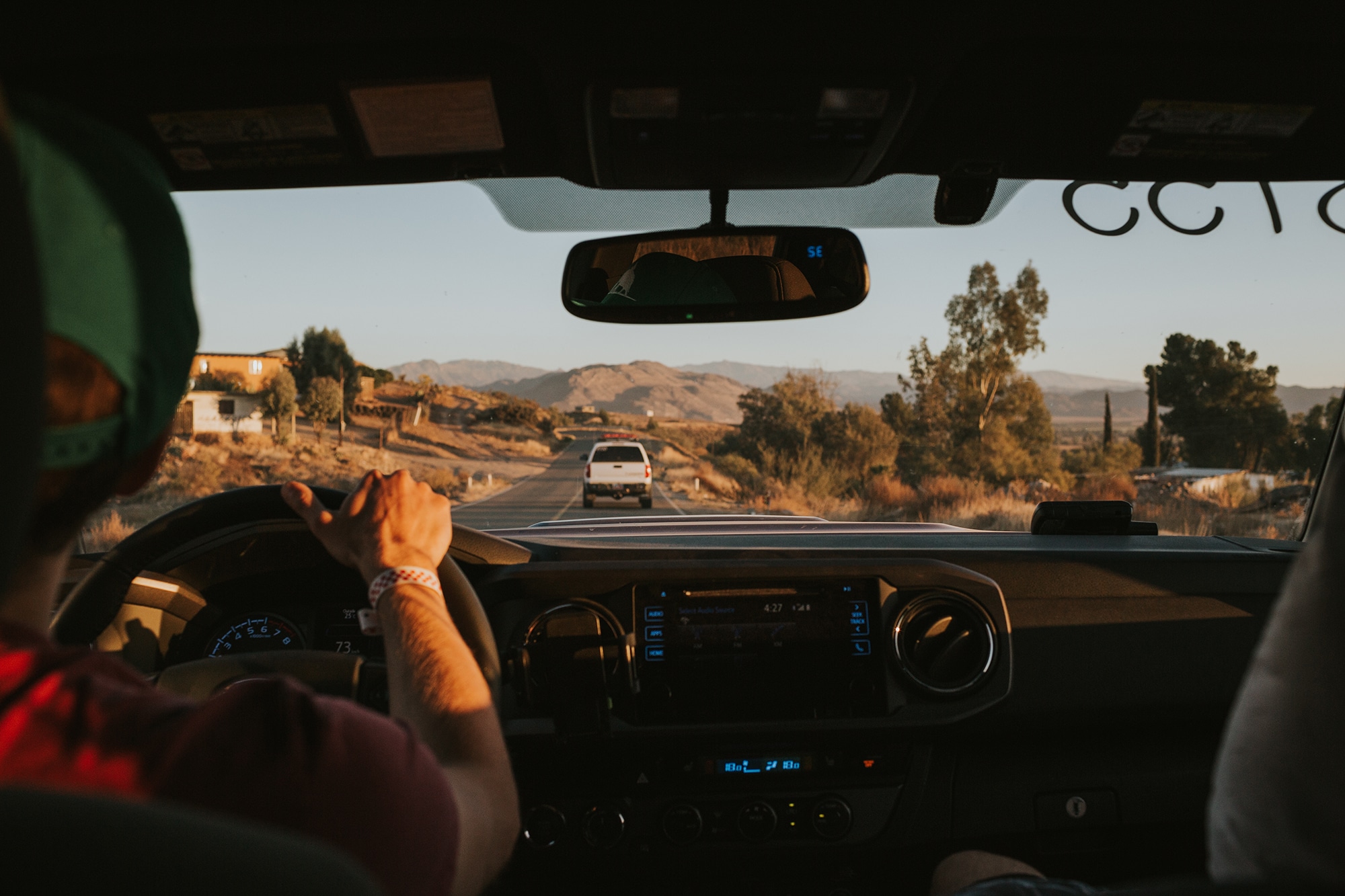
Adam knew of a great spot for us to monitor communications (a necessity when the HAM radio has a limited range) at race mile 61 and to watch the trophy trucks while waiting for Monica to pass. We were far from the crowds, but definitely close to the action.
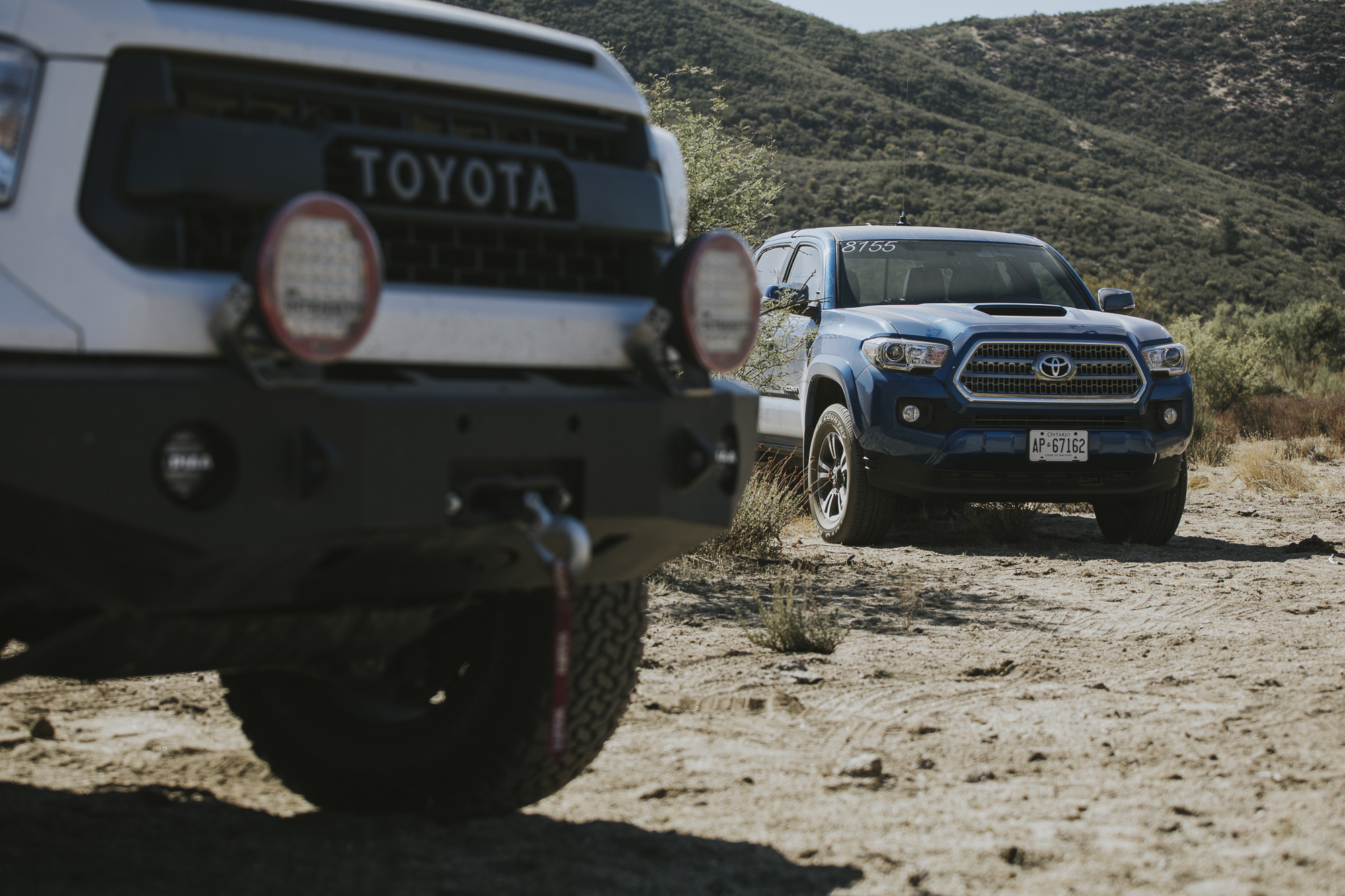
It’s difficult to explain how excited I got the first time I heard the chase helicopter, saw the dust cloud on the horizon, and then finally caught sight of a trophy truck barrelling full tilt down the course towards us. You feel the thumping of the exhaust in your chest, hear the screaming V8 engine blast directly into your brain, and you do your best not to breathe in the fine dust. I’m getting goosebumps just remembering that moment.
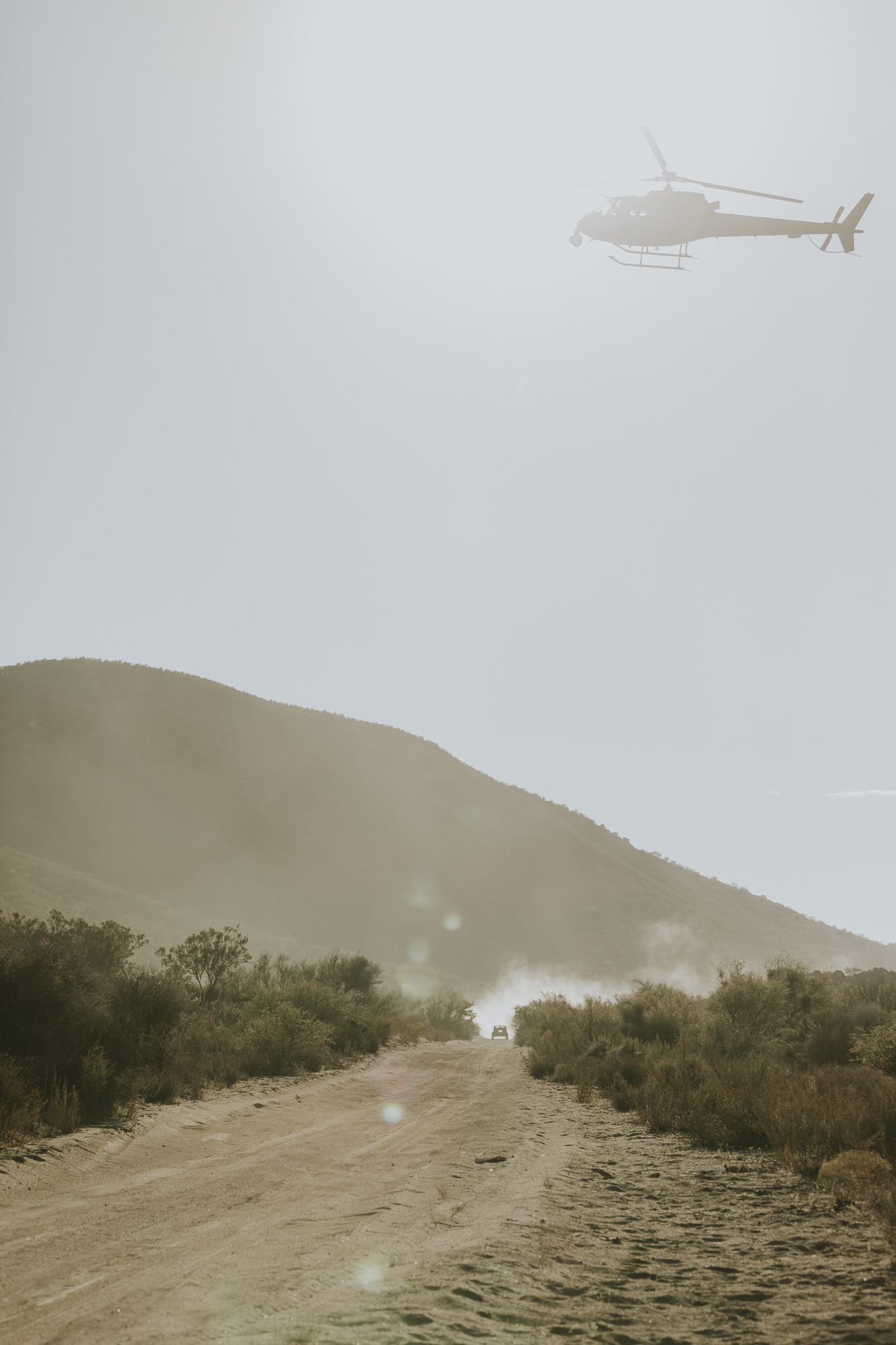


For those of you not familiar with desert racing in Mexico you may be surprised at our proximity to the race course. There are no barriers or officials to keep you off the track and your safety is in your own hands.
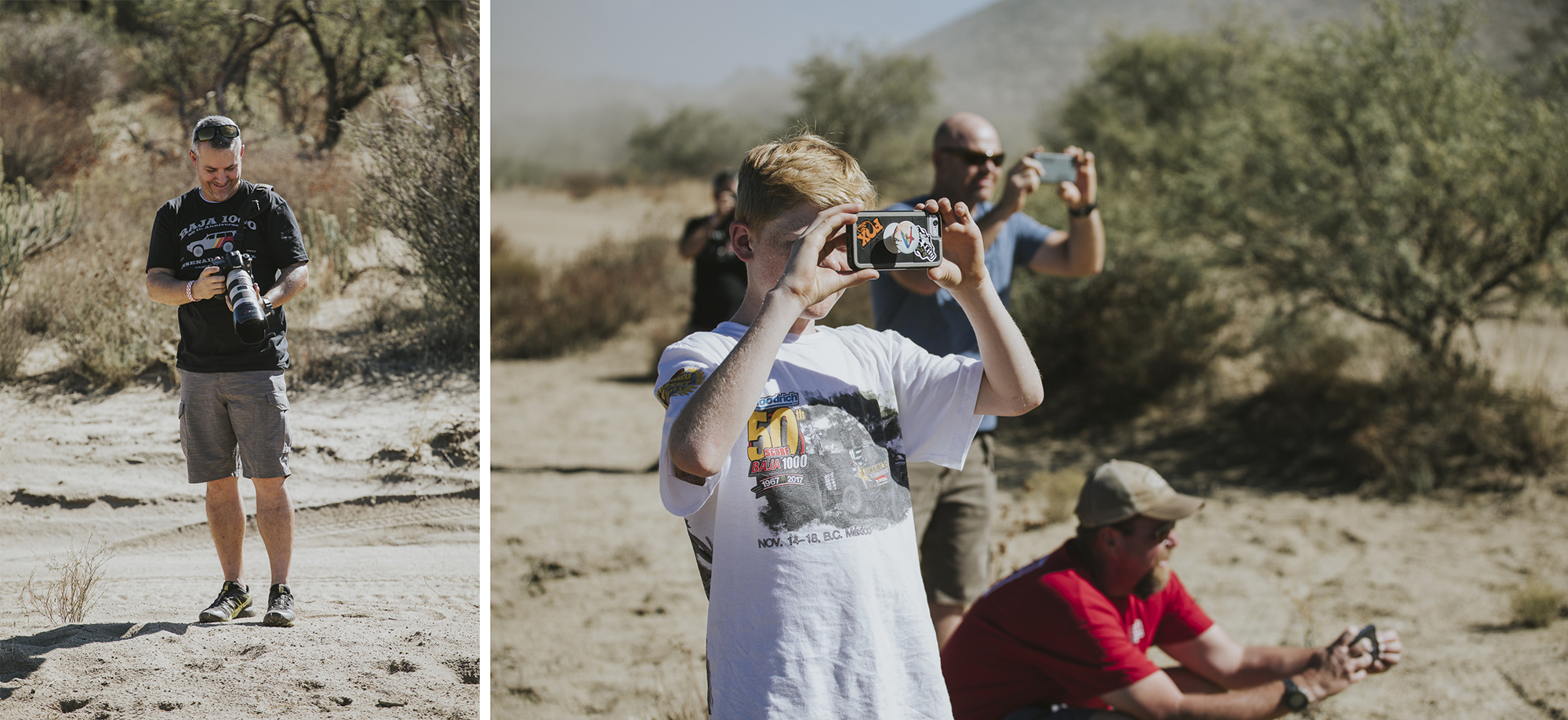
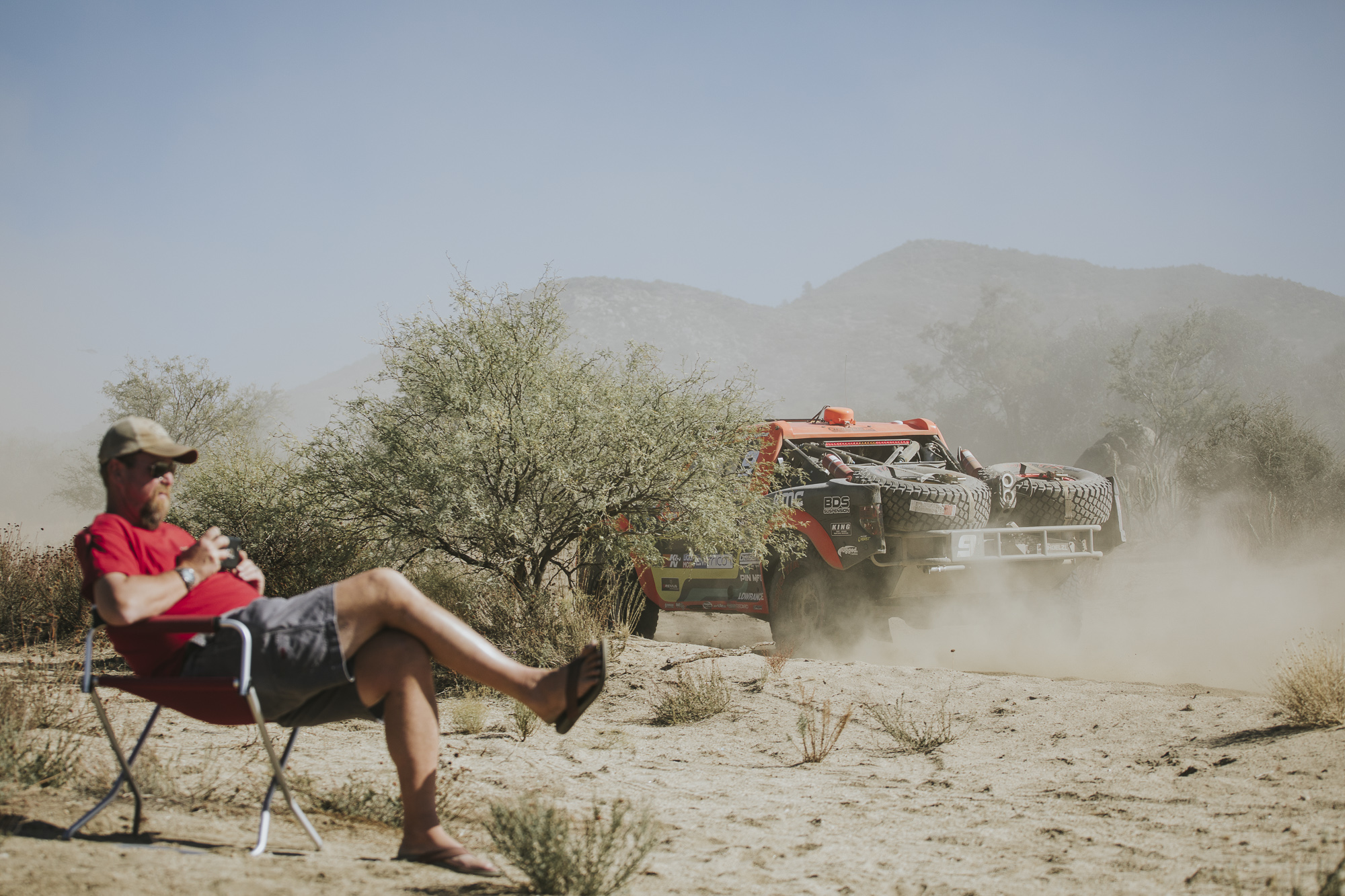
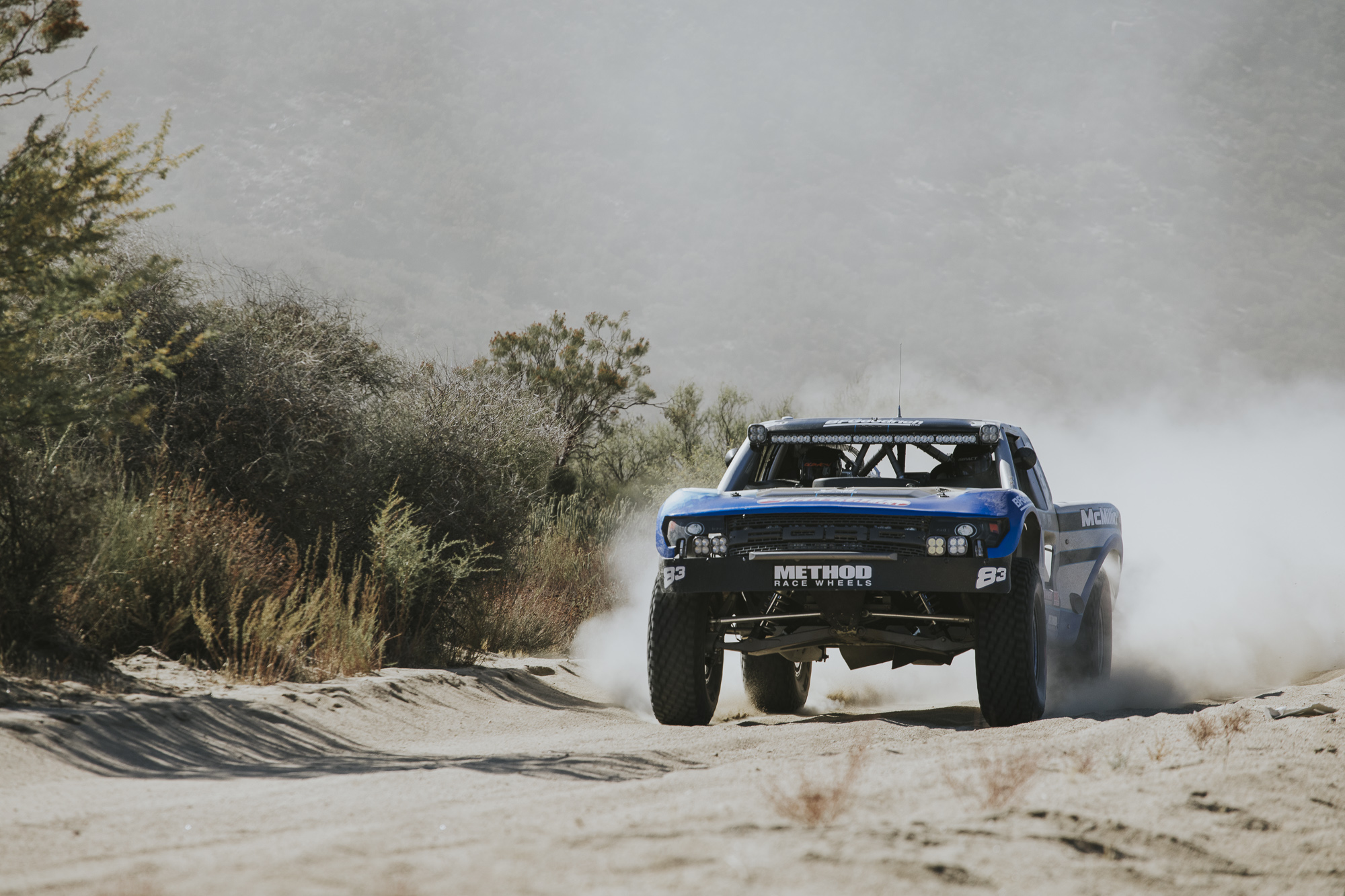
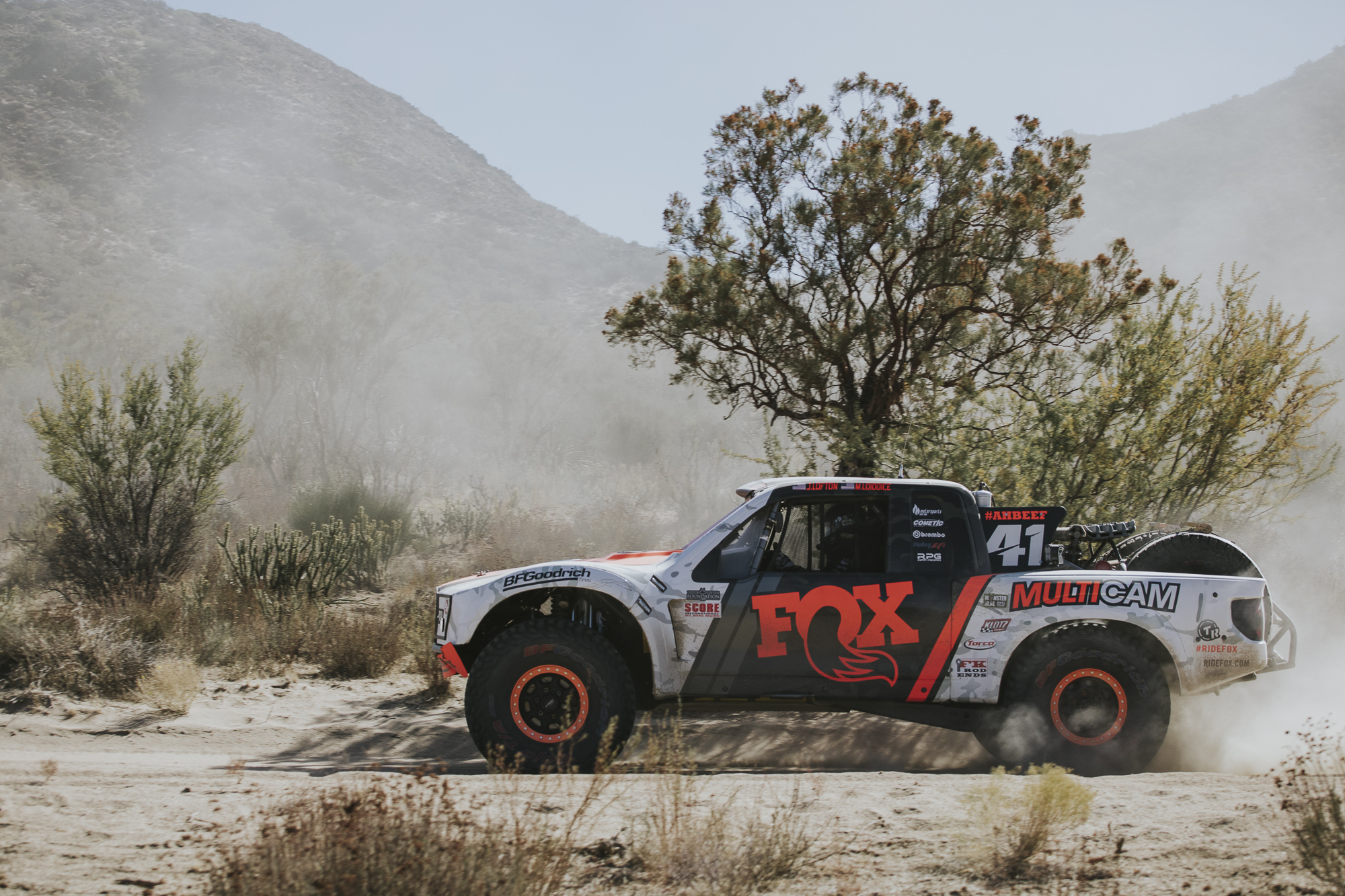

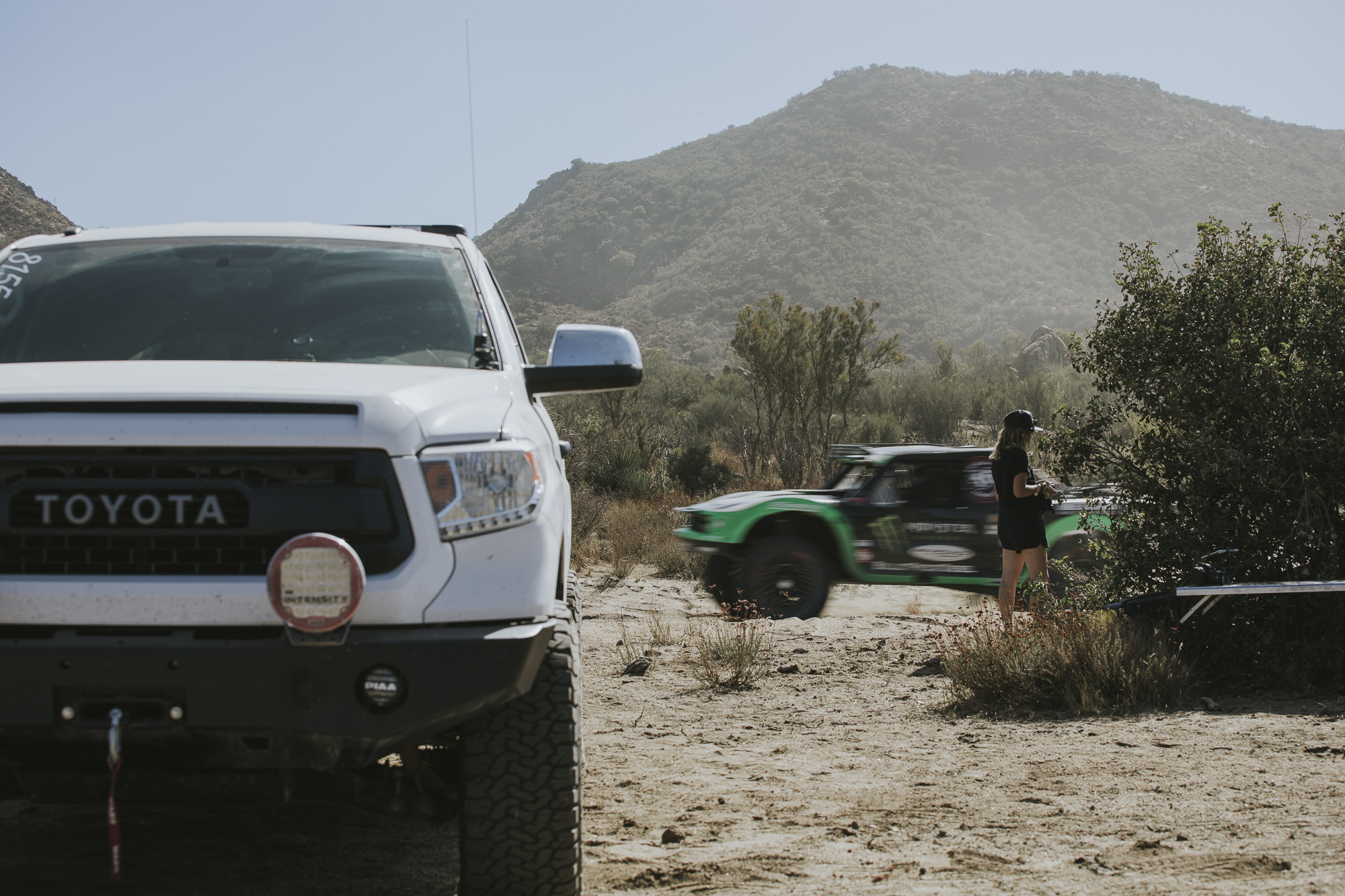
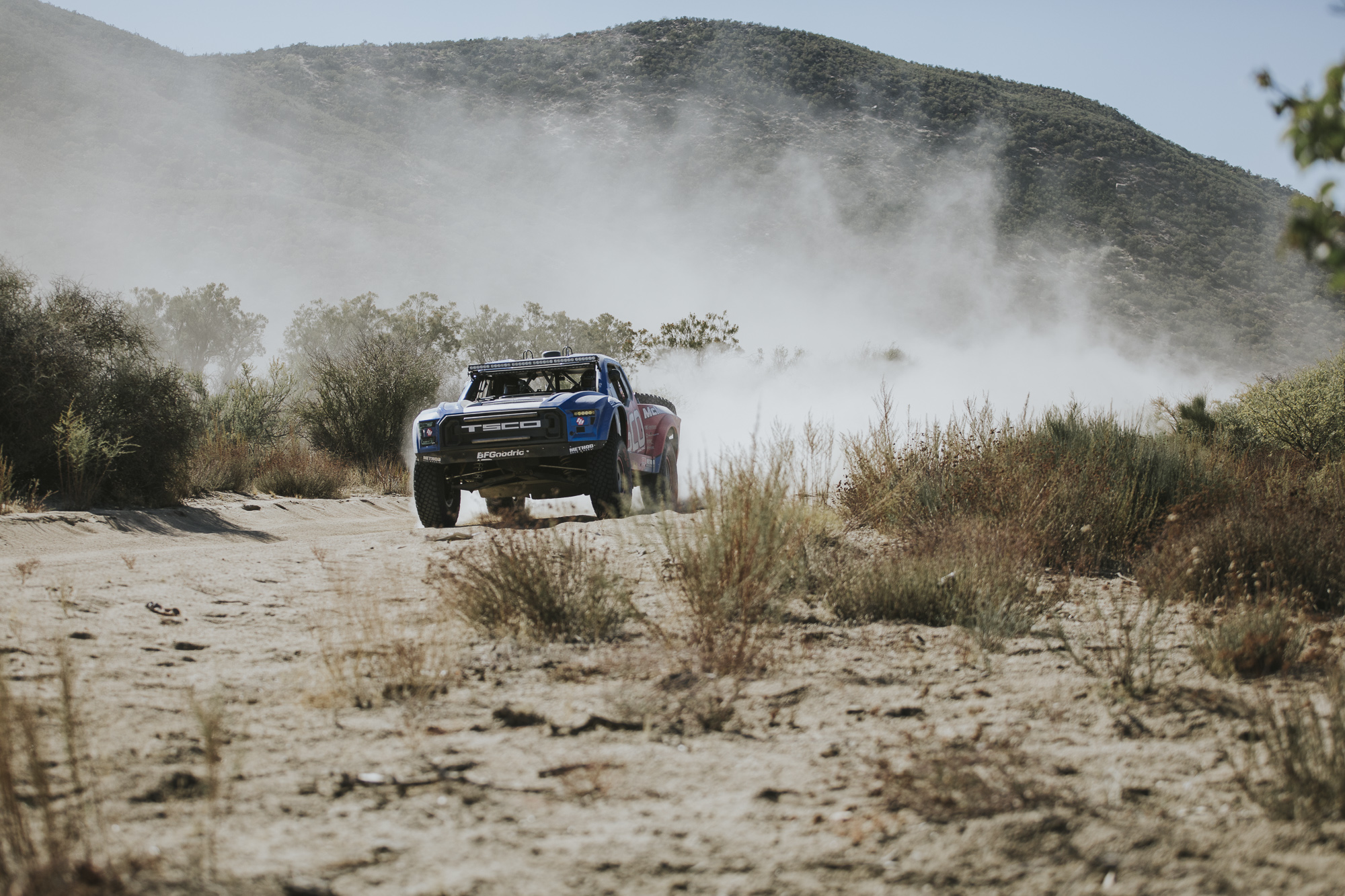
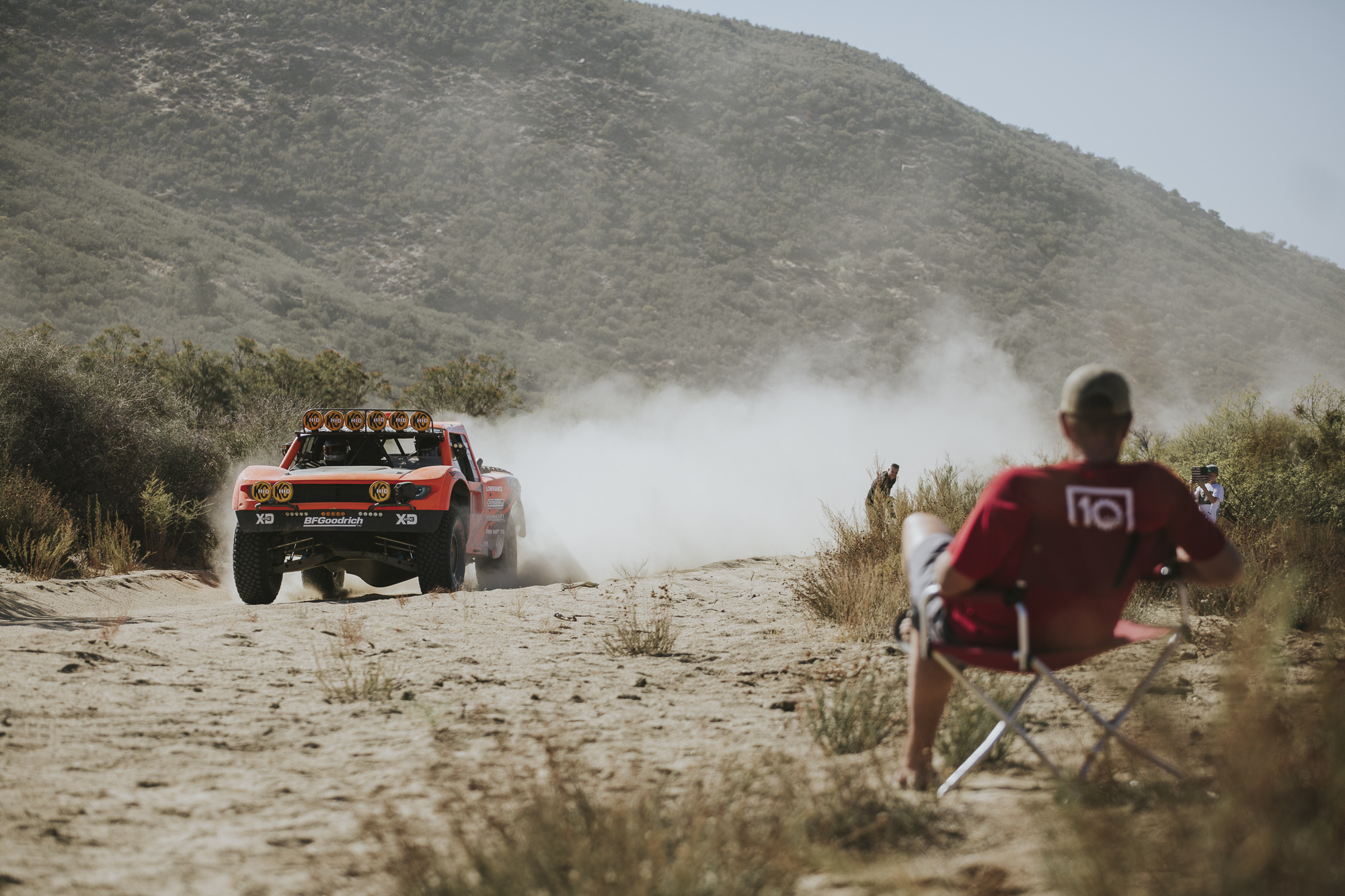

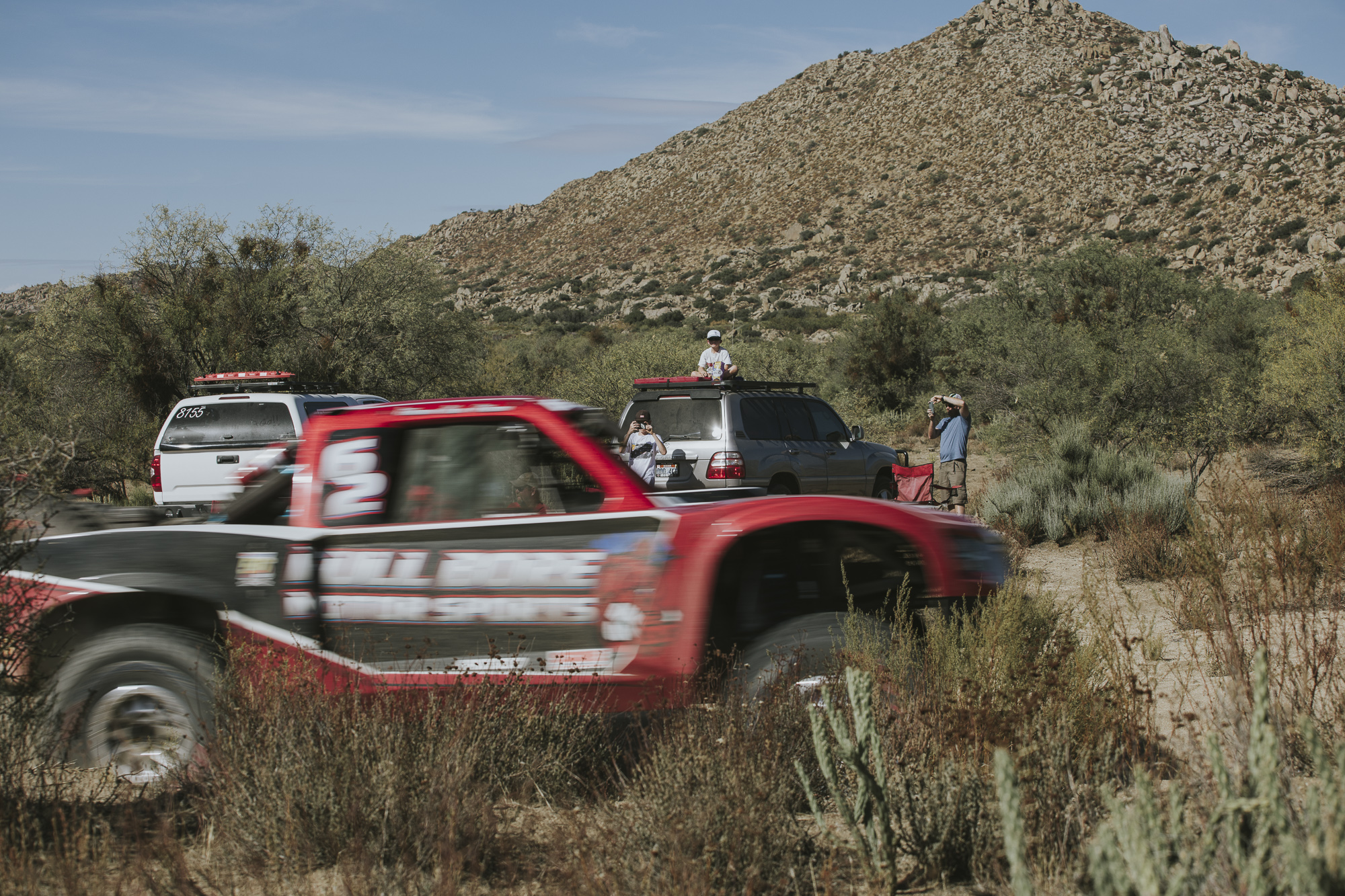

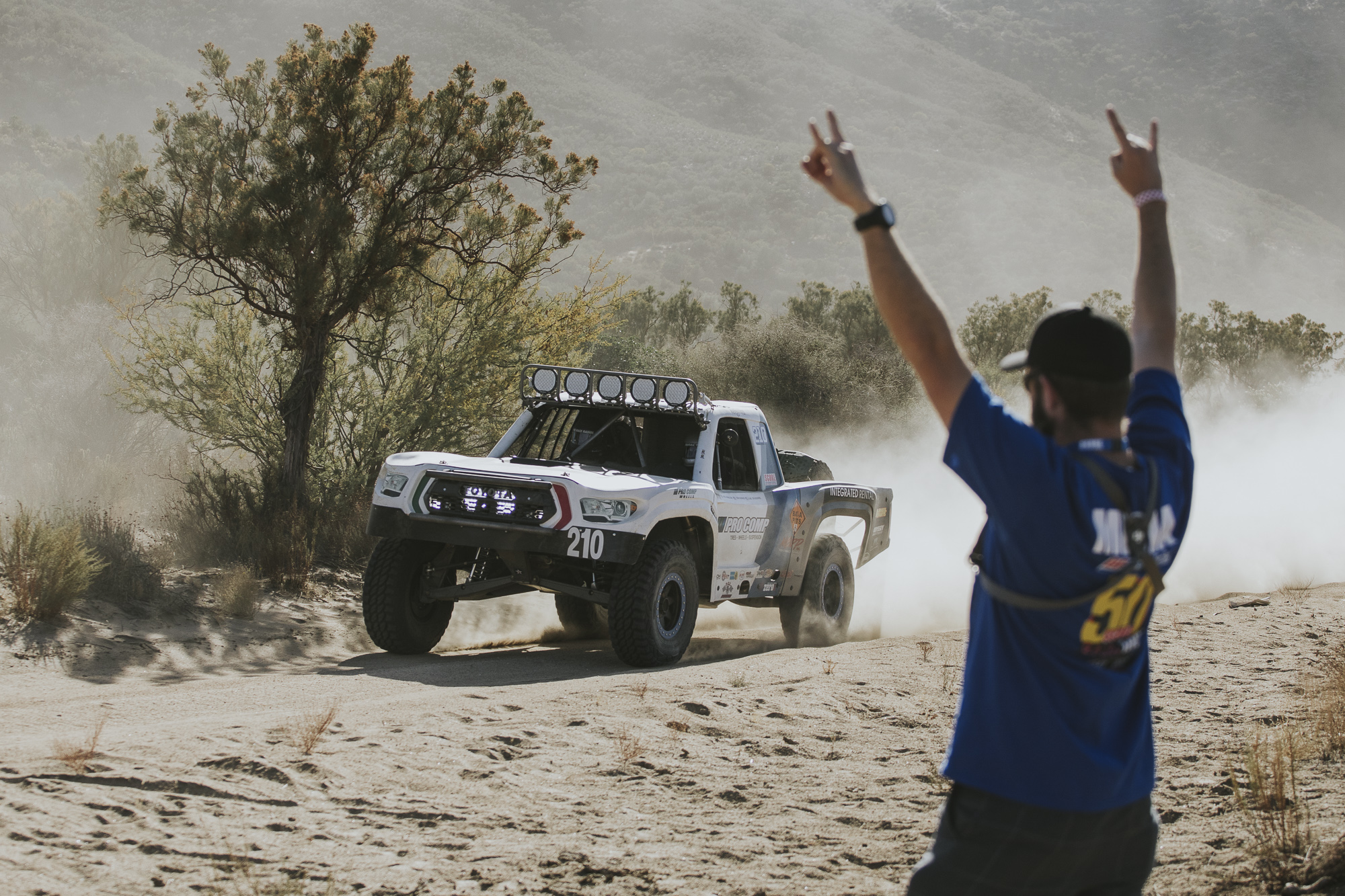
A lot of chasing the Baja 1000 can be spent waiting. After hours of watching the fastest classes, capturing photos and video, and monitoring comms waiting for Monica, there were times when it was necessary to get out of the sun and into the shade. We had 40 hours of racing ahead of us and it was time to pace ourselves. Don’t worry, we could still watch the race just fine from where the trucks were parked.
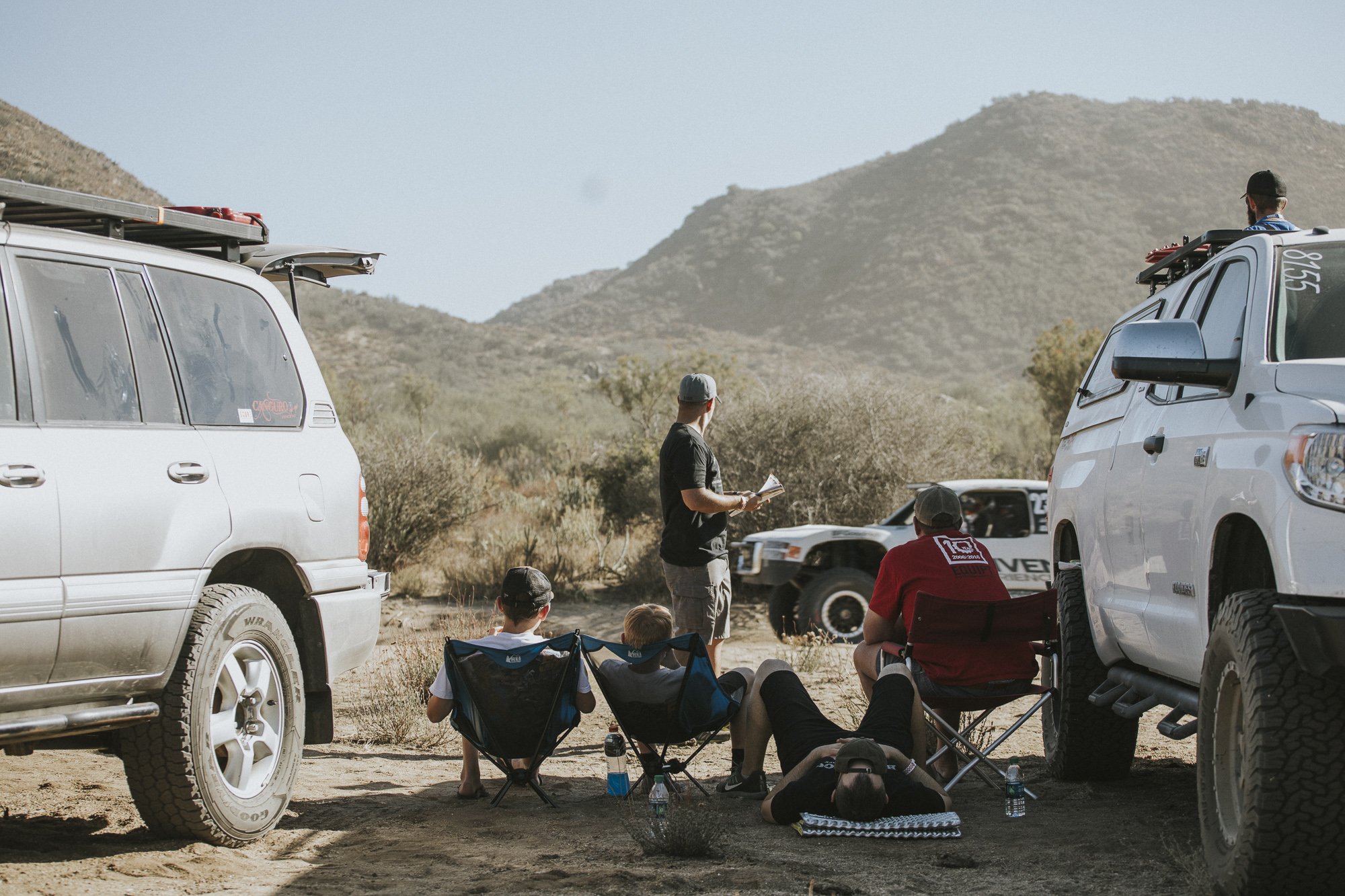
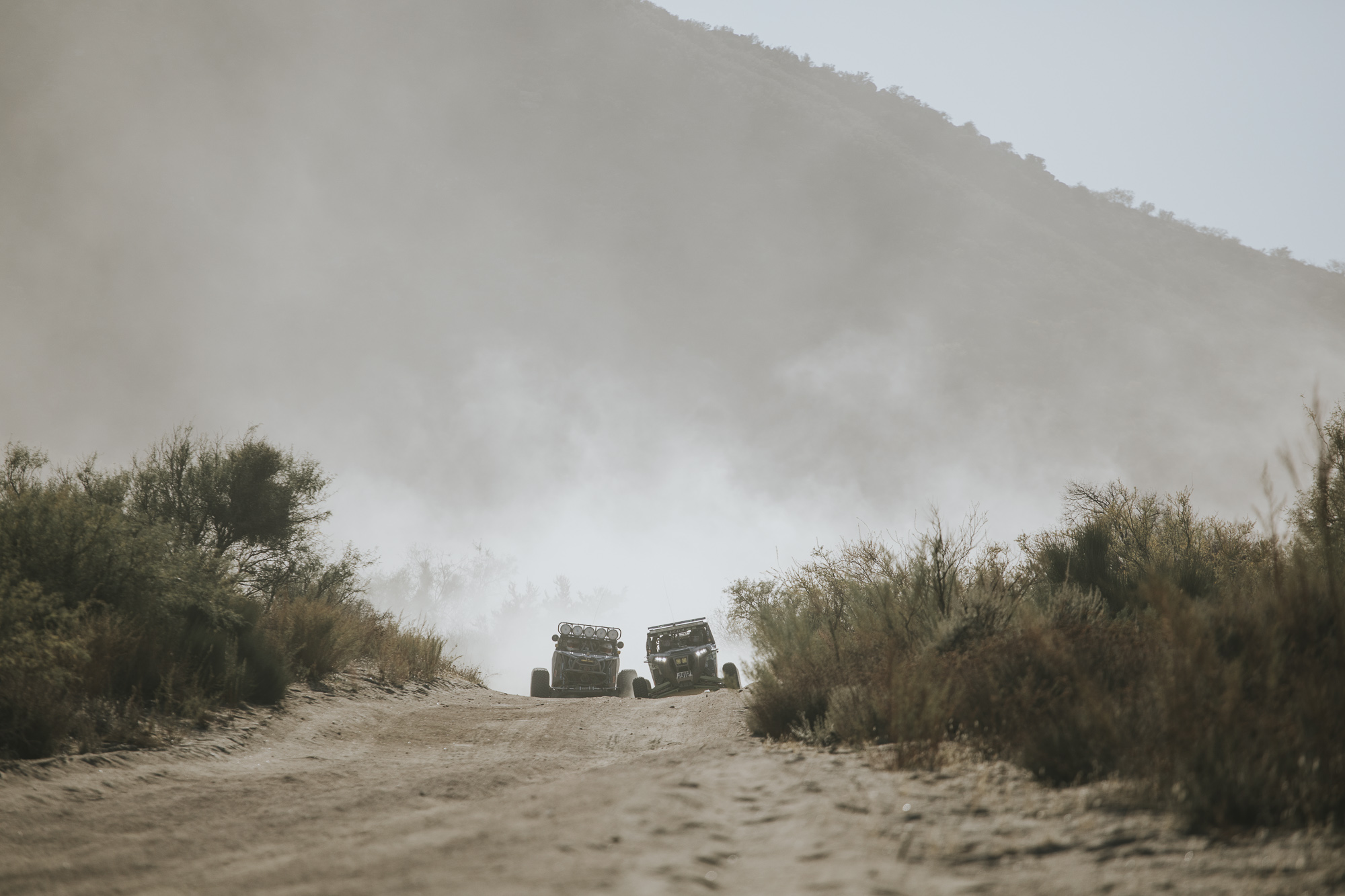
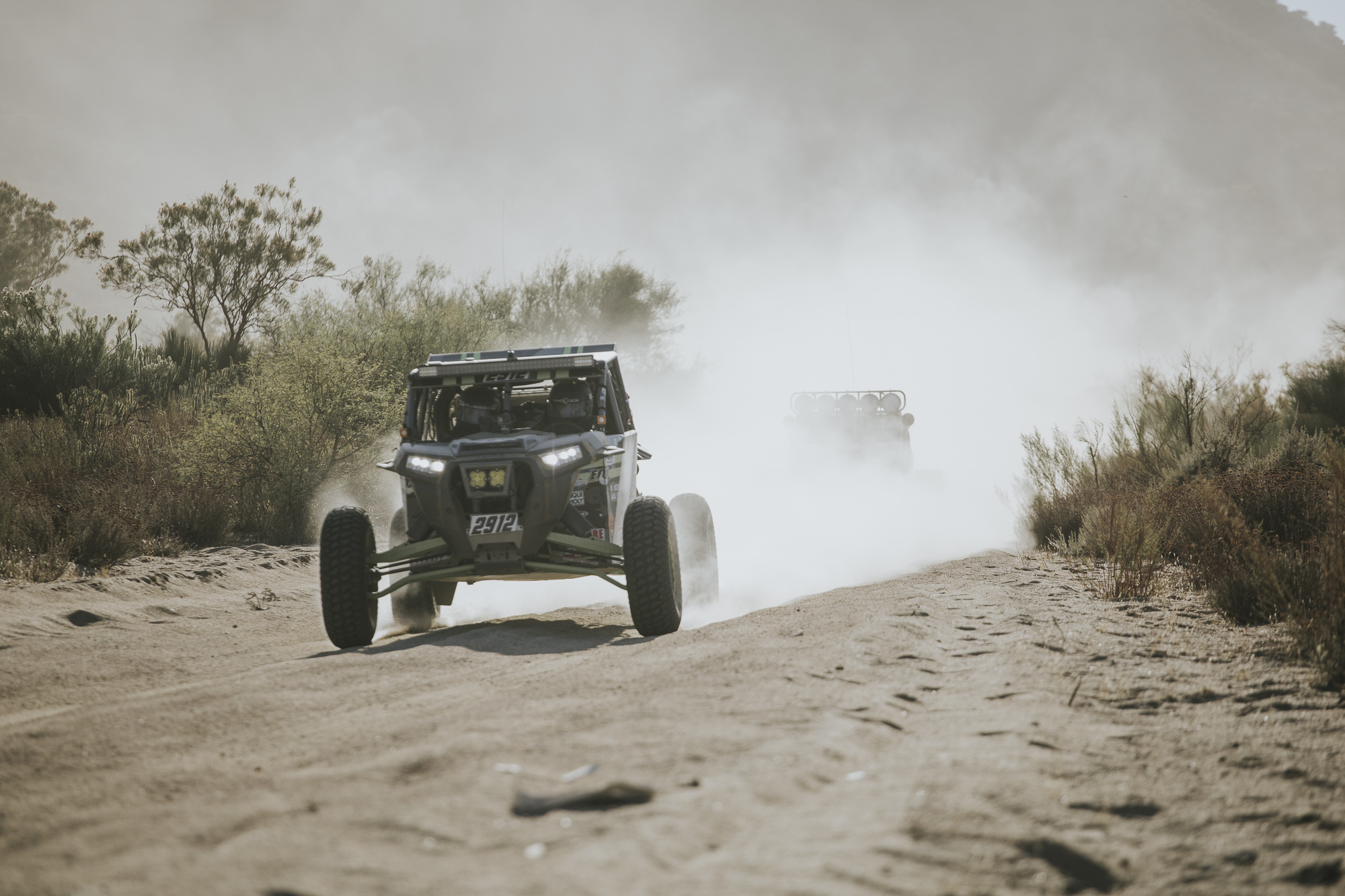
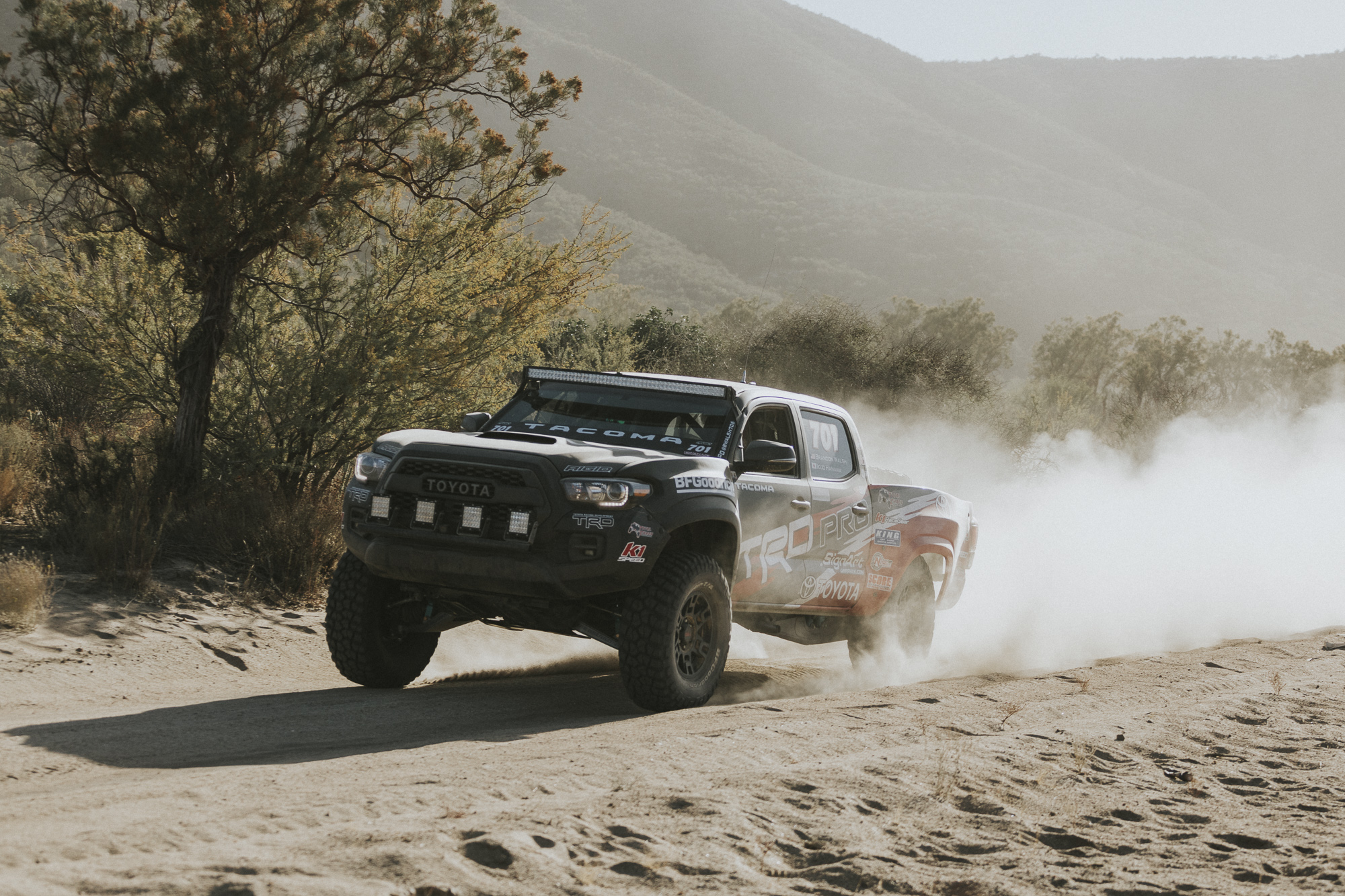
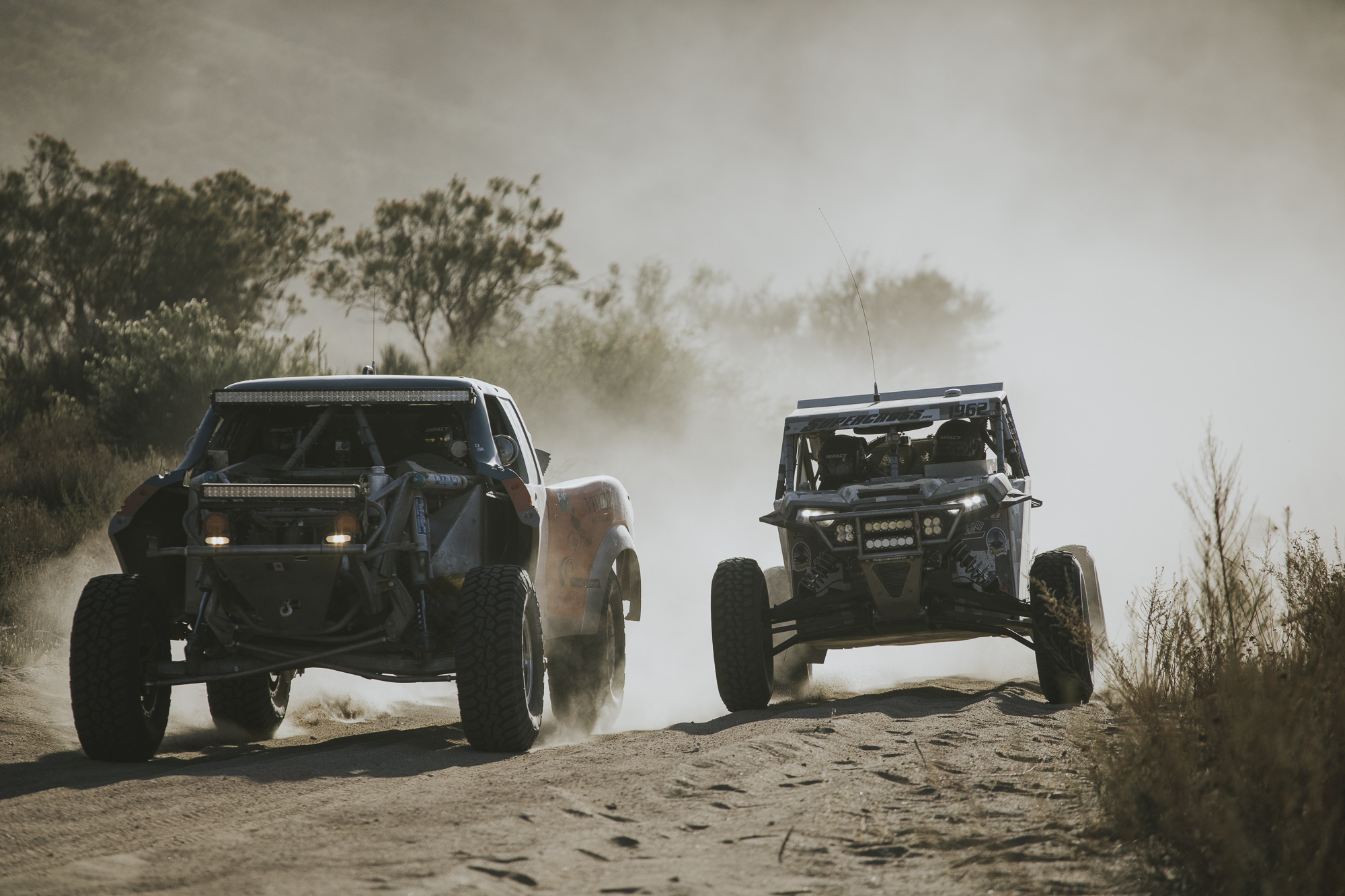

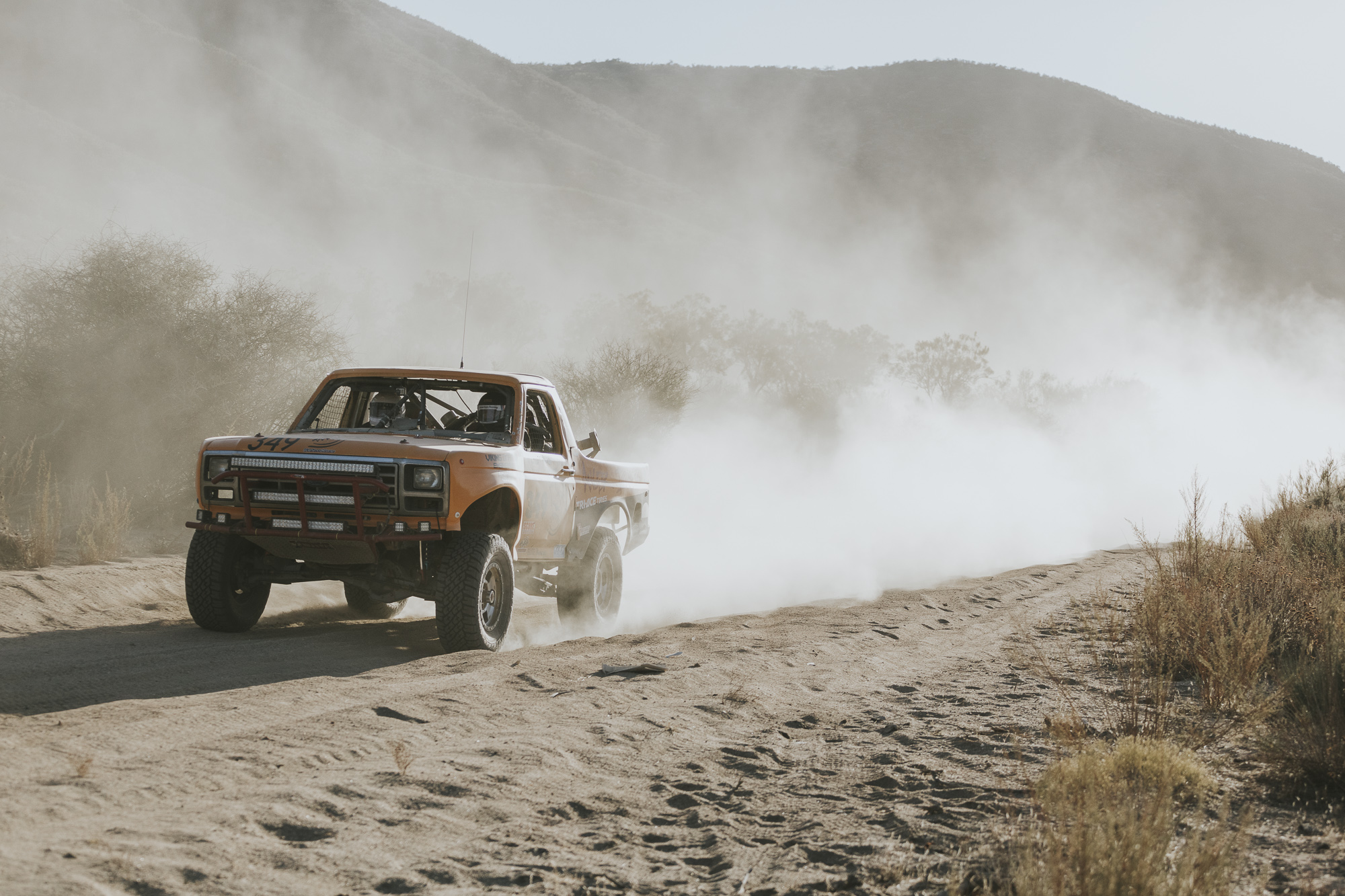
After about six hours of waiting we finally heard from Monica, the race truck, over the radio. They were on their way and running strong! Finally, a glimpse of Monica at race pace with her 5.7L bellowing out of a couple of shorty Magnaflow mufflers. Only 1073 miles to go!
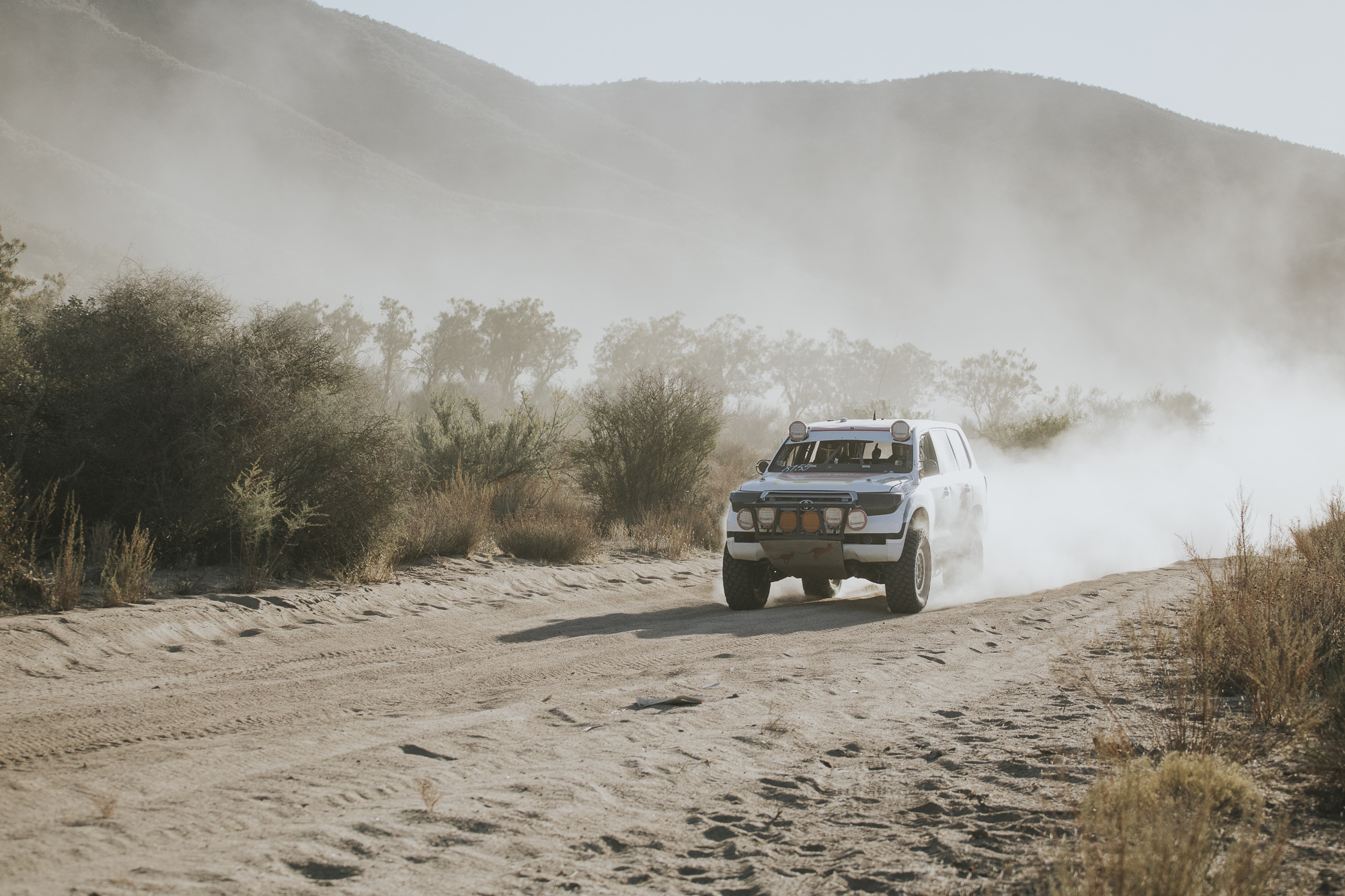
At this point in the race the only other competitor in the class, Rod Hall’s Hummer, was only two minutes behind. Canguro Racing has finished 2nd two years in a row to this Hummer. This year, they were doing their best to change that.
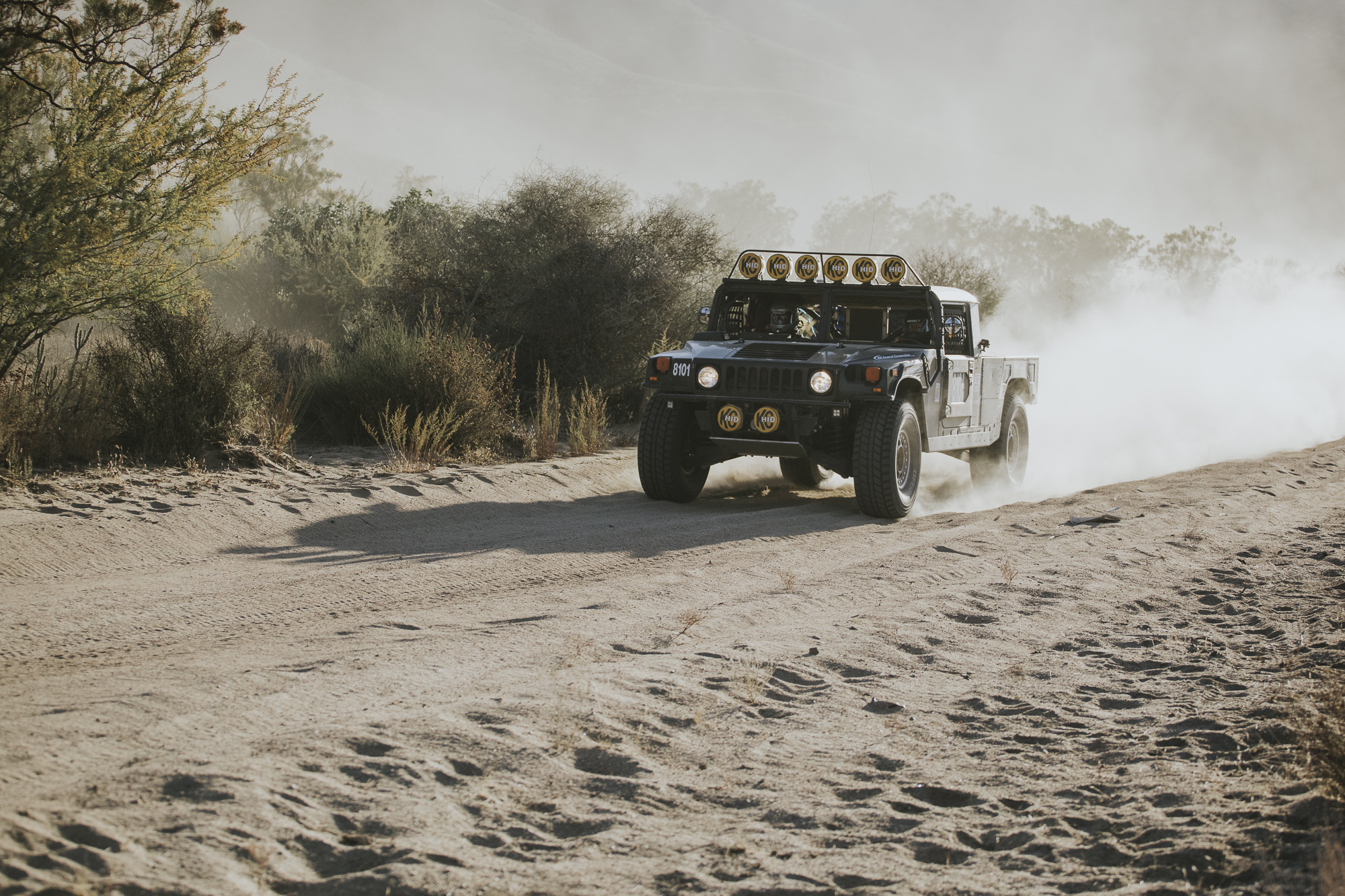
The next step was getting back to the highway. For us that meant driving about 3km down a live race course. At least we were going the same direction as race traffic! We packed up, positioned the truck for a quick getaway, and then waited for the dirt to settle. Once the air was clear of dust and the echo of race trucks we hammered down the two-track in an effort to avoid being nerfed from behind. I’m not going to lie to you, I definitely found the bumpstops of the Tacoma a few times down that road as we made our way out of there at speed.
Clear of the track, we continued to our next destination to monitor comms once again. The overall chase plan was set up to minimize the amount of time that the race truck is “in the dark”. Communication is key. Before long, Monica passed us once again and we were doing the one thing normally avoided when travelling in Mexico – driving in the dark. I’ll paint a picture. You’ve got narrow roads, no shoulders, cows eating grass mere feet from traffic, locals swerving on both sides of the yellow line, and very limited emergency services if things go too far sideways. Oh yeah, and you need to hustle to get to the next pit.
It was a pleasure to have Paul out in front of us the entire time. We always had taillights to follow and were given a heads up over the radio when it was clear to pass slower traffic. “Chase 8, you are clear to pass.”

We heard the chatter from Will and Ryan (who were currently in the race truck) on the radio. “Ninety five miles per hour. One hundred miles per hour!” The excitement level in the race truck was high, they were pulling ahead of the Hummer and the chase trucks were pushing hard to keep ahead of Monica.
We hustled hard to race mile 226 so we could get there before Monica. A few sections of the race course are on the highway and there has been a recent change to the highway speed limits for race traffic in order to improve the overall safety of those involved in the race. Every second that a race vehicle spends above the speed limit is a 1 minute penalty, so it’s prudent that the race truck’s speed remains below that limit while on the road. The easiest way to do this is to have one of the chase trucks set the pace. In this case it was our partner, Chase 5, out in front.
Excessive speed in 80km/h zones with a few interesting passes and evasive maneuvers on painfully narrow roads helped us arrive just a couple minutes before the race truck. I’ll spare any more details to save my mom from worrying as she reads this. I described it to Ashley as, “If we were driving our 1990 Pickup we would have been a half hour late.”
We made a Monica sandwich as Chase 5 led and our truck pulled in behind the Land Cruiser. Our moods were high, we accomplished our goal, and the race truck sounded oh so badass as we trailed behind. 30 miles later Ryan and Will (in Monica) ditched out onto the course and we continued to our next waypoint.
Half an hour later the radio crackled, “This is Canguro race. We lost a wheel.” Shit. You could almost hear the collective sigh of the chase team. The passenger front tire came off the truck and slammed into the fender a couple of times before coming to a stop on the race course. Will slowed the Land Cruiser down with only 3/4 of the wheels on the ground. The entire hub assembly was gone with the wheel.
Dave explained the failure, “During prep we used the wrong torque setting on our unit-bearing assembly. Toyota uses an SST for assembly that has a lower torque rating than a standard wrench. It was a simple oversight but in racing those are glaringly magnified.”
Most of the team was close to Coco’s Corner so six out of the eight trucks gathered together. At 2am Coco’s was looking like a combination of war zone and automotive triage centre. Torn up race trucks rolled in to find their pit crew and others blasted past on the course adjacent to where we were set up. The squawk of race radios, rumble of V8s, and frantic crews drowned out any silence. Flickering dust particles, piercing HID lights, and the ever-present Milky Way flooded the darkness.
The two other chase trucks, which were farther down the course, took inventory of spare parts. A spindle and hub/unit bearing assembly were required as well as a front brake rotor and wheel spacer. Spindle, check. Hub, check. Wheel spacer, check. Front brake rotor… not so much. Apparently that spare rotor was still back in Ely, NV.
This is where things get creative. Don’t forget, this whole scenario started off at 2am. Everyone had already been awake far longer than usual, but good decisions were still being made. Ryan Davis got on the satellite phone with Dave to create a plan of action for the repair and for a revised chase plan. Ryan later called Dave a savant when it comes to logistics. I agree.
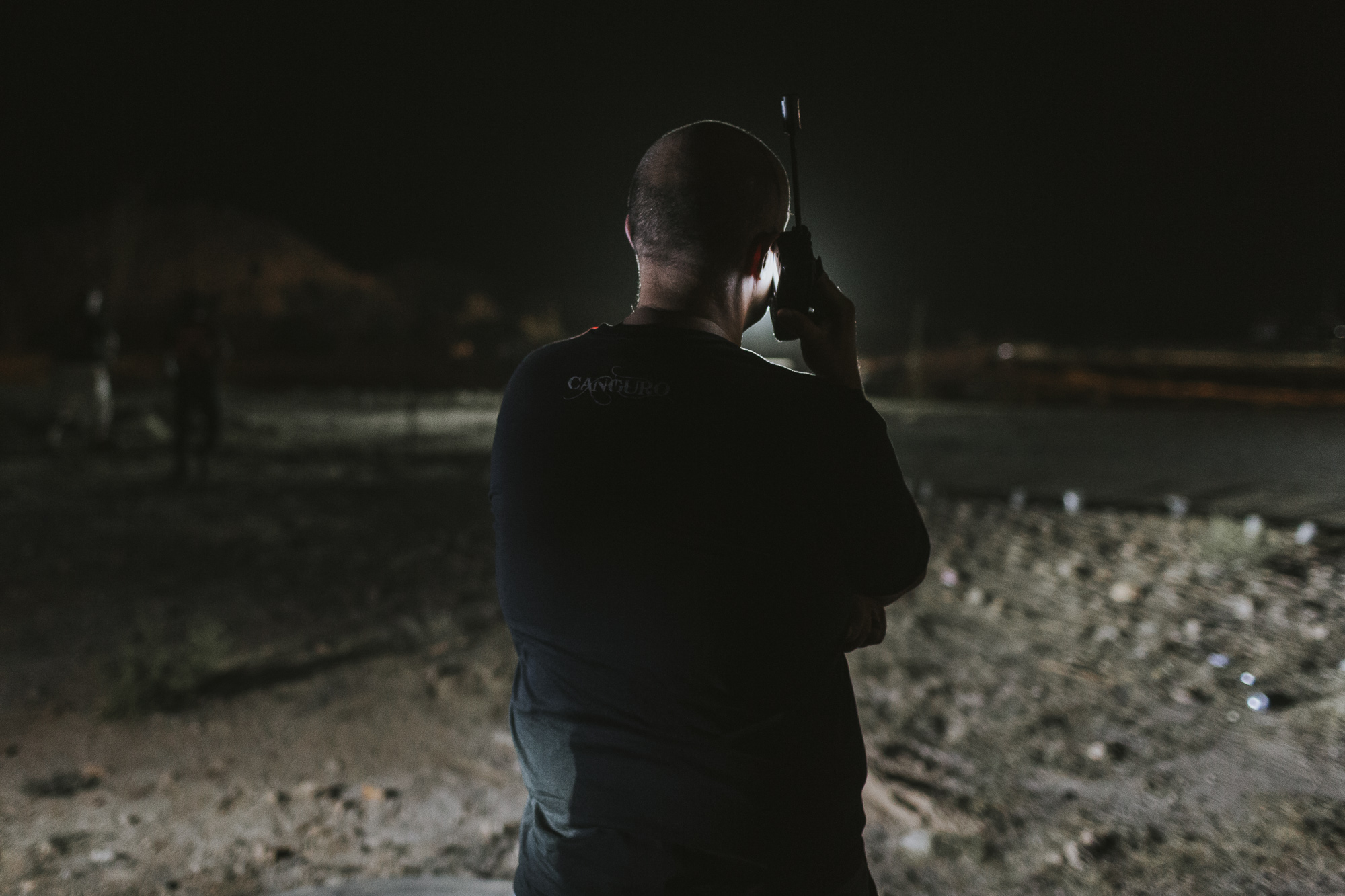
Dave just happens to run identical StopTech brake rotors on his Tundra. While Paul May hammered down course to courier the parts, Dave’s truck was dismantled and brake rotor removed. The parts were handed off to Paul and Dave’s black Tundra was loaded on the trailer. Thankfully, a new rotor was found at an auto parts store the following day and installed so the Tundra could make it’s way back to the the Utah under it’s own power.
While all this planning was happening, Will and Ryan were piecing the truck back together on the side of the race course so they could limp it into the pits at Coco’s Corner.
A couple hours after the wheel came off we saw Monica rolling into Coco’s. Will and Ryan took the opportunity to get out of the truck to stretch and get some food and water. The driver’s side hub bolts were checked as a precaution. Loose. Nothing a little Loctite and proper torque spec can’t fix.
Another half hour was needed before Paul skidded into the pits, parts in hand. Brian Andreasen was front and center making quick work of parts removal and reinstallation. One of the most satisfying parts of the race was watching these guys slam the truck back together in mere minutes. Just a few hours earlier there were jokes about calling the AAA flatbed, but now we were watching two guys strap back into the truck and blast off into the night. Only 834 miles to go.
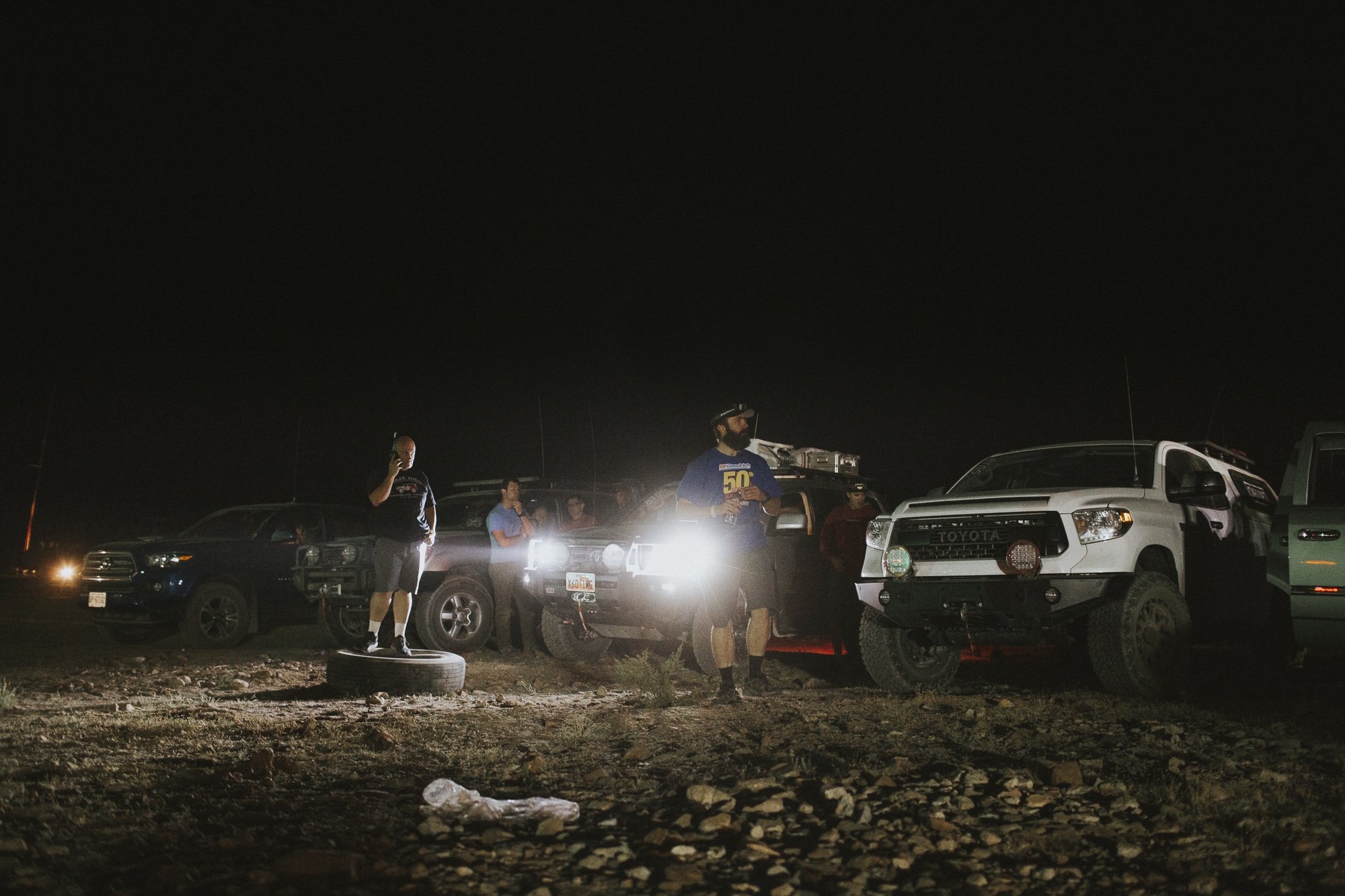
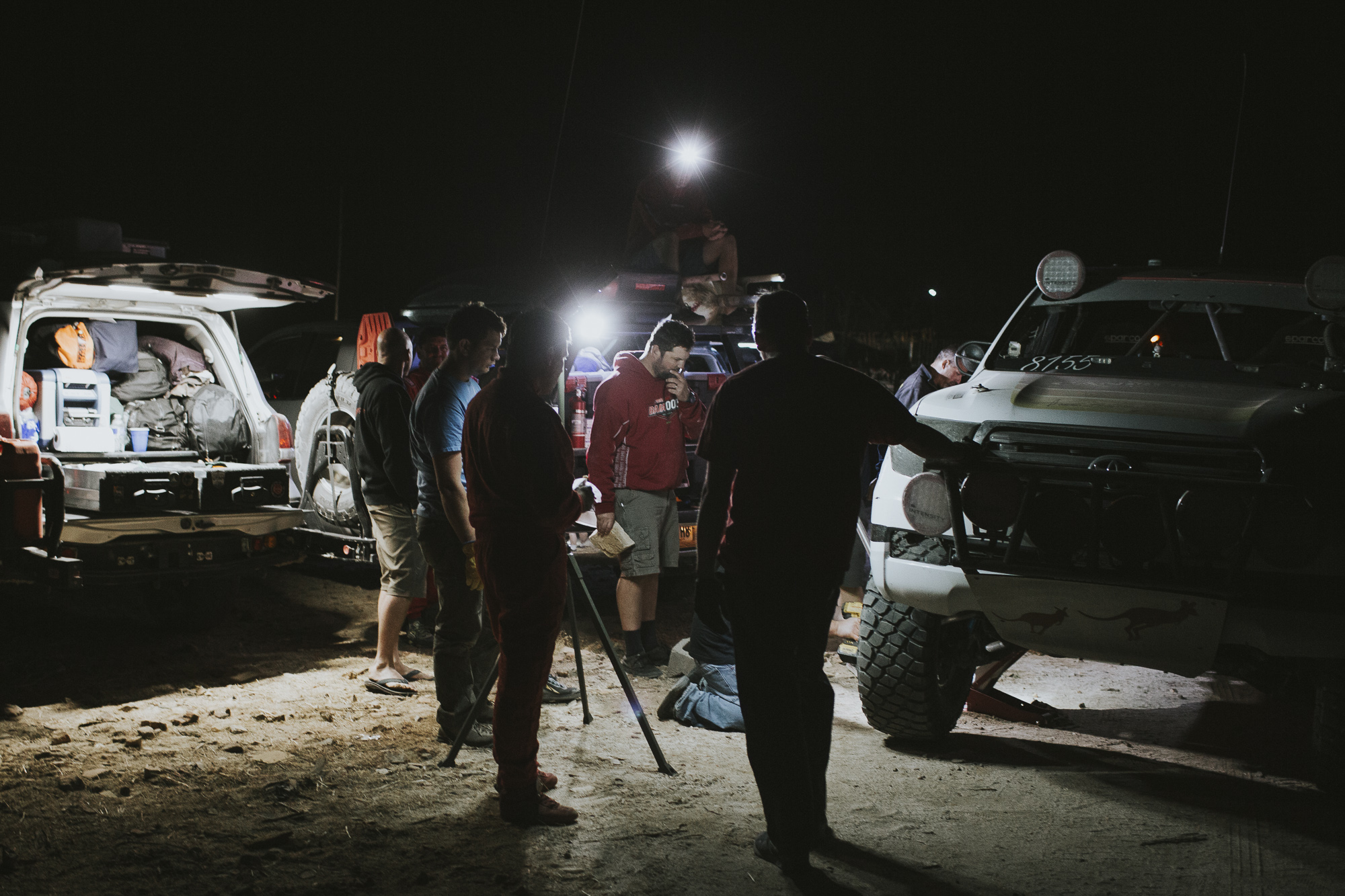
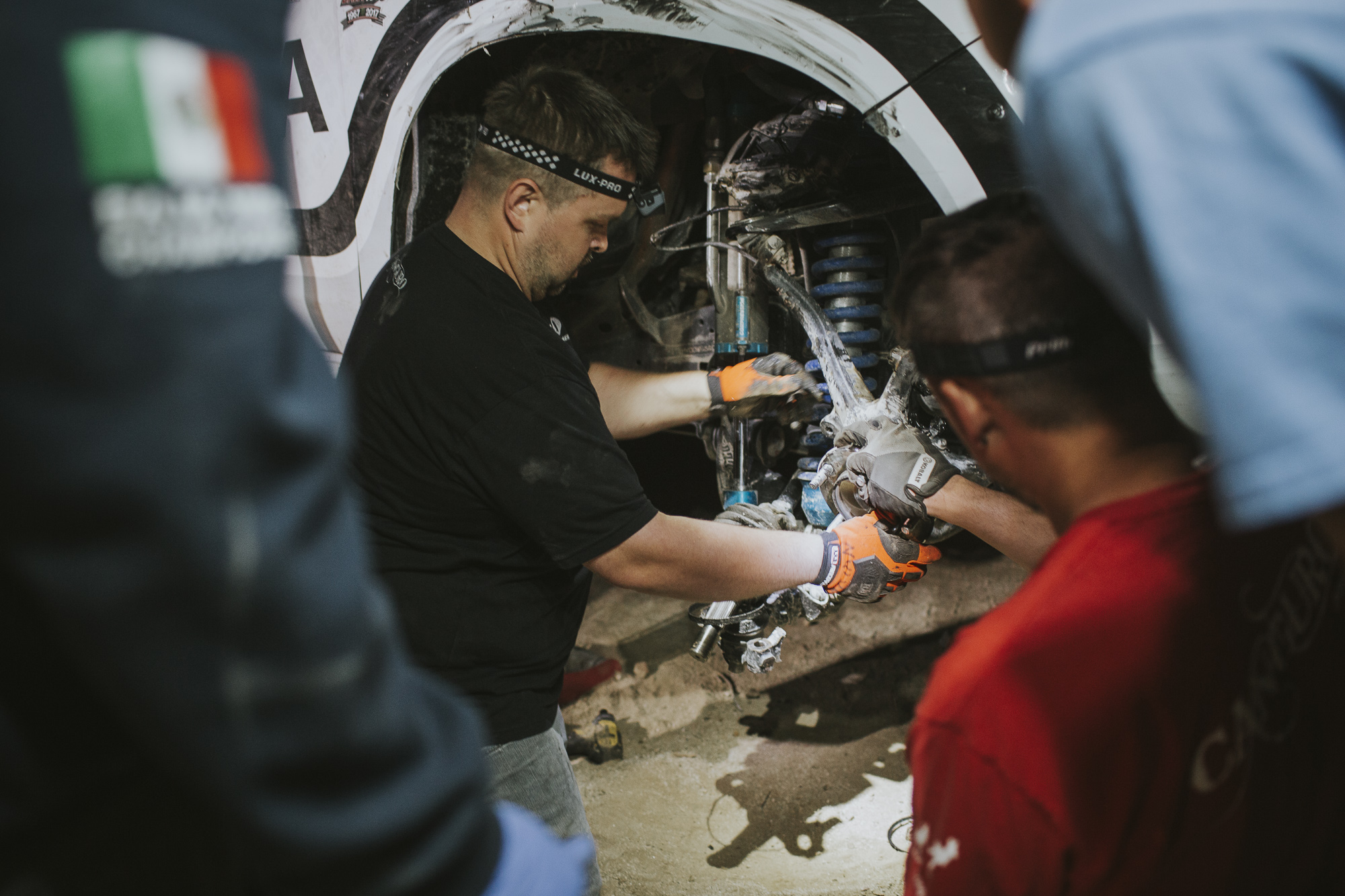
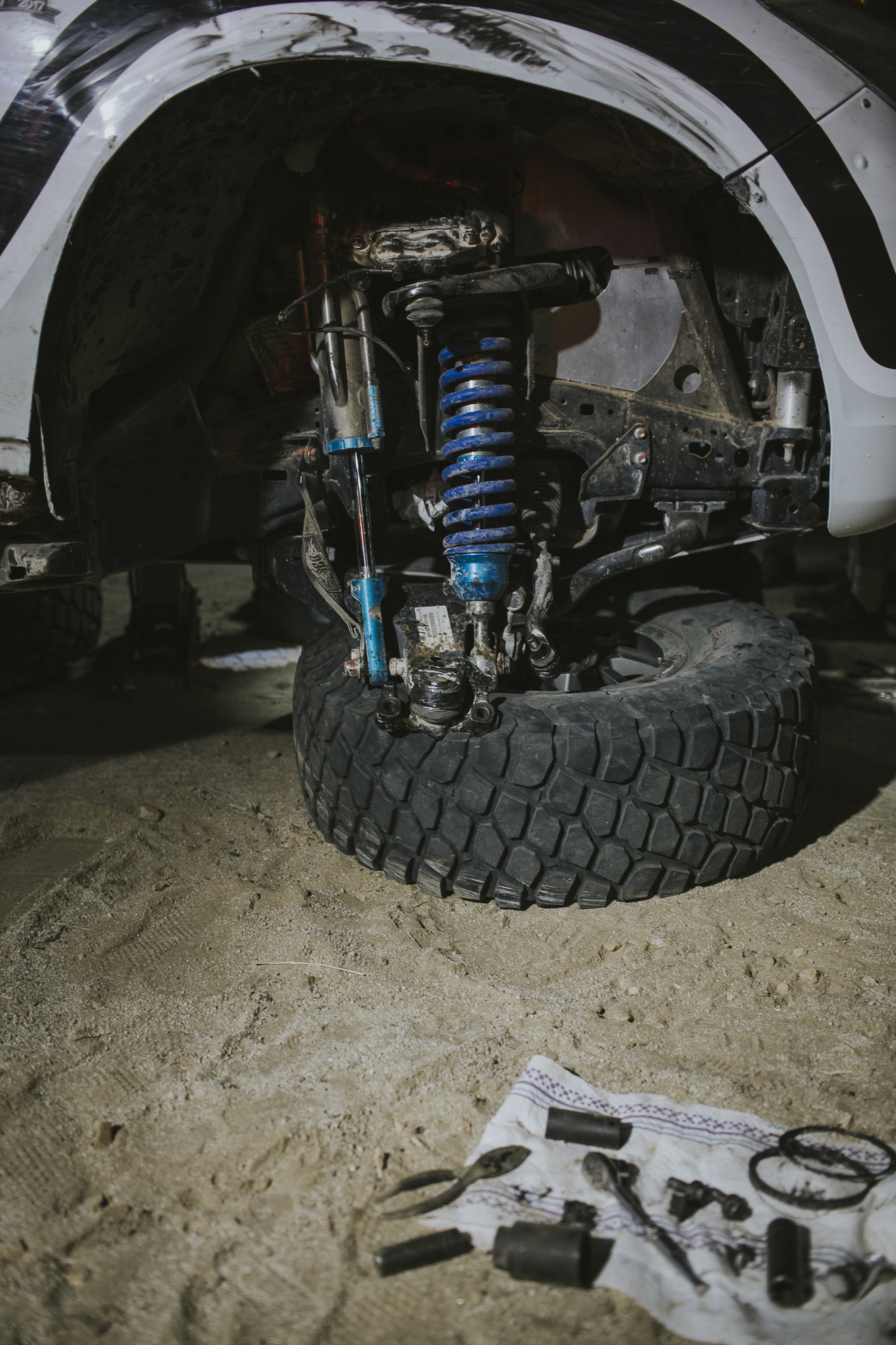
Canguro Racing was now 3 hours behind the leader, Rod Hall, but had another 20 hours of racing remaining to make up that time. As it turns out, there would be no other major issues for the remainder of the race. Pit stops went as planned, we enjoyed our “short cut” through San Juanico, watched Monica pass us at RM600, and then had about six hours of driving to get to RM930 where we were set to monitor comms.
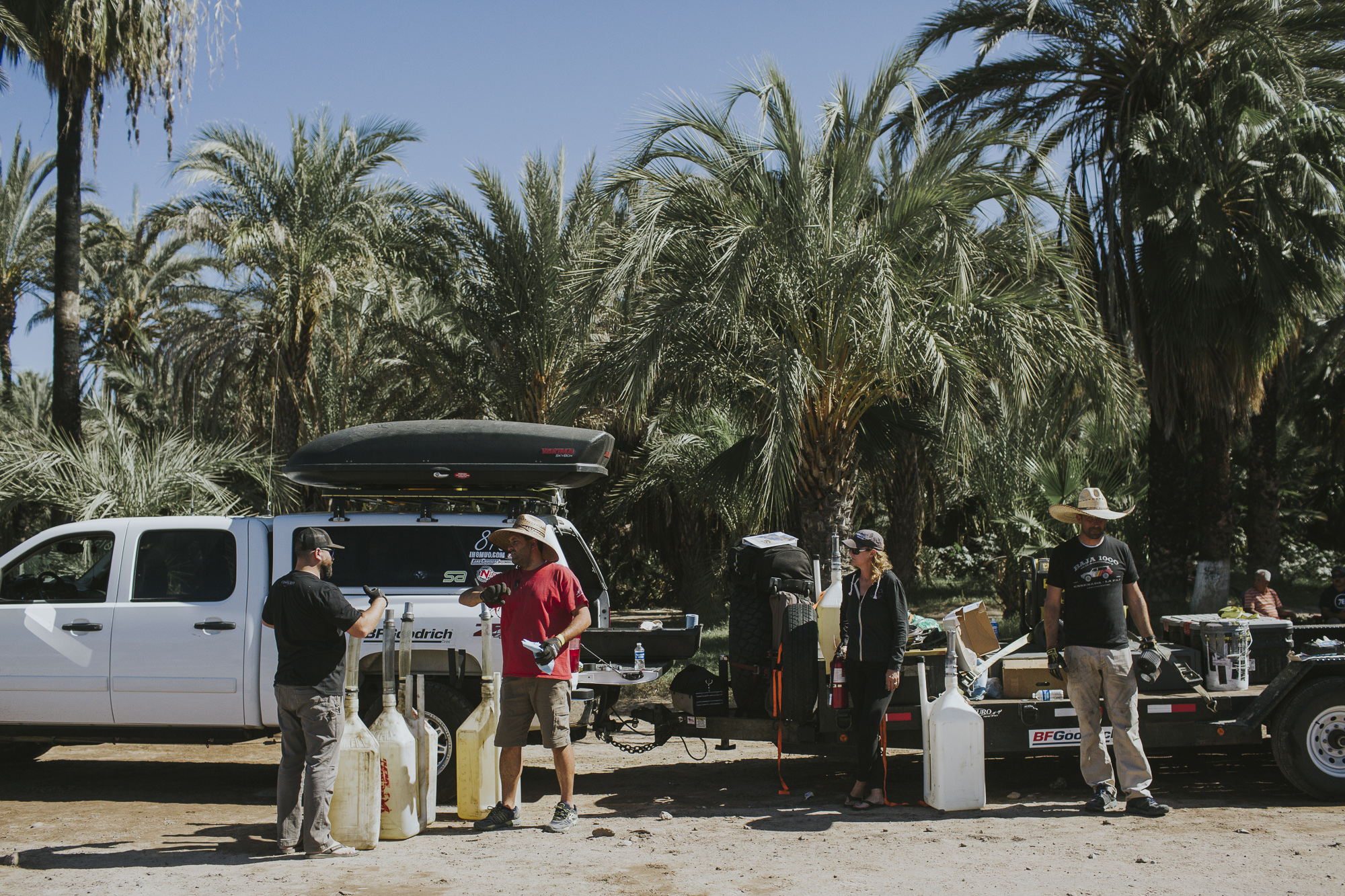
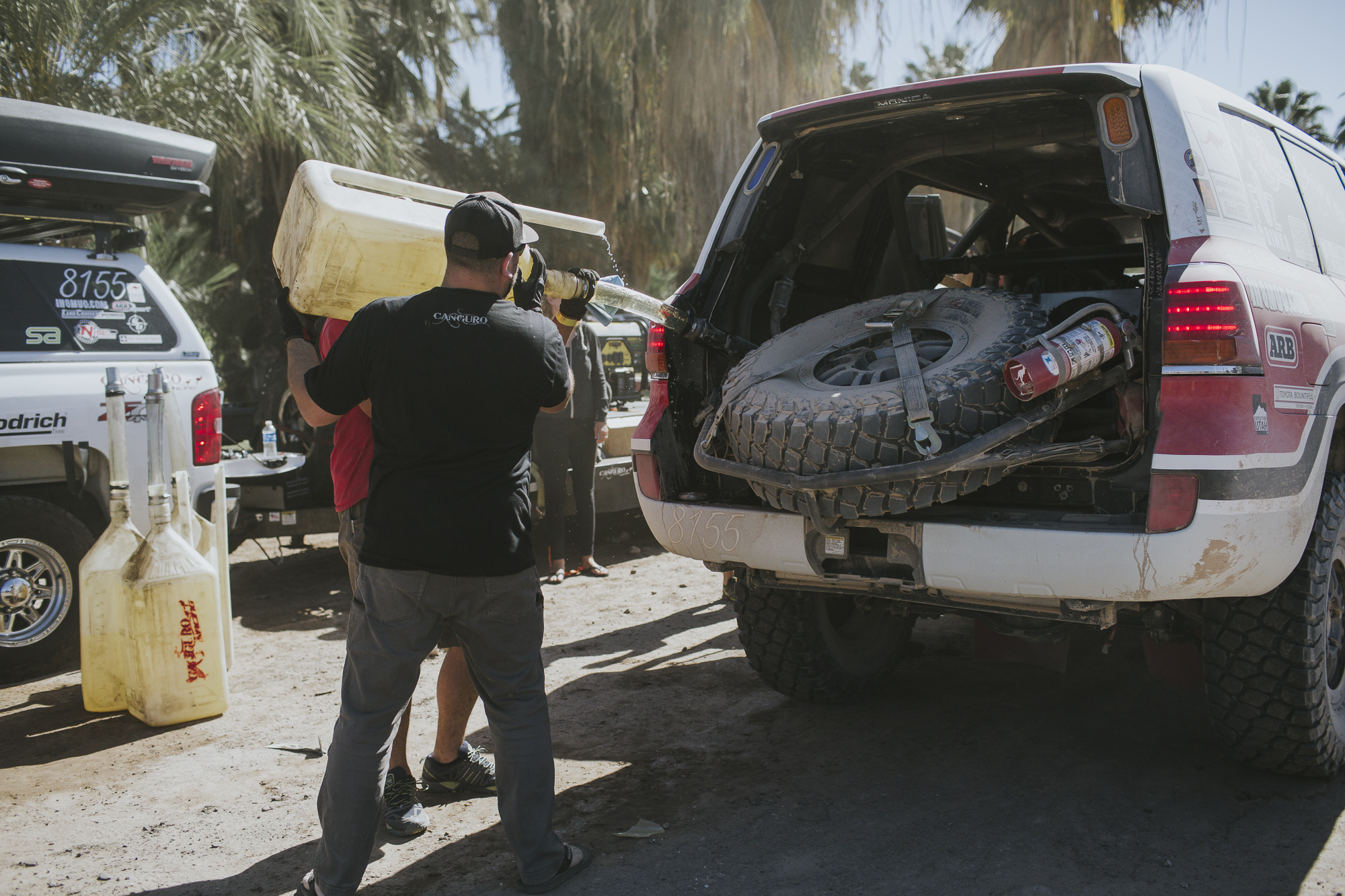
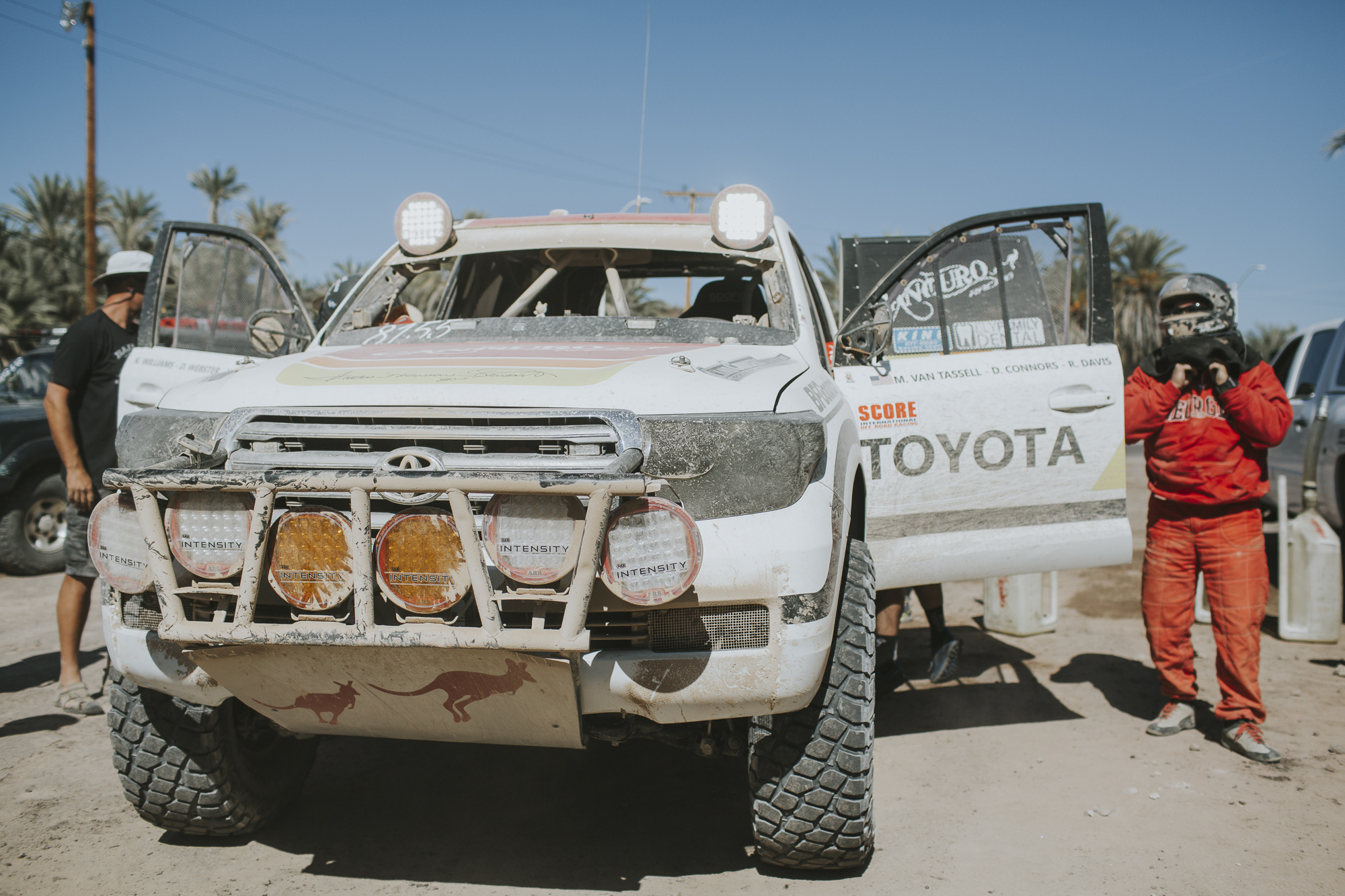
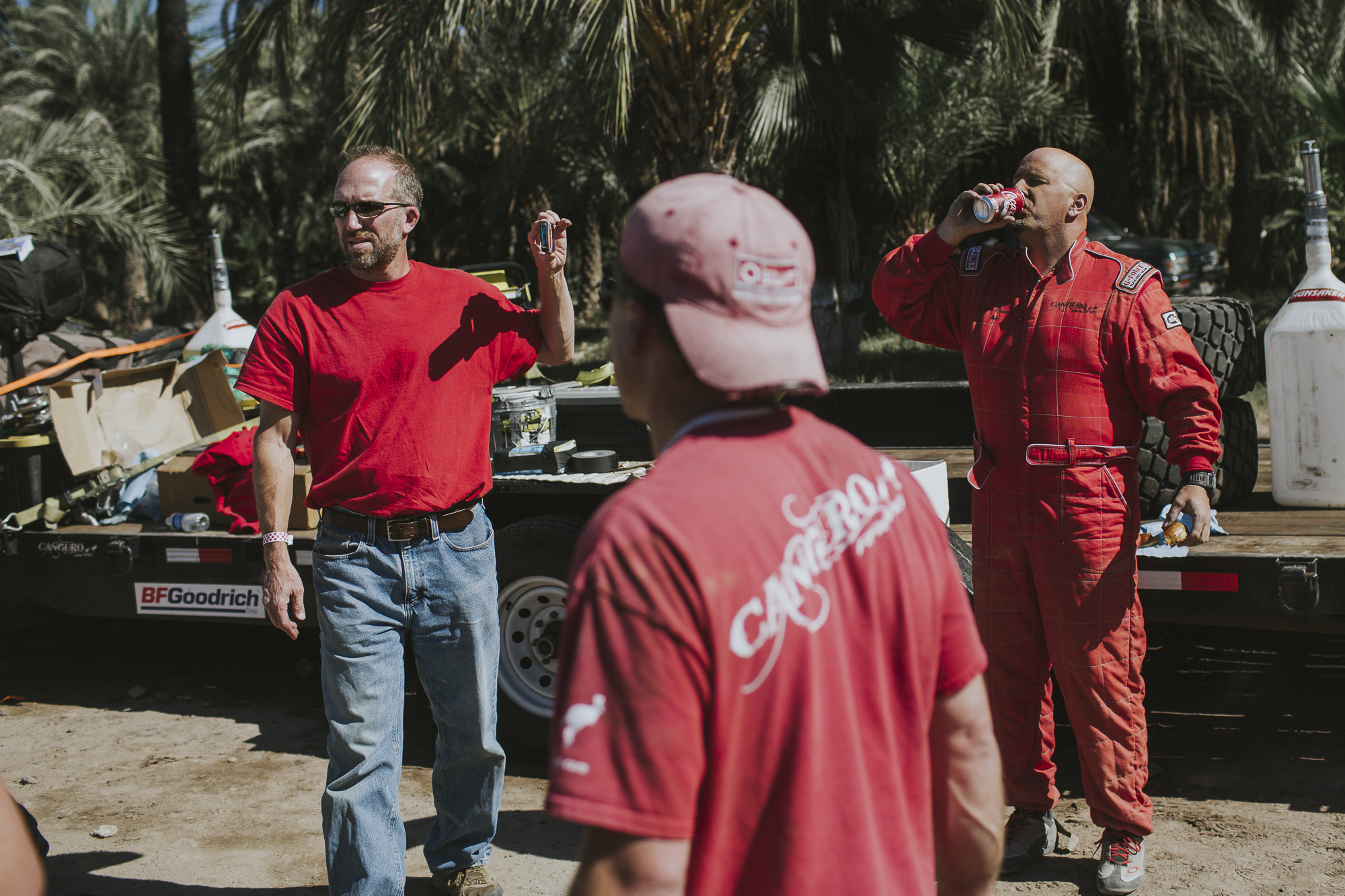
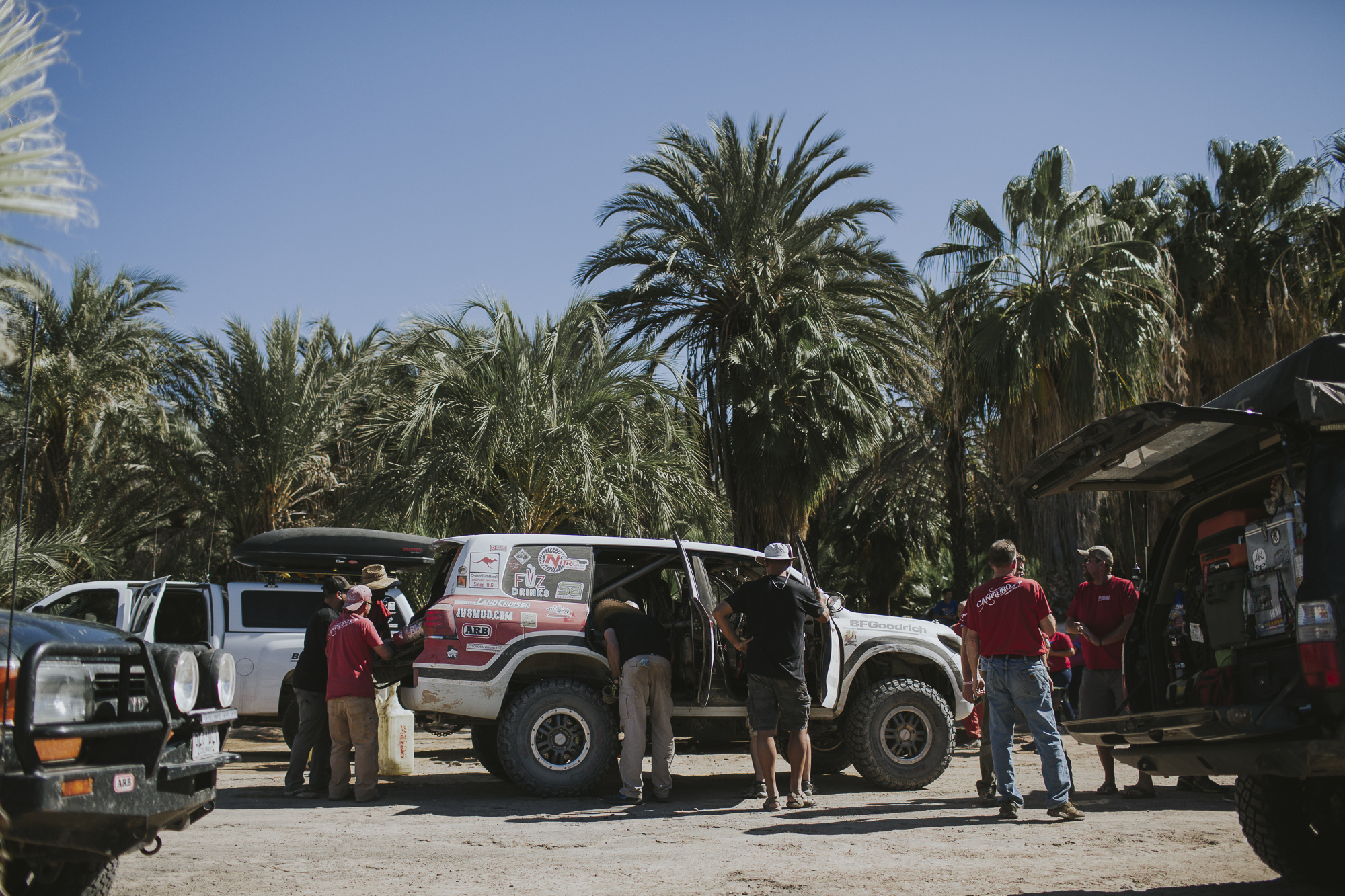
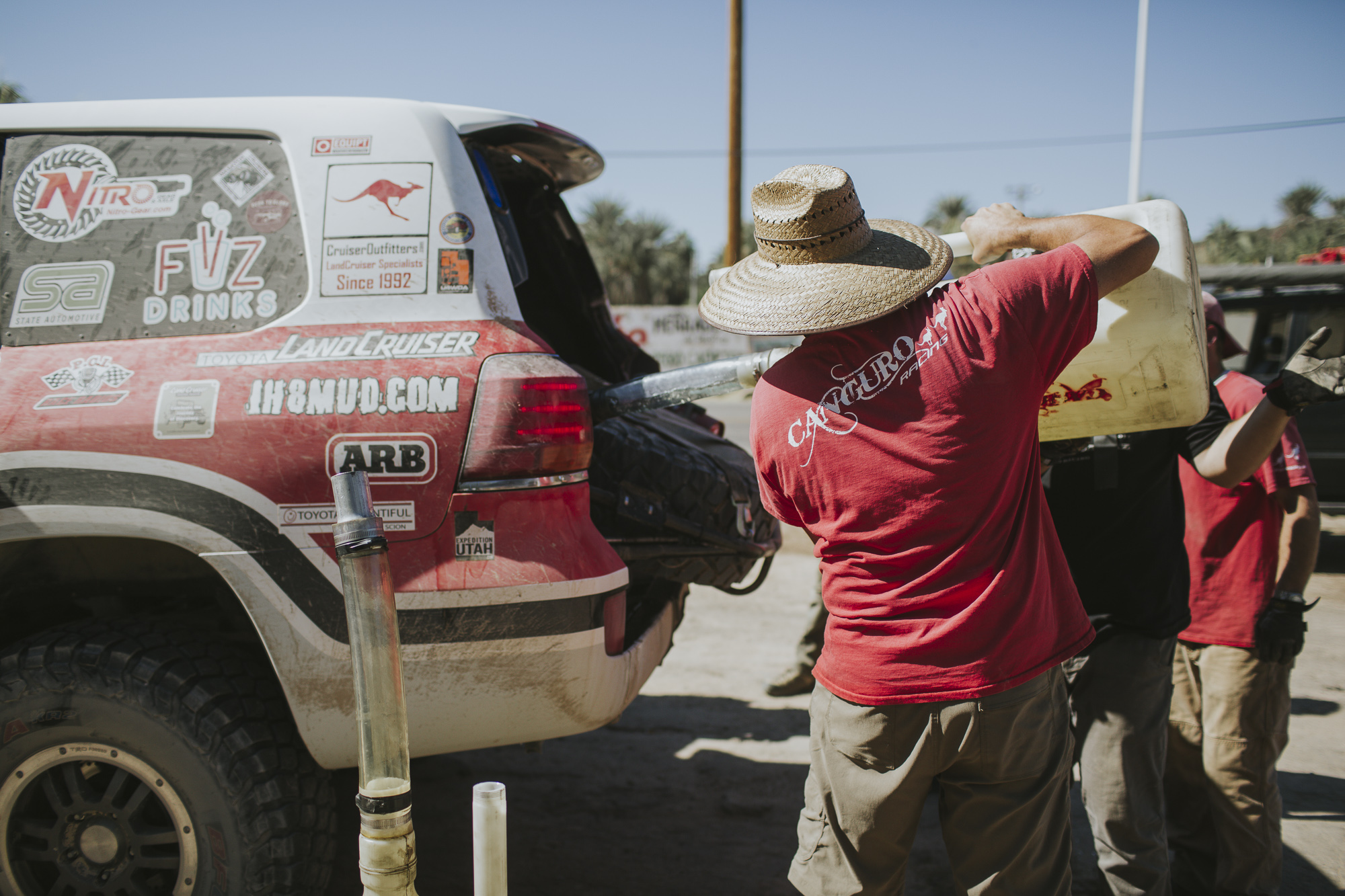

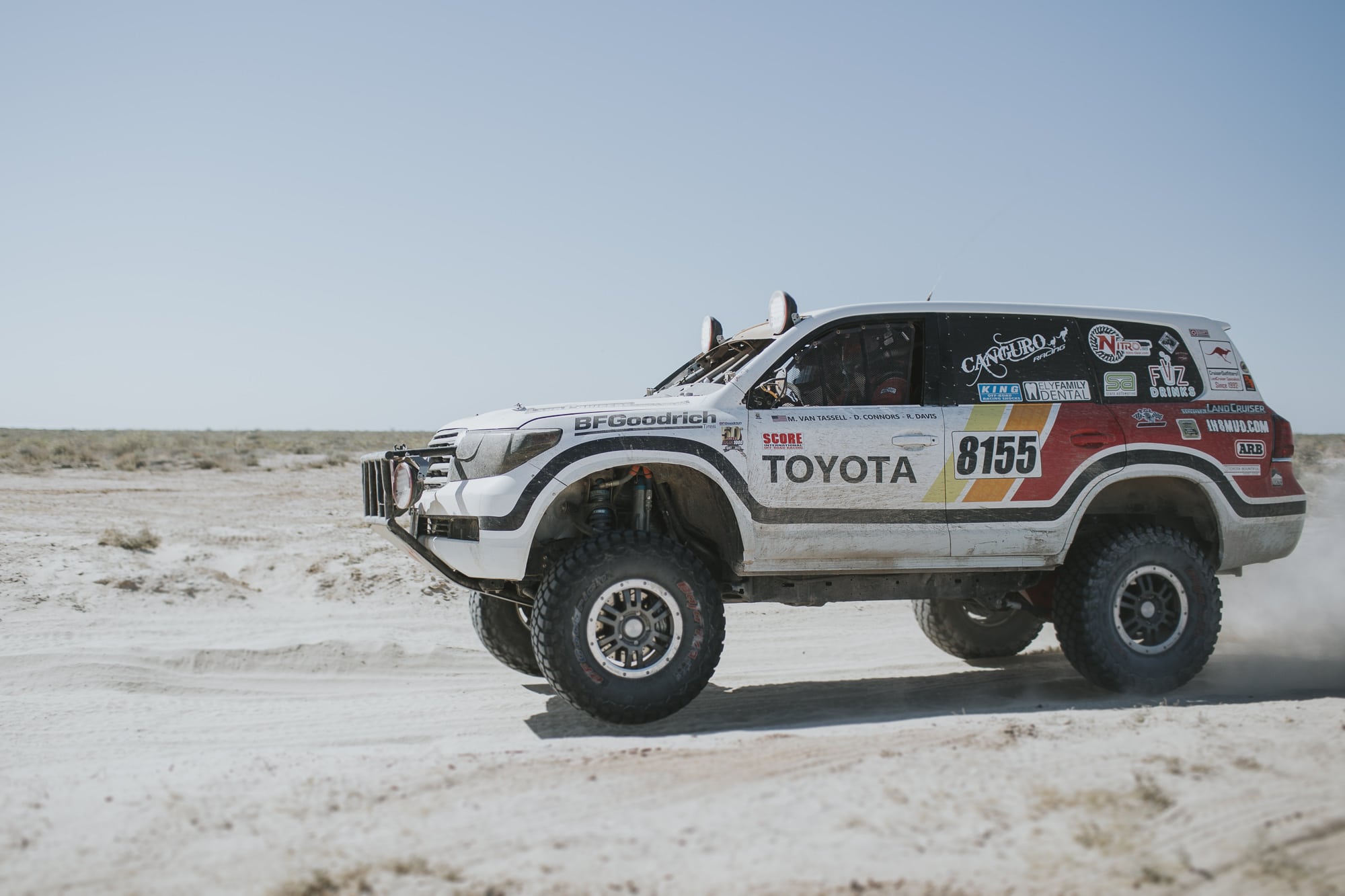
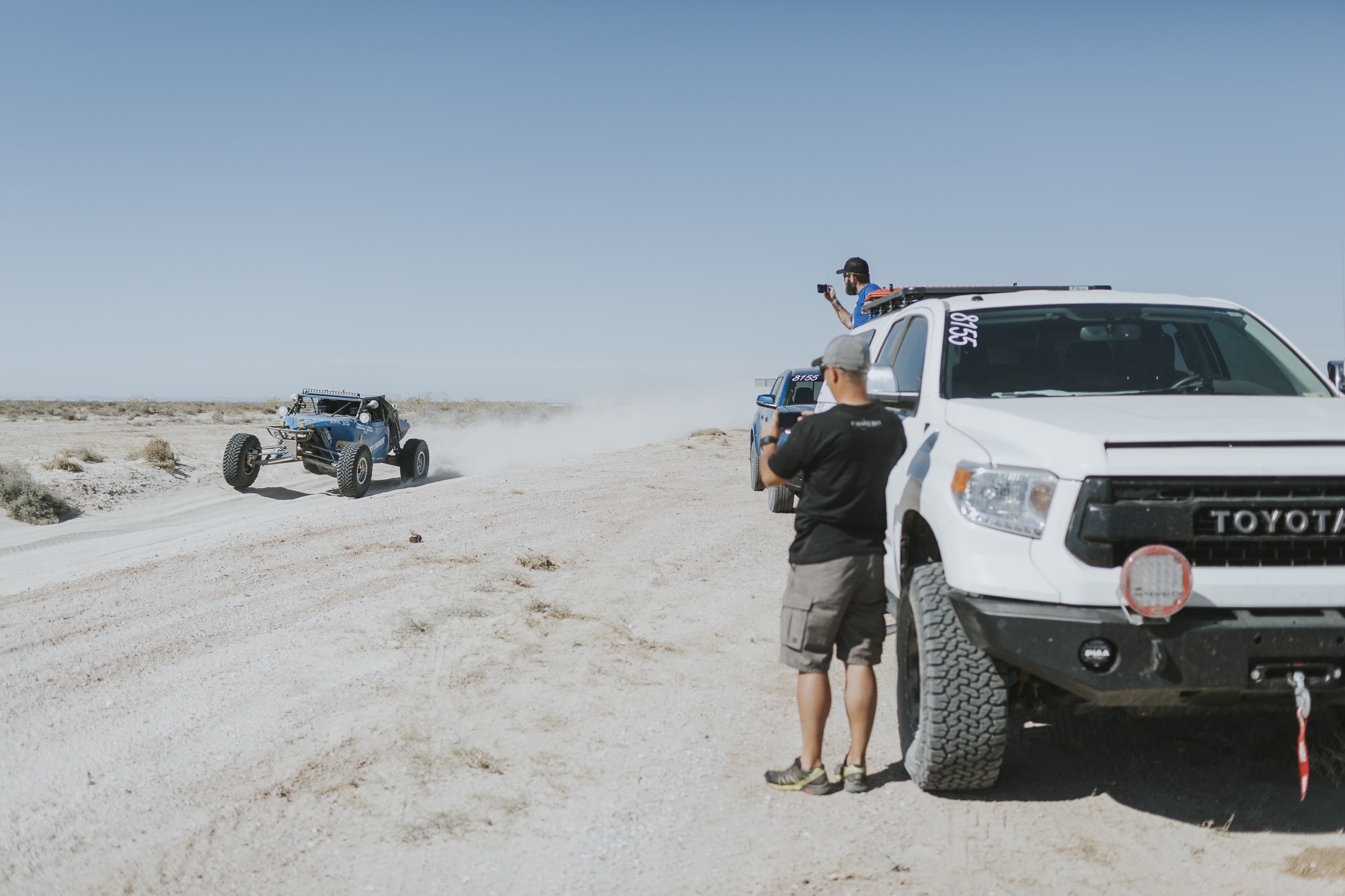
As the sun set for the second time that day we rolled into our position at RM930. We had two hours to wait before Monica arrived, so we closed our eyes for 45 minutes, the only time during the race. The local kids then came out in droves as we snuck a little closer to the race course. These kids surrounded our truck (they can spot the chase numbers and HAM radio antenna instantly) and asked for stickers, sweets, snacks, etc.
We saw the eight ARB Intensity lights on Monica cutting through the fog long before they cut through our retinas. We cheered on Kurt and Ryan as they passed by, relayed communication between Canguro Race and Chase 1, and then were off to the finish line.
At this point the finish line was still three hours of driving away. I’ll be honest, we were absolutely wasted and we were only chasing the event. I can’t imagine what it’s like to add the stress of driving a race truck to the sleep deprivation.
We had been up for 41 hours at this point and the adrenaline from watching the Land Cruiser blast by wore off very shortly. It took a little longer for the spots from the ARB lights to subside from our vision. Then the fog rolled in even thicker. The coyotes (with a death wish) did their best to cross the road, just to get to the other side, and the cows (yes, the rumours are true that the Mexican cows are better looking than US/Canadian cows) decided this was the perfect time to eat the grass on the side of the road. La Paz was the last stop for us, and for everyone else so we continued south.
Even with the fog, cows, and coyotes doing their best to stop us, we joined the rest of the chase teams at the finish line in La Paz at about 2:00am.
The once 3 hour deficit had been chiseled down to a mere half an hour. We watched our phones intently as the webchasers updated our location in relation to the Hummer which was still in the lead. Twenty five minutes behind. Twenty minutes. At the very end… sixteen minutes. And that’s when Canguro ran out of race course. Over 37 hours of racing it came down to a mere 16 minutes.

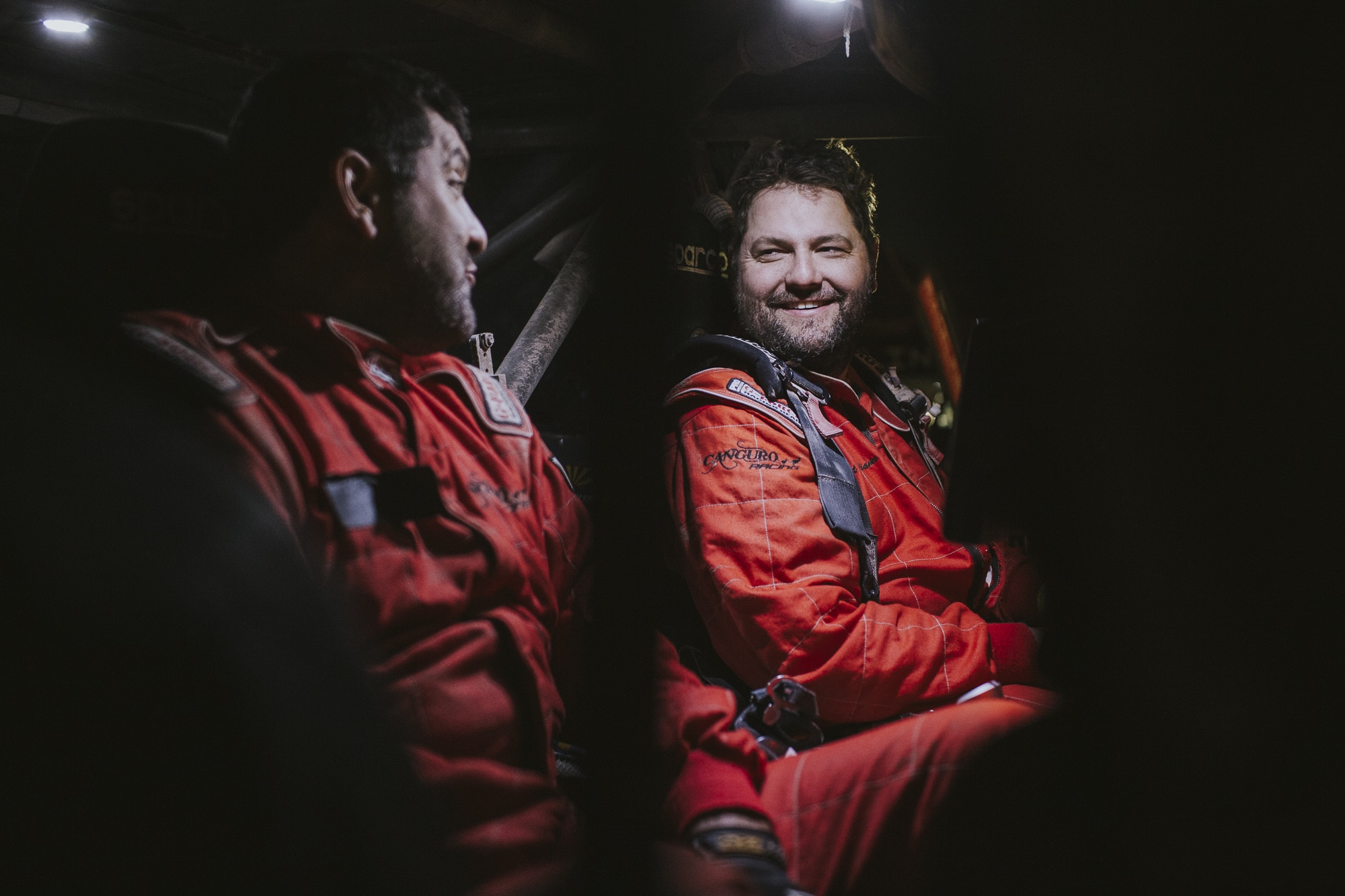



We had a very small role to play in the actual chase plan, but were fortunate to be a very real part of the action. Mentally, there were extreme highs along with serious lows. The adrenaline magnified the highs and the lack of sleep exaggerated the lows. At points during the race I told myself it would be the only time I would be involved. Putting myself and my friends in any sort of undue risk one time would surely be enough, right? Well, wrong.
Four hours of sleep was enough for us to look at our experience with a little more clarity. It is difficult to explain the challenges involved with driving 1400km in one waking day while providing support to the team and photographing/filming the entire thing. My memories will be the dust, smell of race fuel, sound of 800hp V8 engines, rush of adrenaline, sleep deprivation, fish tacos, friendliness of locals, and most importantly the camaraderie amongst the team (now, our good friends.)
I’m 100% in for 2018 and getting goosebumps on my forearms and a shit-eating grin on my face just thinking about it.
Make sure to check out Dave’s post on www.canguroracing.com for details of the race from his point of view.

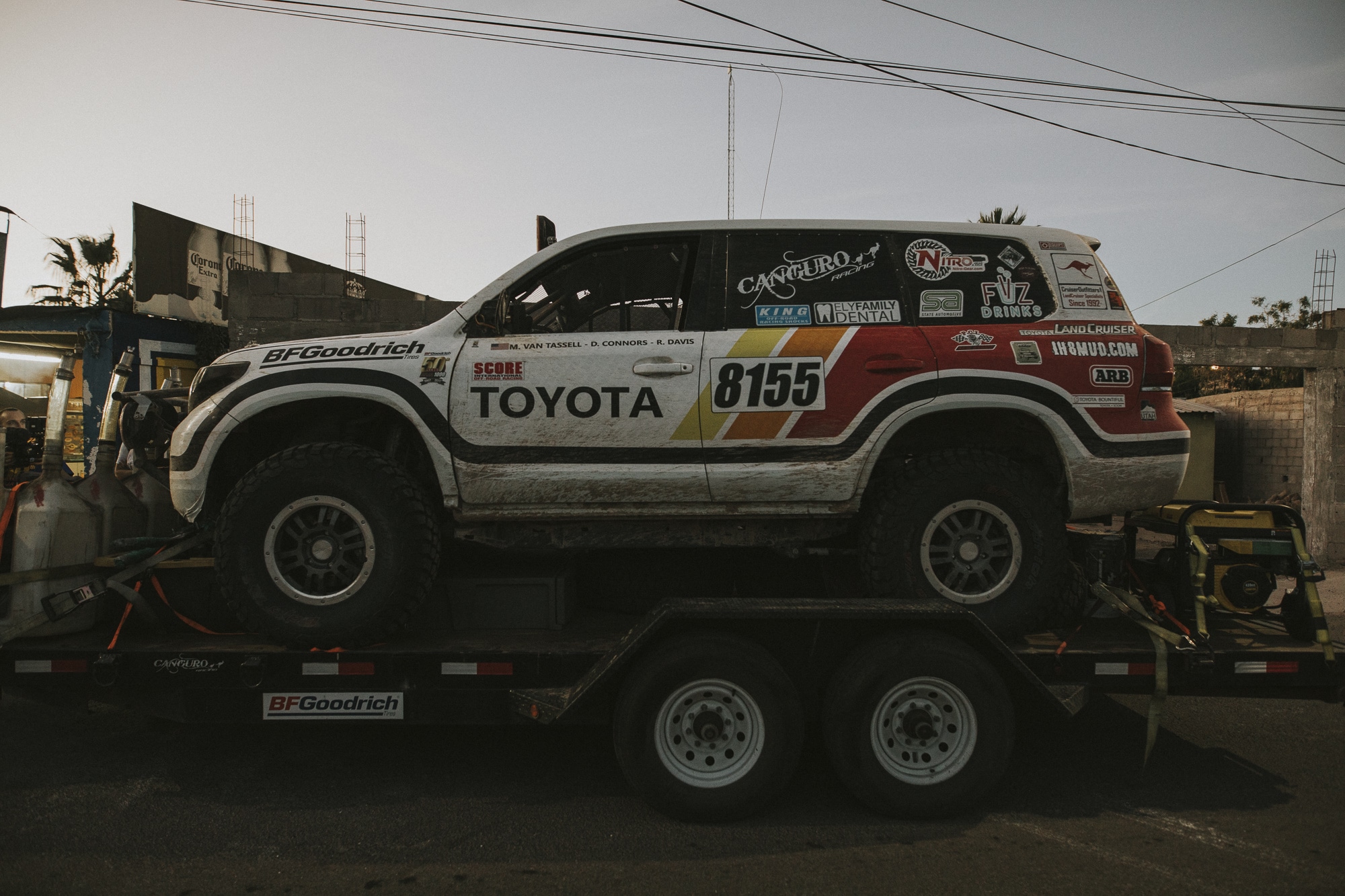
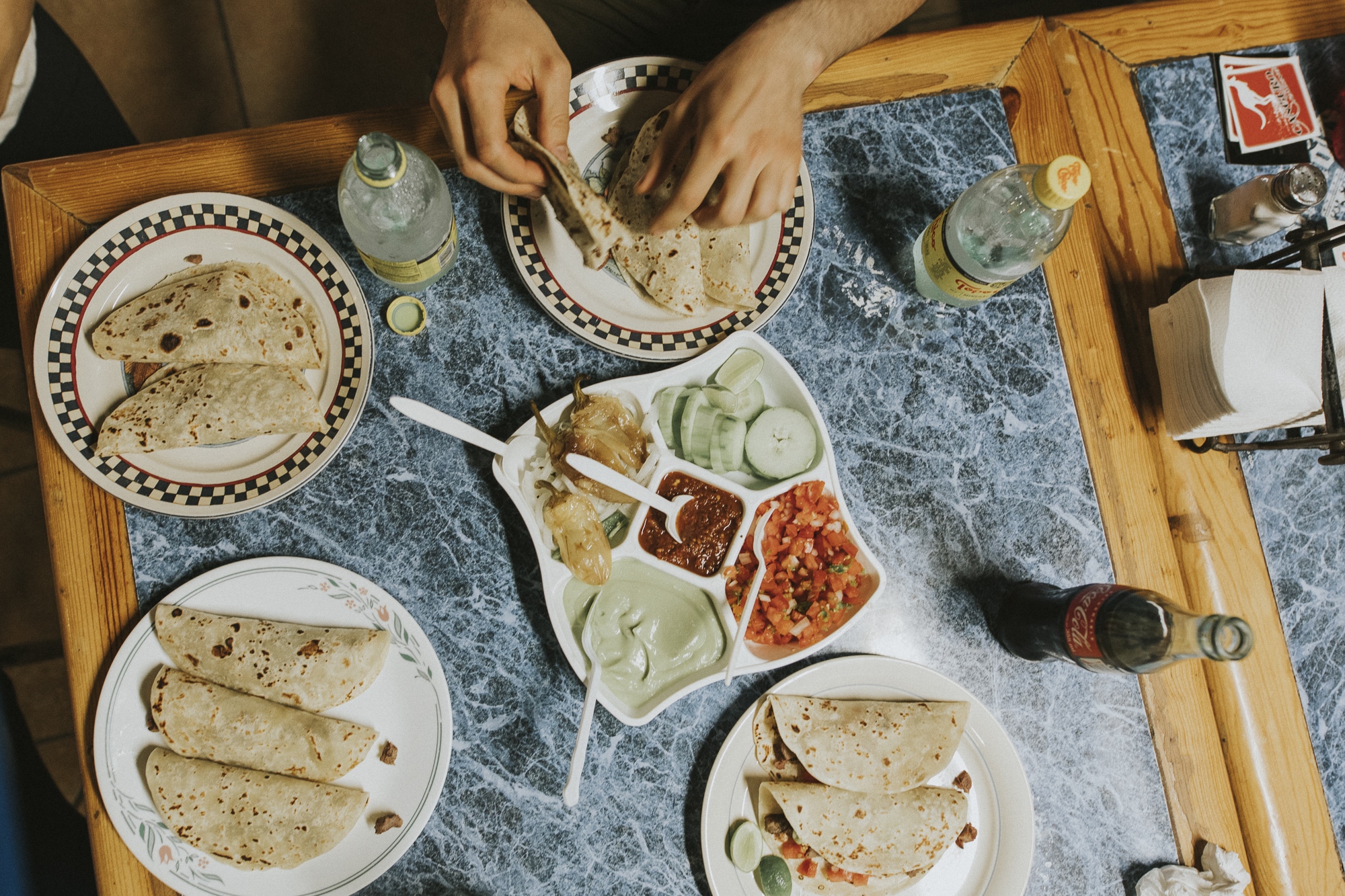
Oh yeah, and for a little sneak peek as to what we’re currently working on for Toyota Canada. We’ll be producing three short films documenting our trip from Toronto to Ensenada, MX and then for the uninterrupted 48 hours as we chase Canguro Racing for the Baja 1000. I am sooooo excited to share the sights, sounds, and stories of Baja with you. In the meantime, here are a few still frames from the Sony FS5.
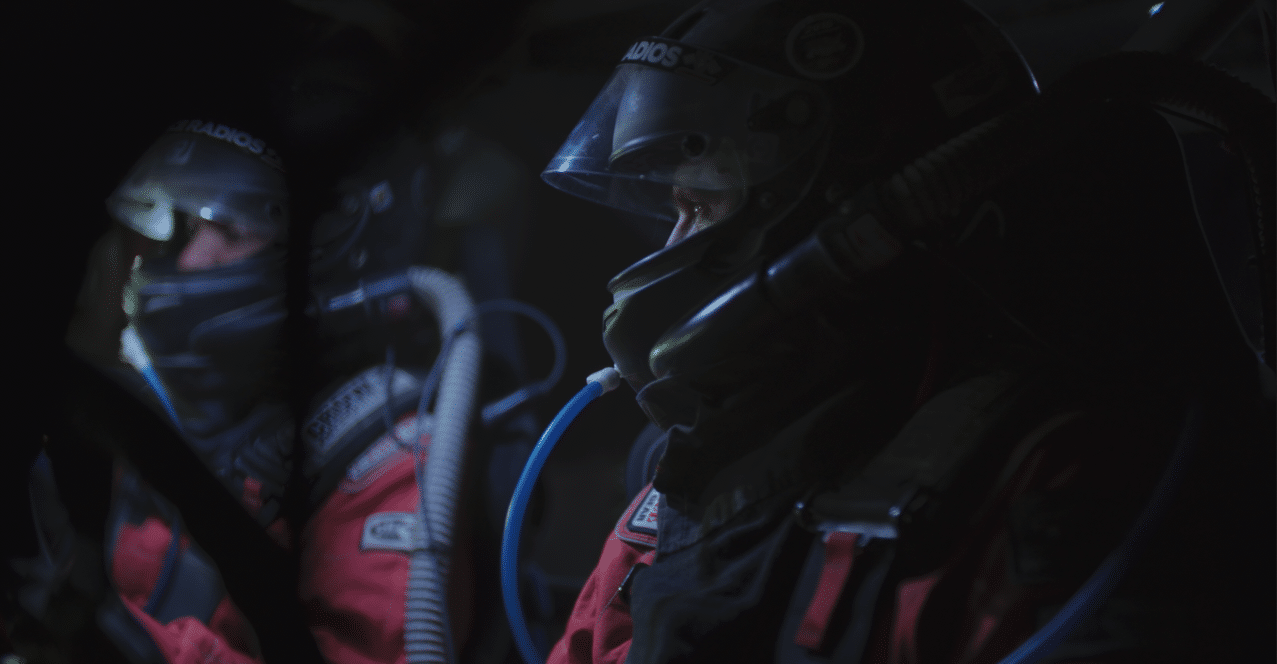
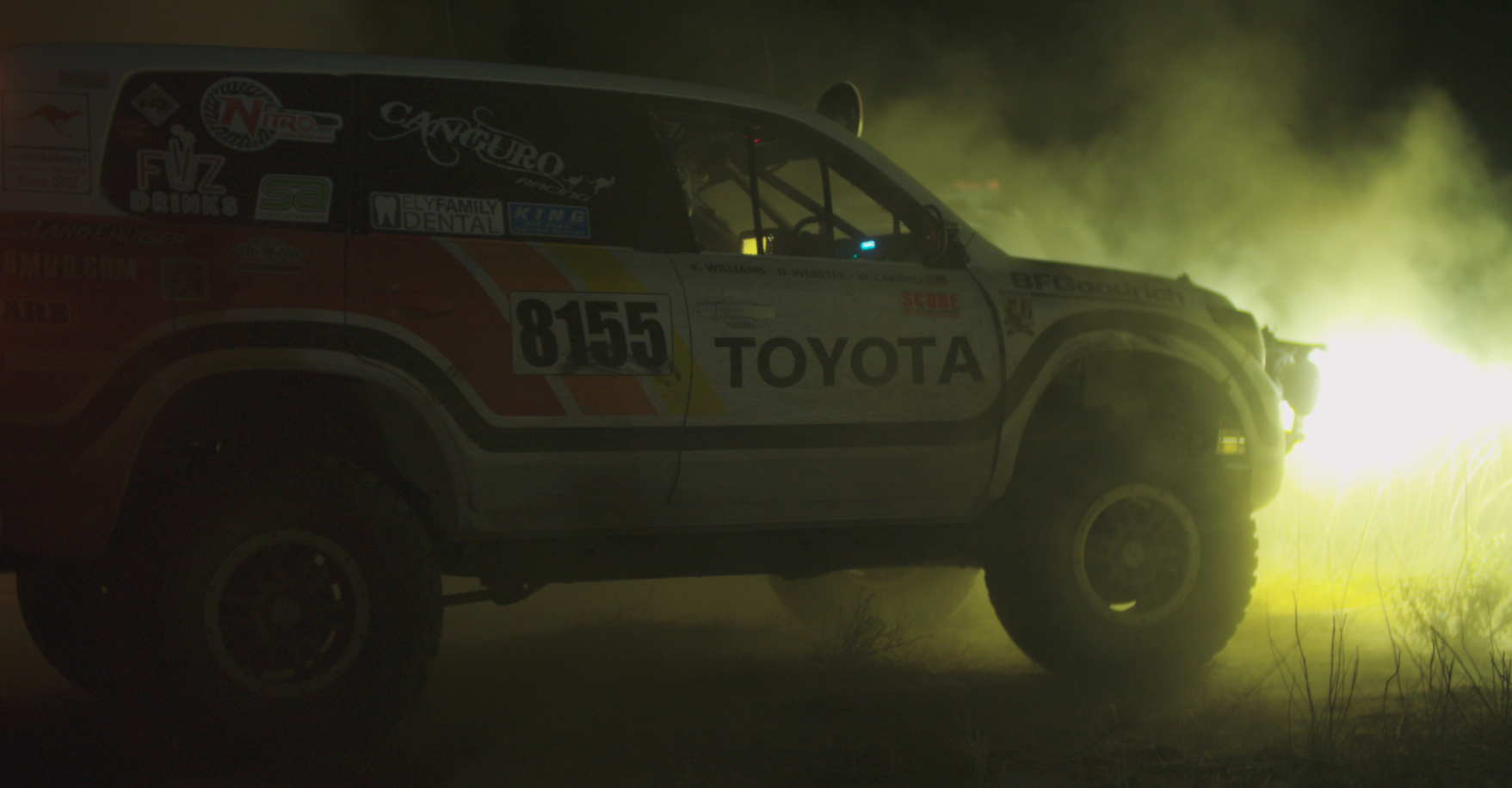

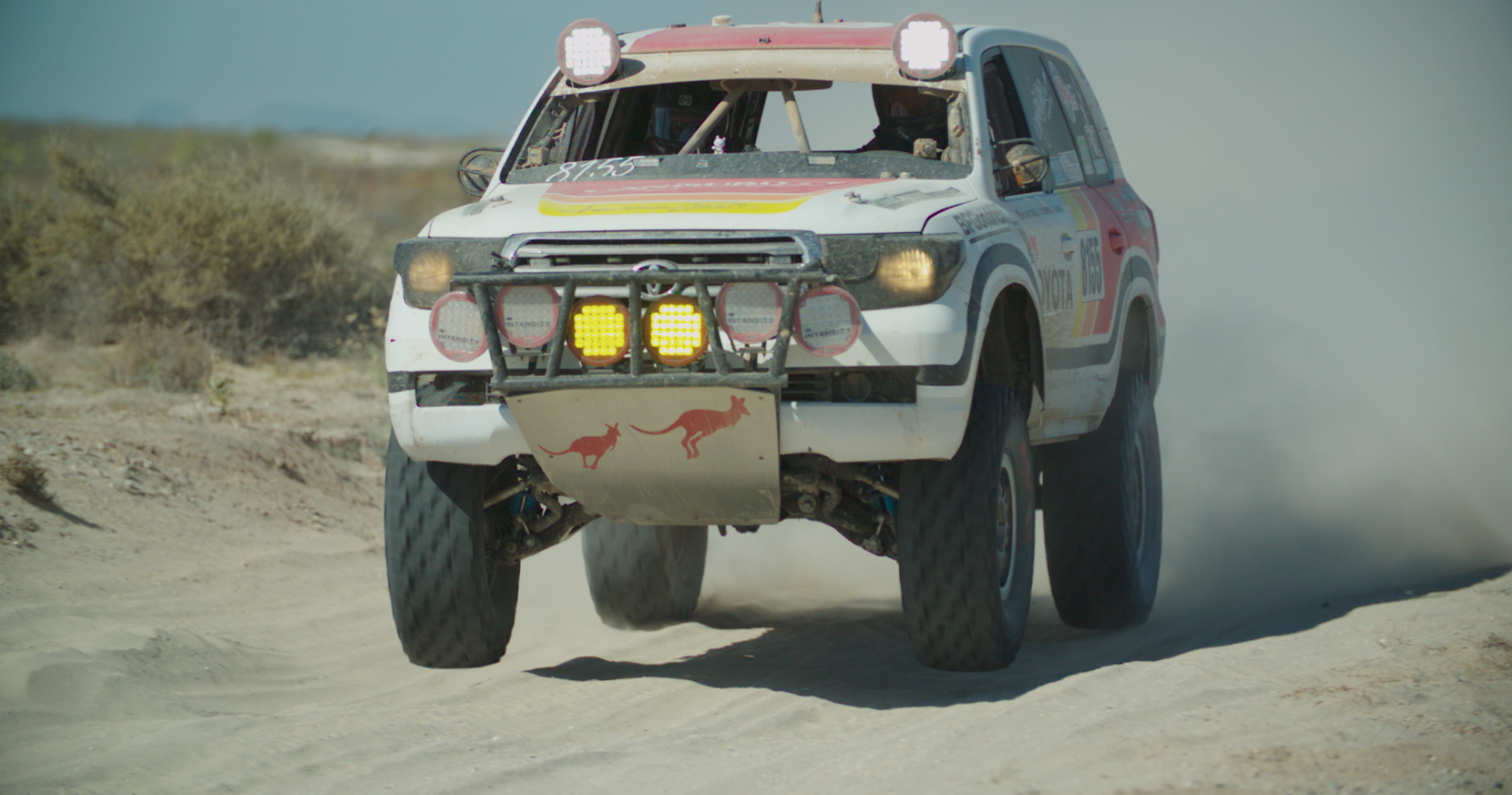

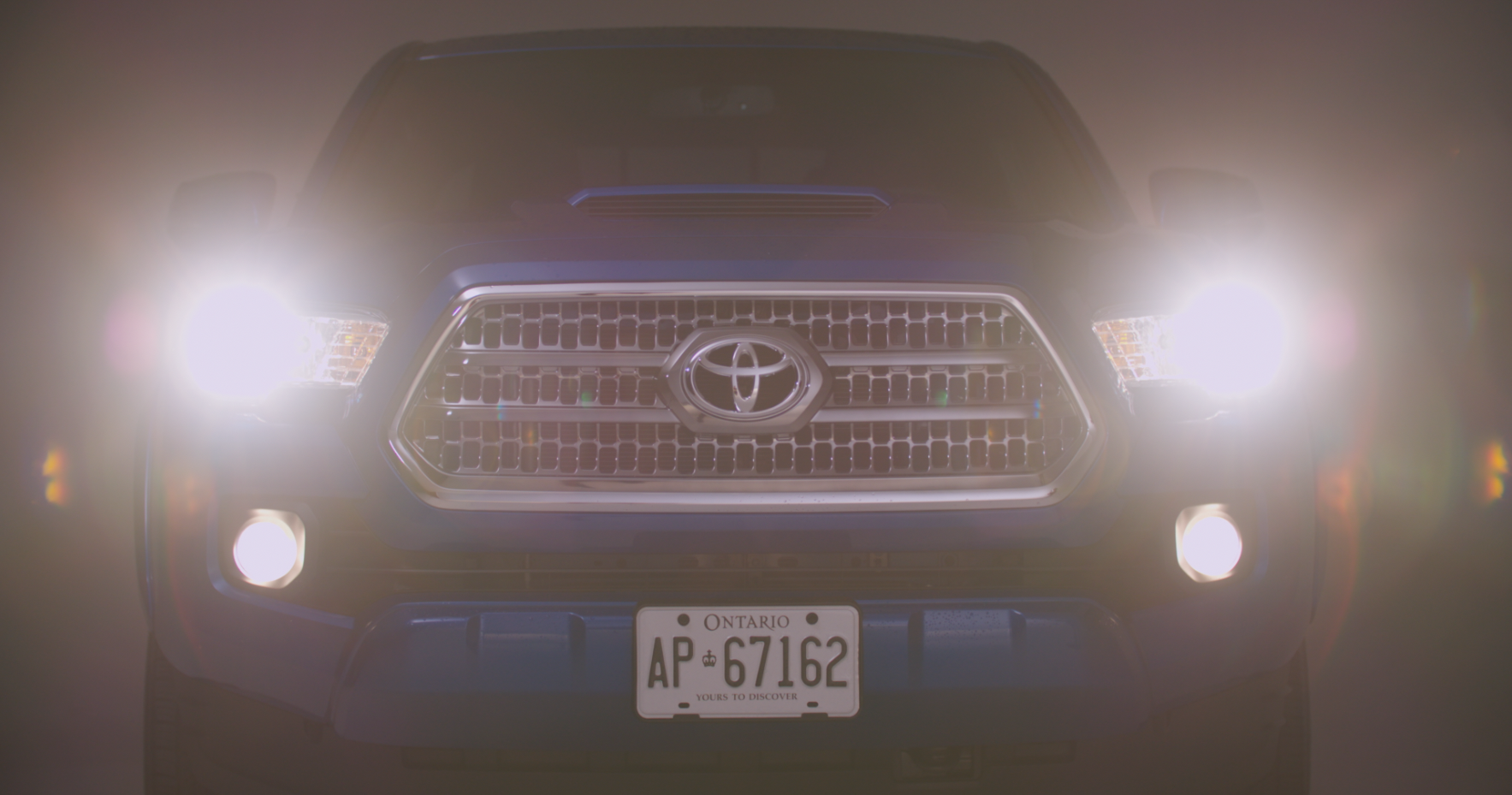
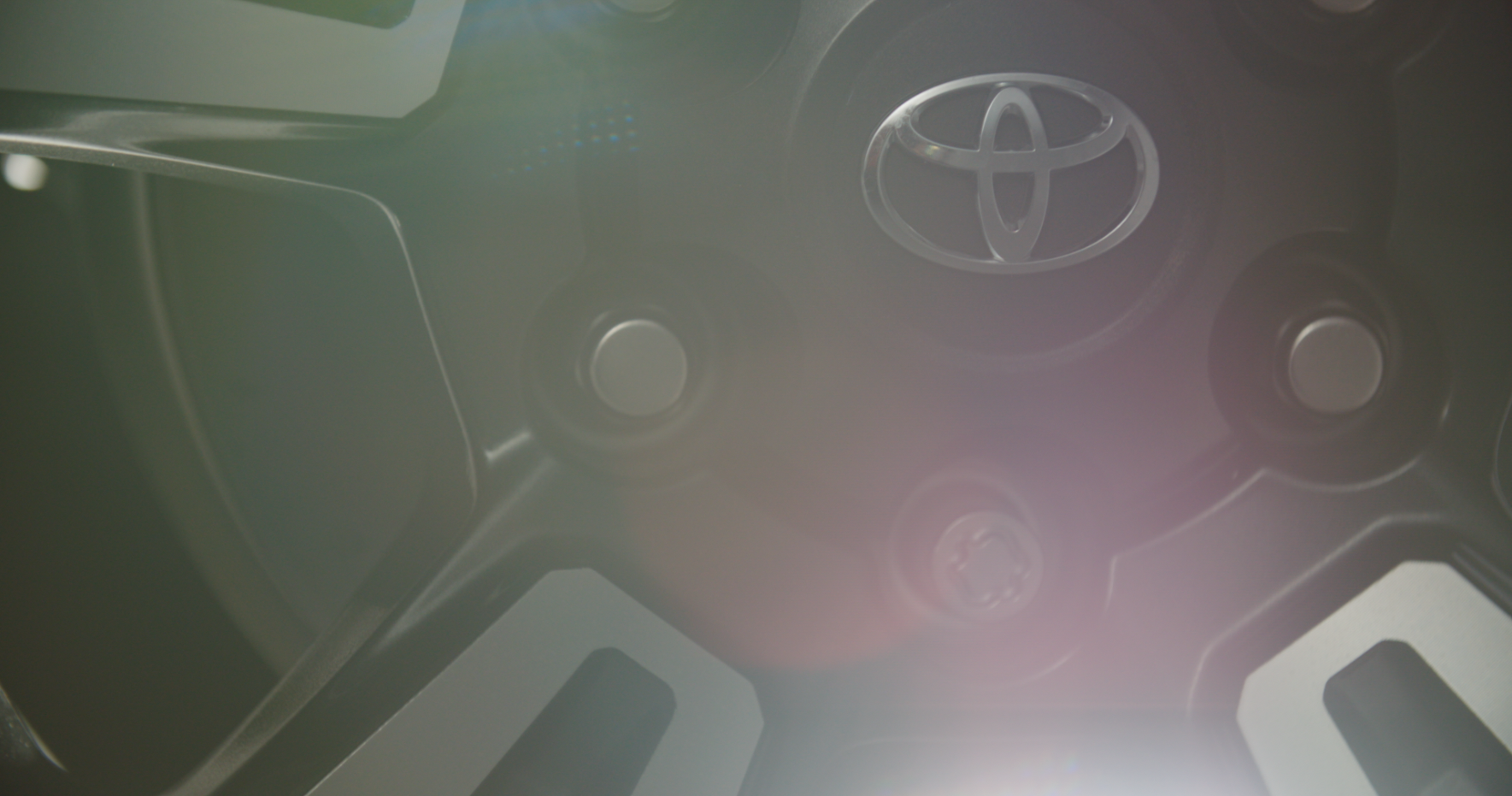

That’s a bad ass summary of a bass ass event. Great to have you guys along!! Pleasure meeting you.
Awesome right up. Very cool to hear the perspective of Chase 8, which reminds me that I need to write down my story from Chase 1 before the memory fades. Looking forward to seeing you again in 2018. And equally excited to see your films.
So much happened between the first time I met the Chase 8 team until we parted ways. This is an amazing summary of that time. Thank you
Awesome write up and photos! I love your blog and am excited to see what other adventures you and your wife have brewing. I love to watch Expedition Overland, so it is cool to see Kurt in your photos. He’s a busy guy! Can’t wait for your next blog post!
We’re at write up and pictures, always wanted to join them but never did. Look forward to your video if we are lucky enough to get to see it.
Great write up and pictures! Took me right back to being there with you!
Interesante blog . Aprendo algo con cada sito web todos los días. Siempre es estimulante poder disfrutar el contenido de otros bloggers. Desearía usar algo de tu blog en mi blog, naturalmente dejare un enlace , si no te importa. Gracias por compartir.
Hey Richard,
Great stuff. Looks like one heck of an adventure. Cant wait for the film.
Whats next?
Pingback: You Just Go Back From An Epic Overland Journey - Now What?